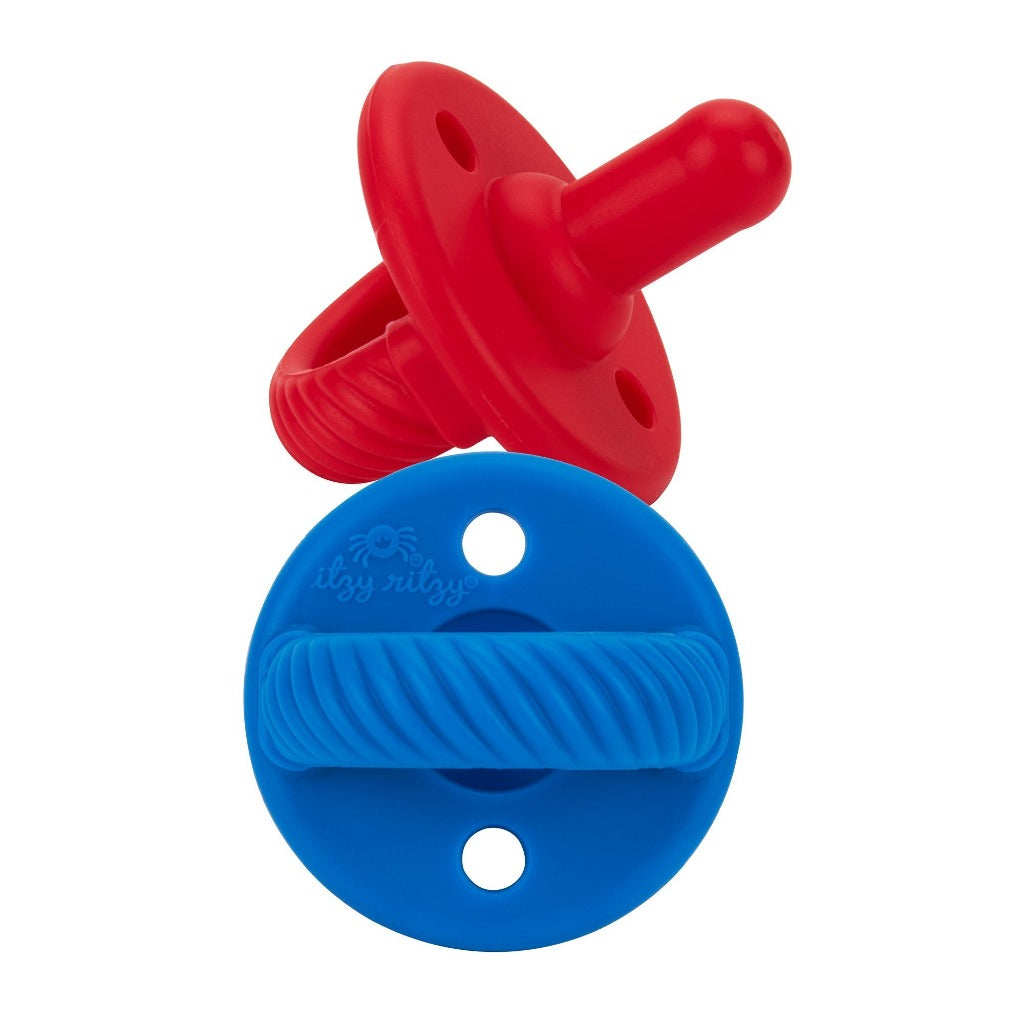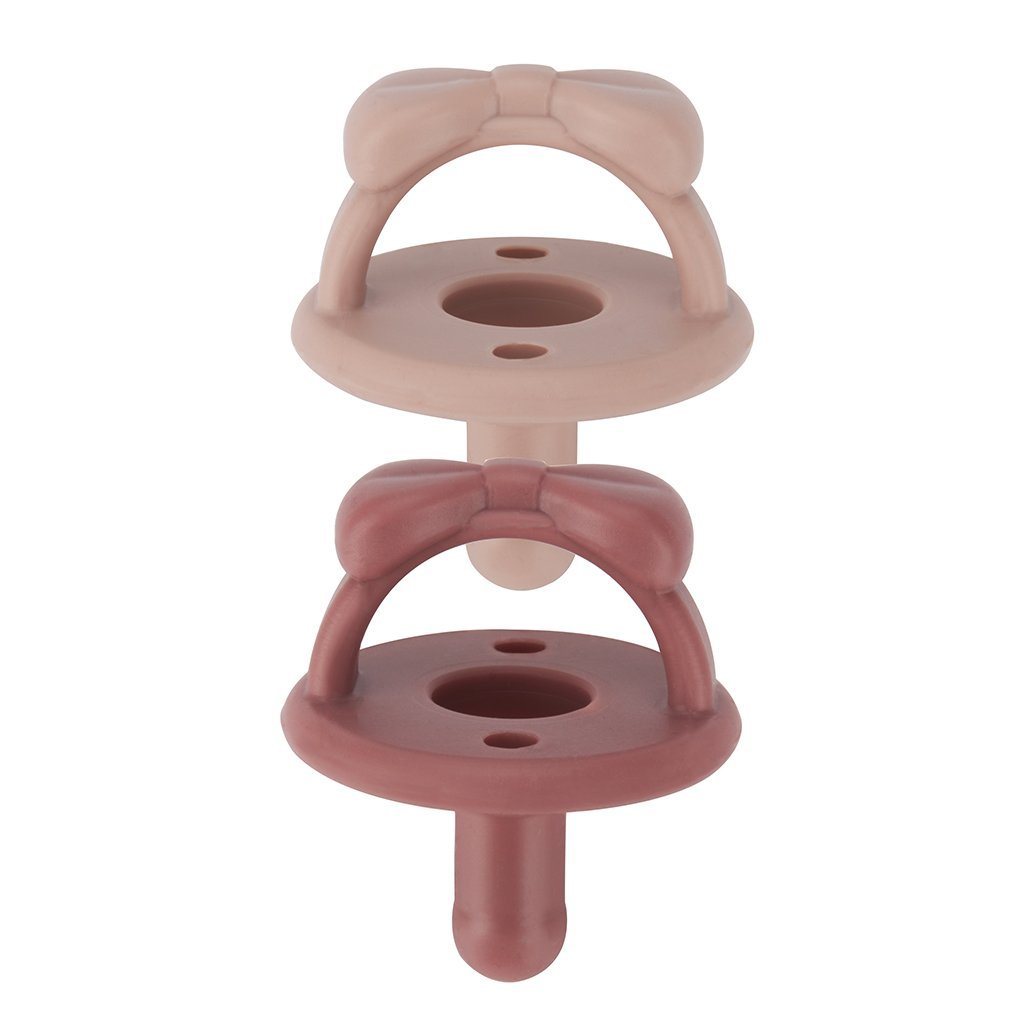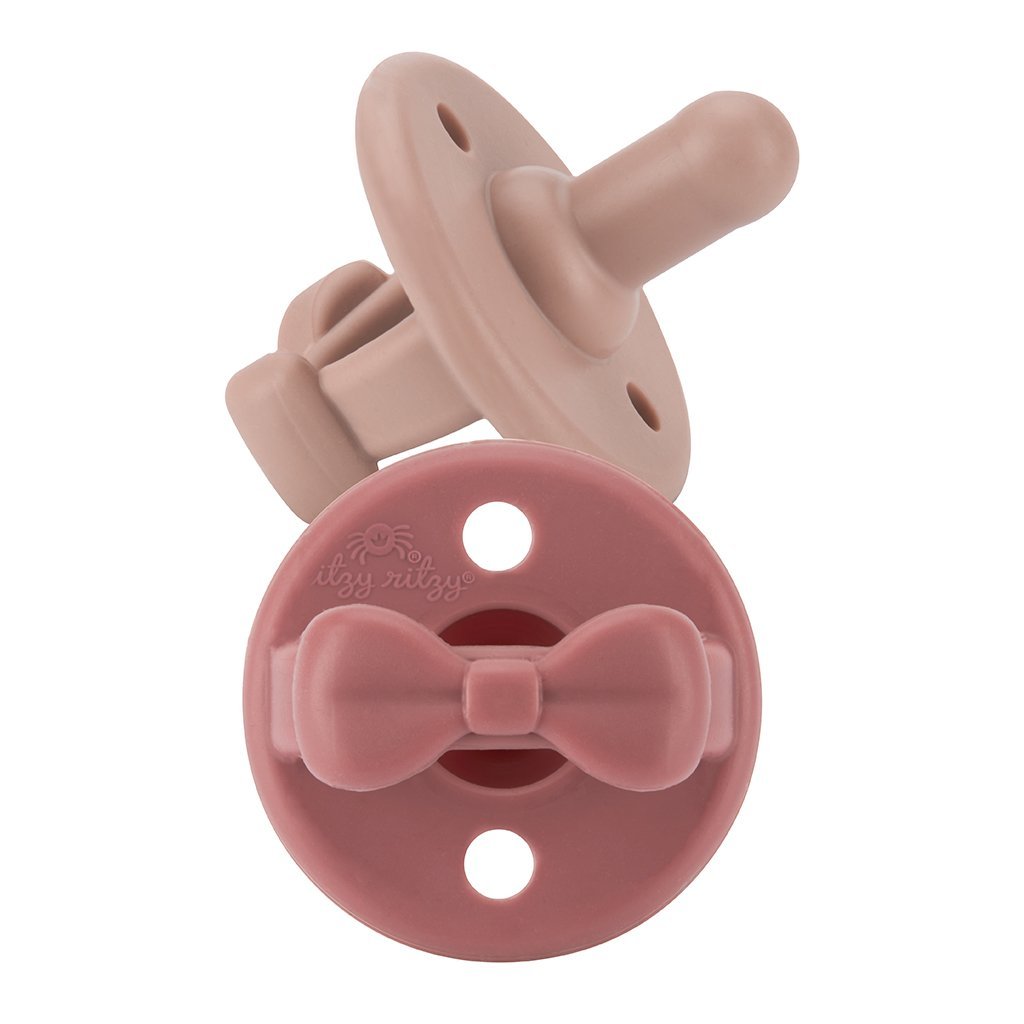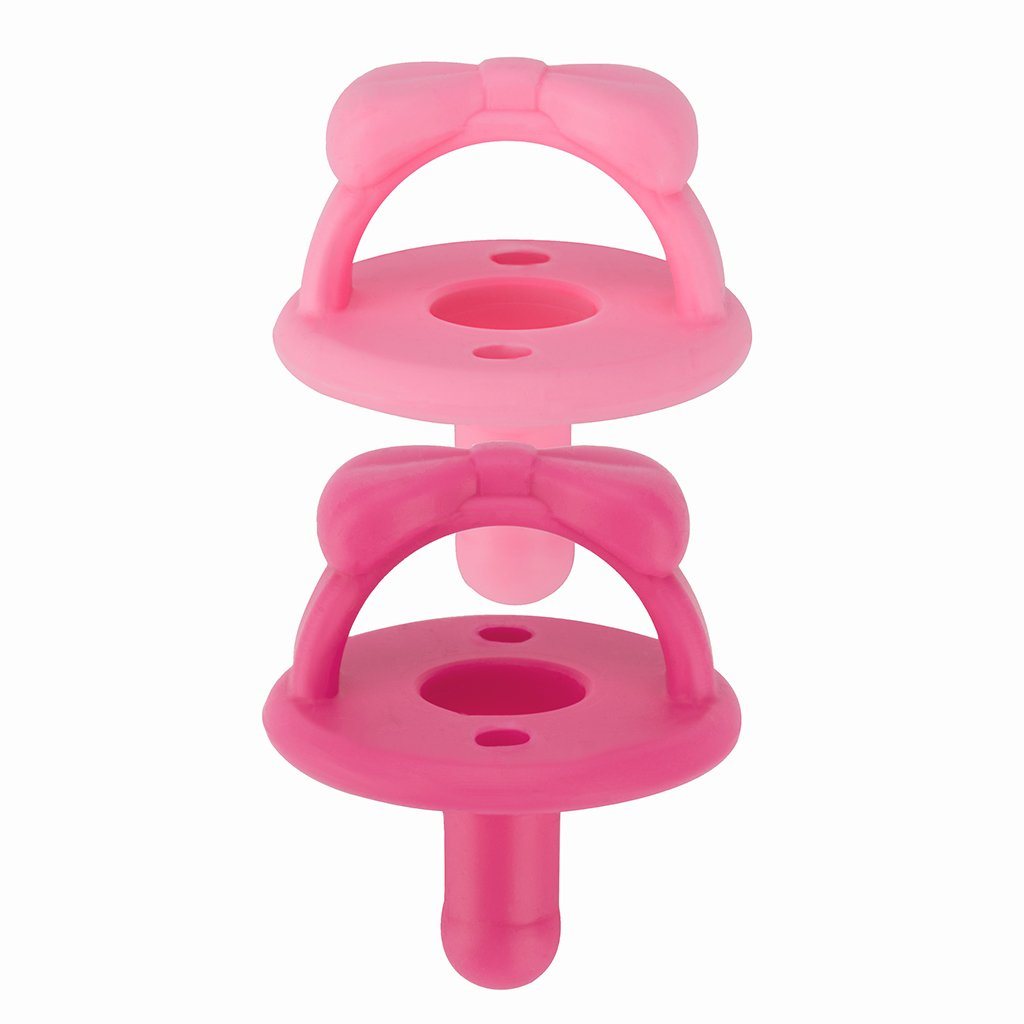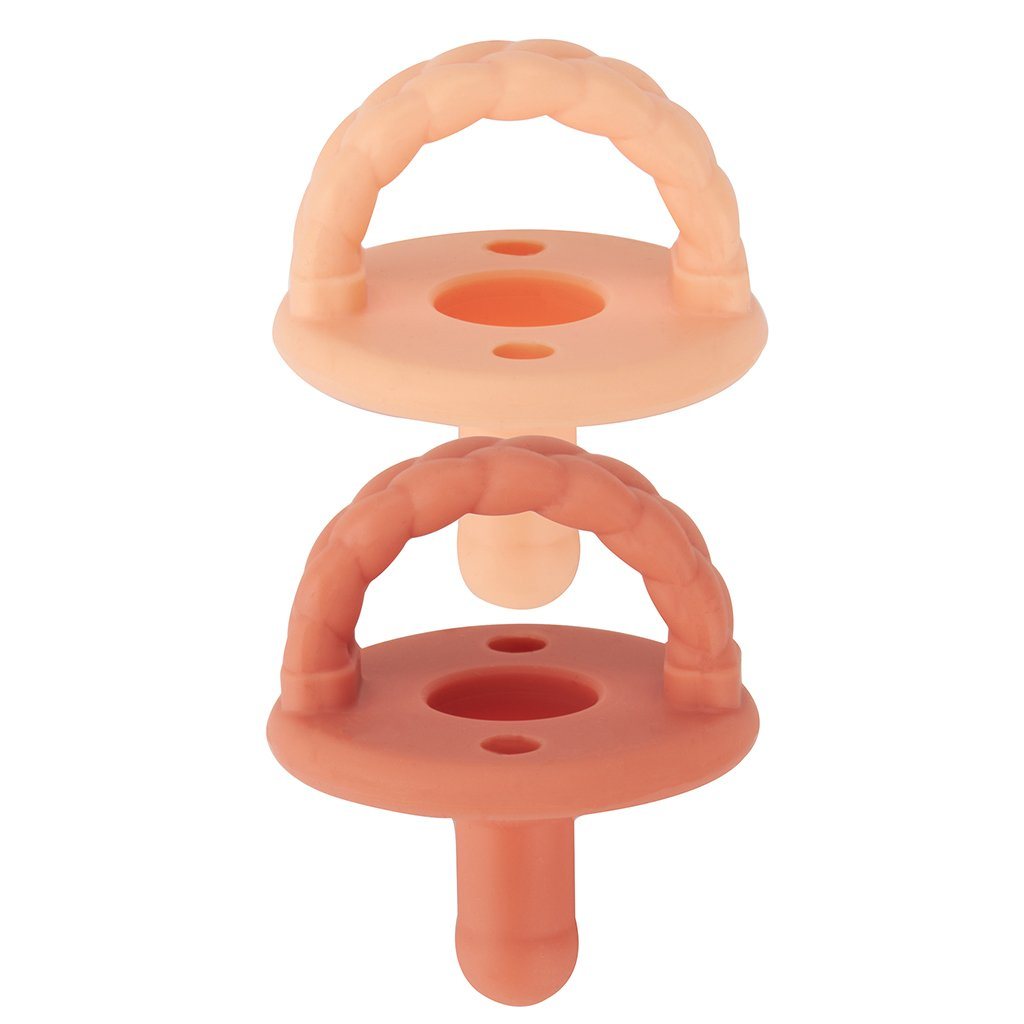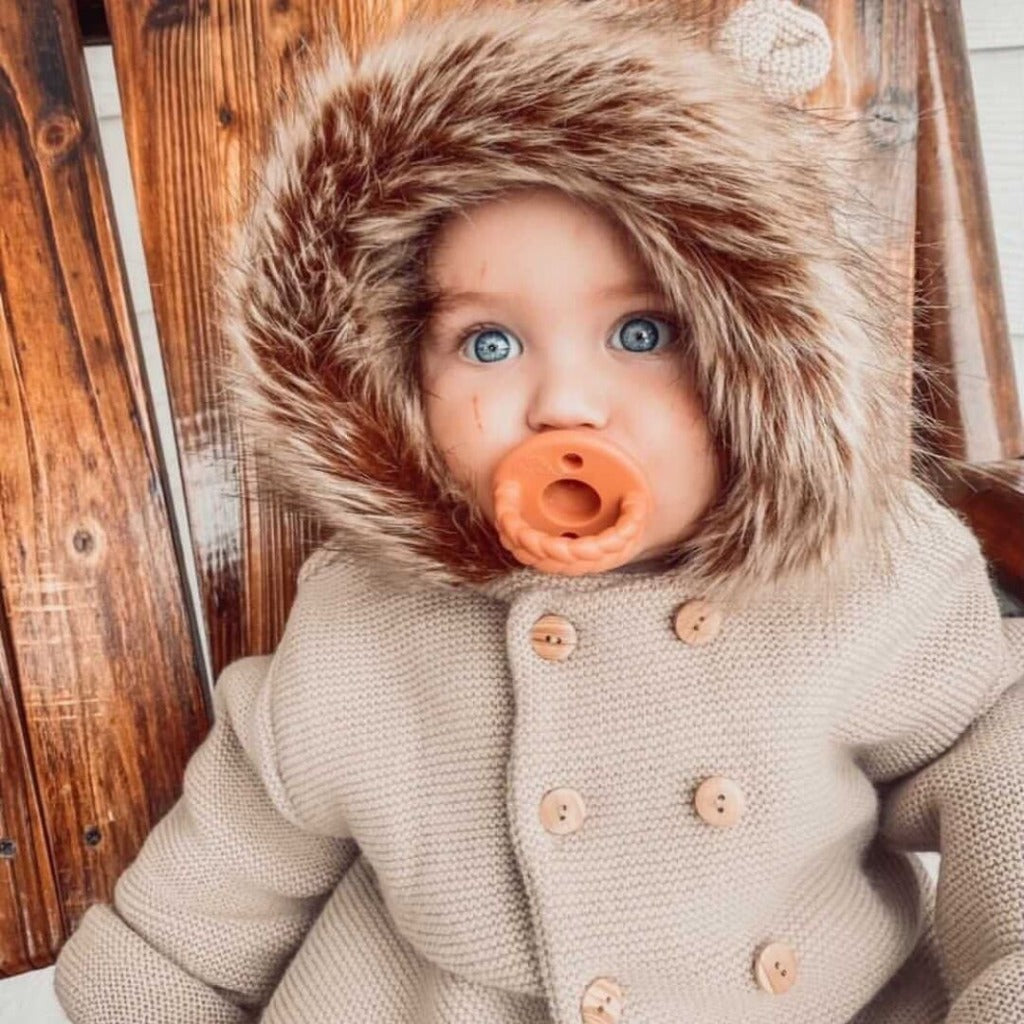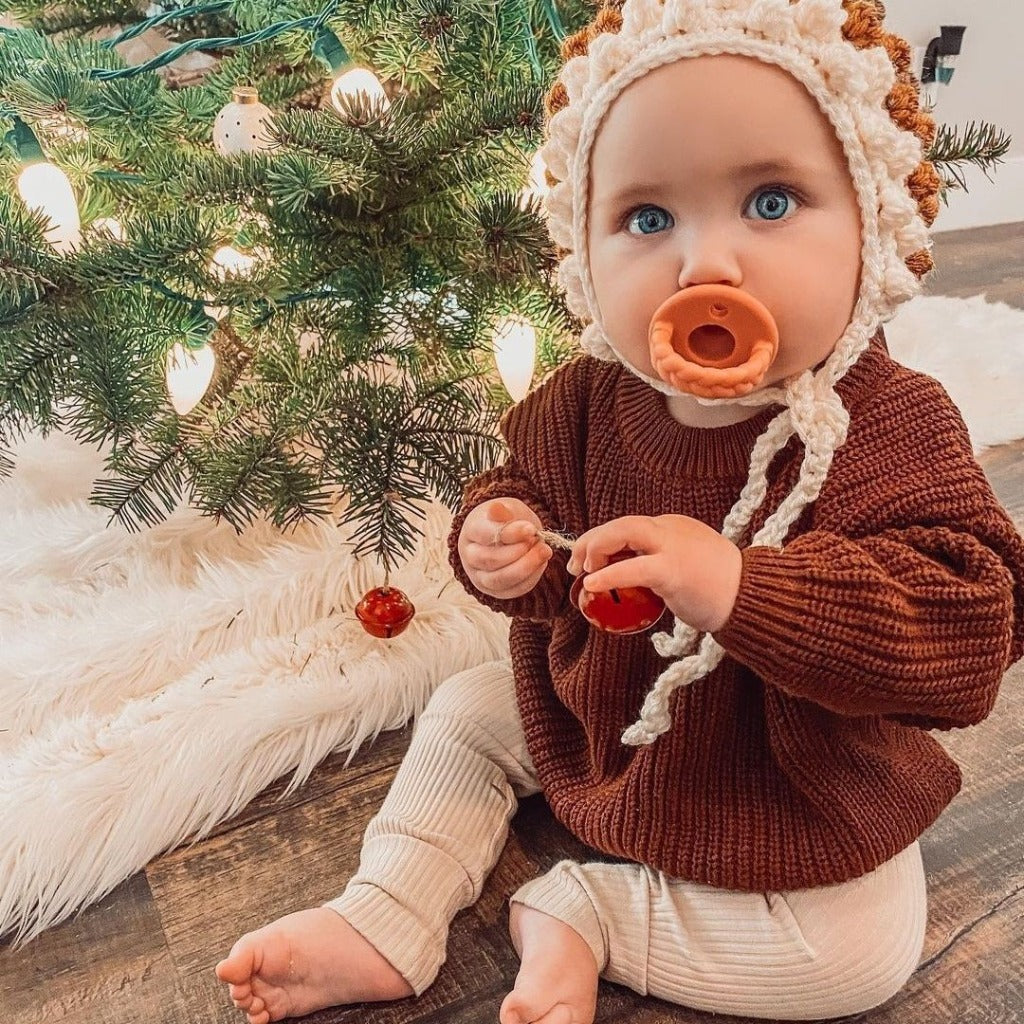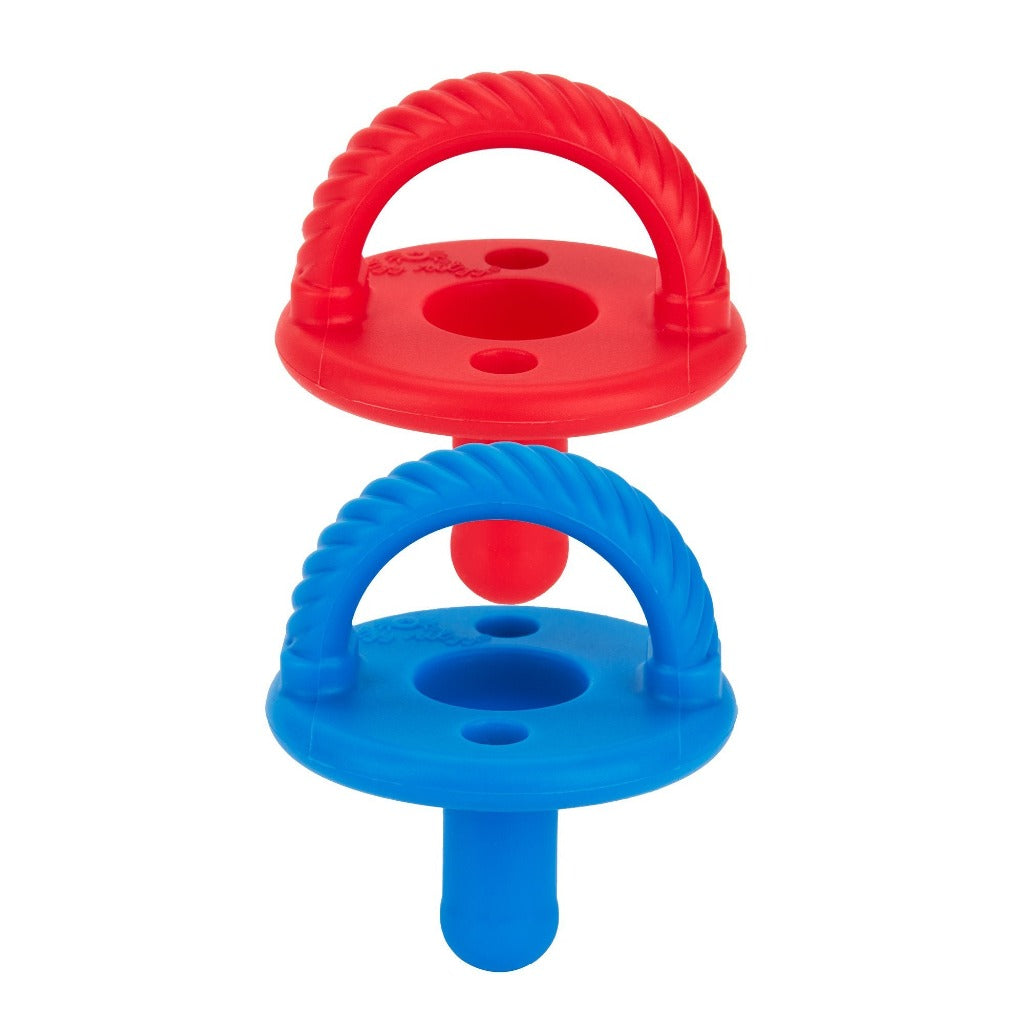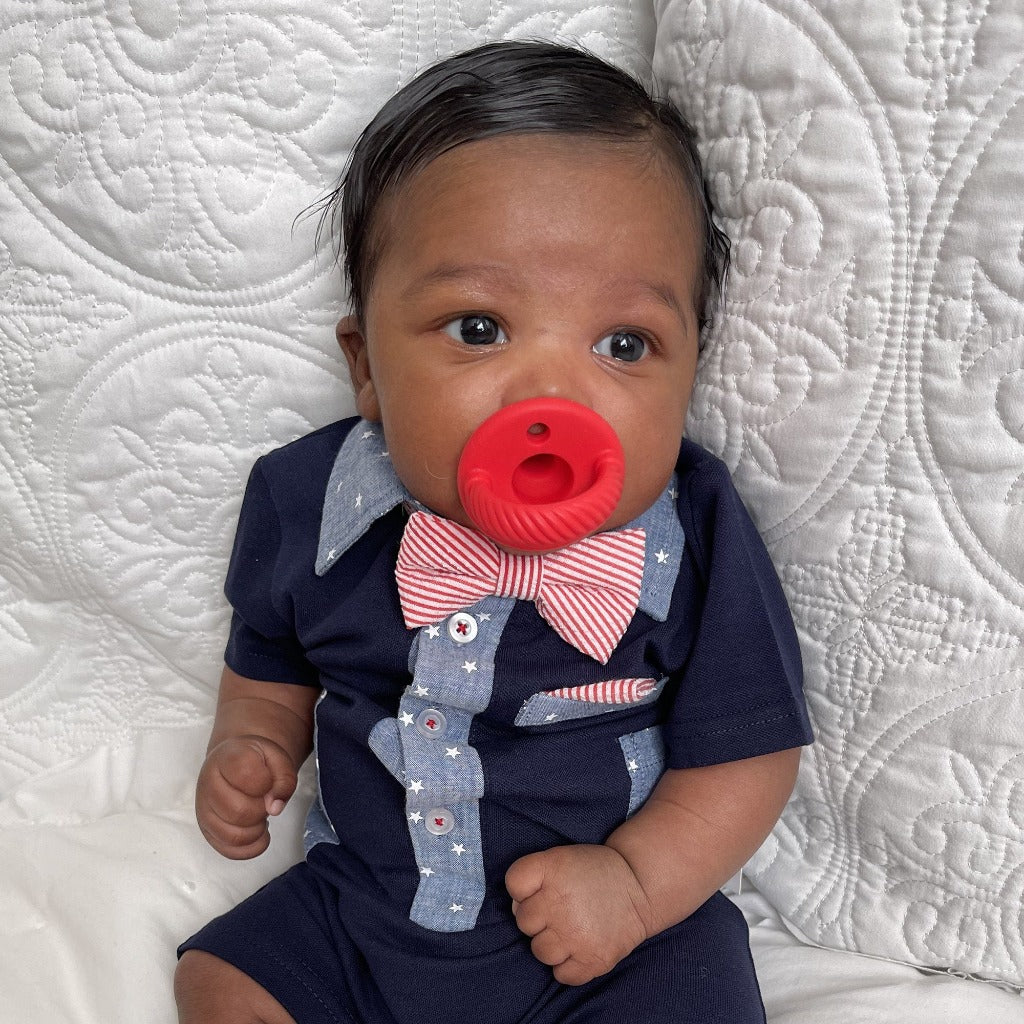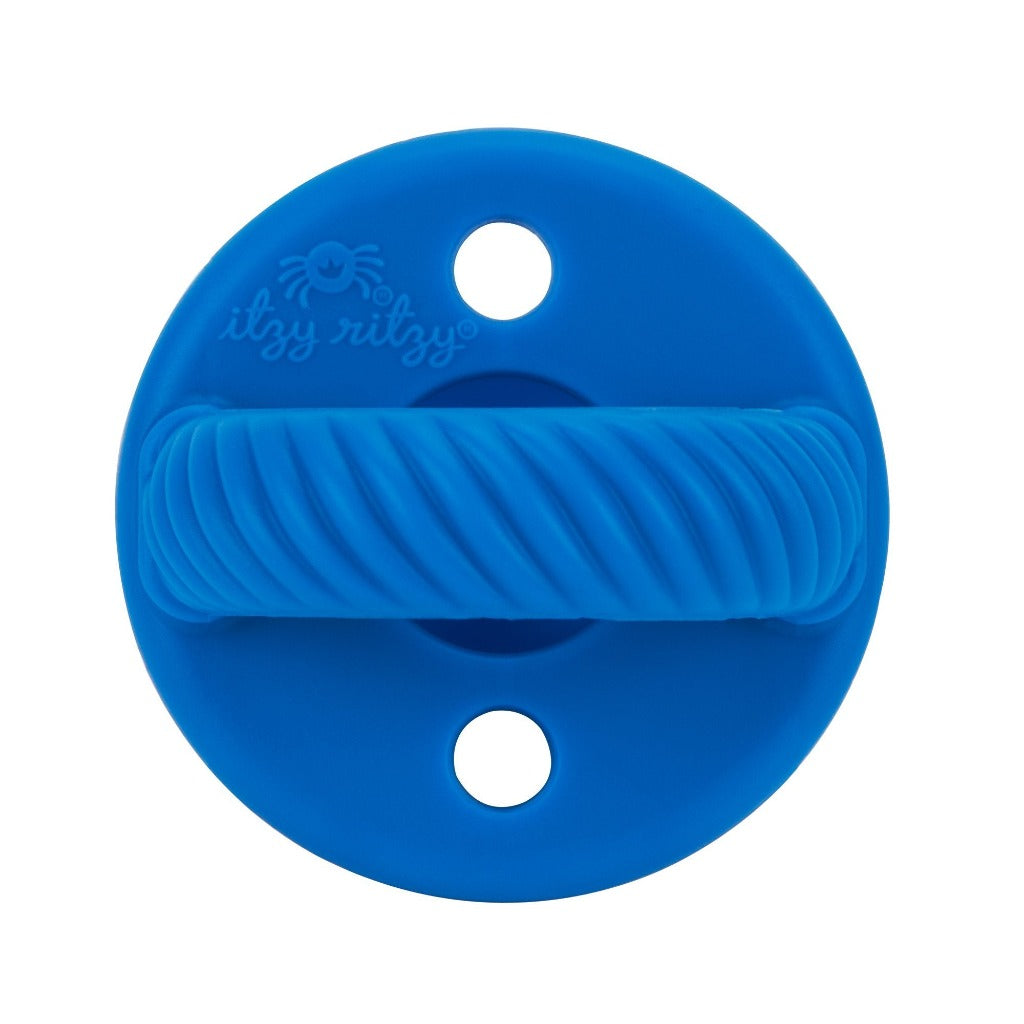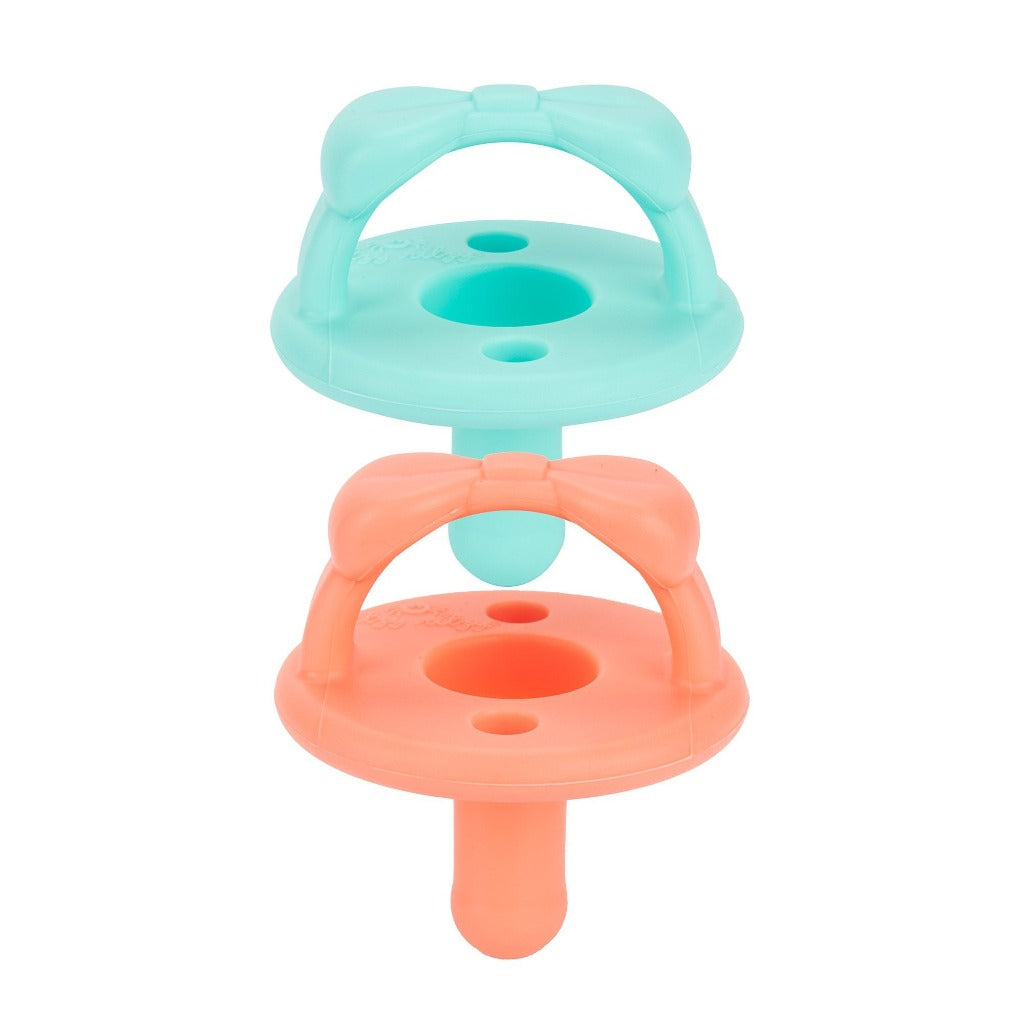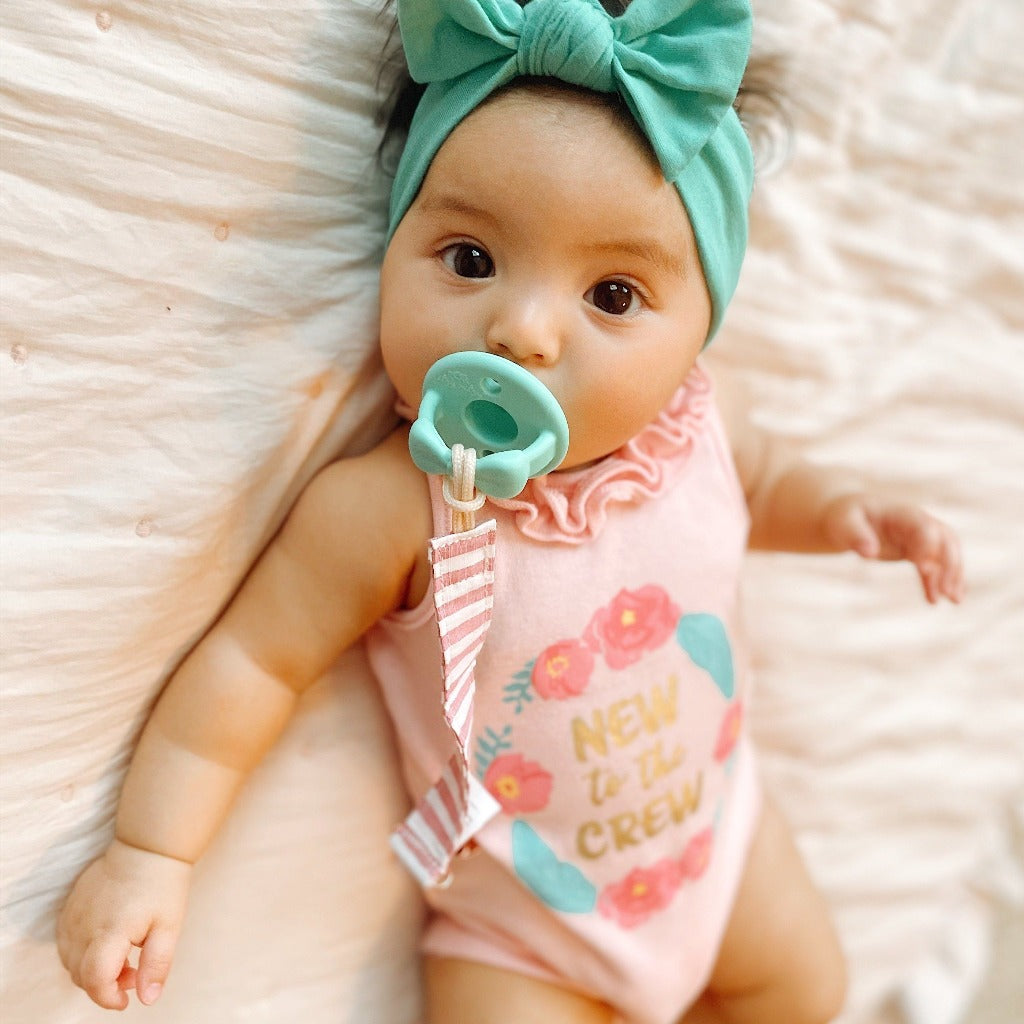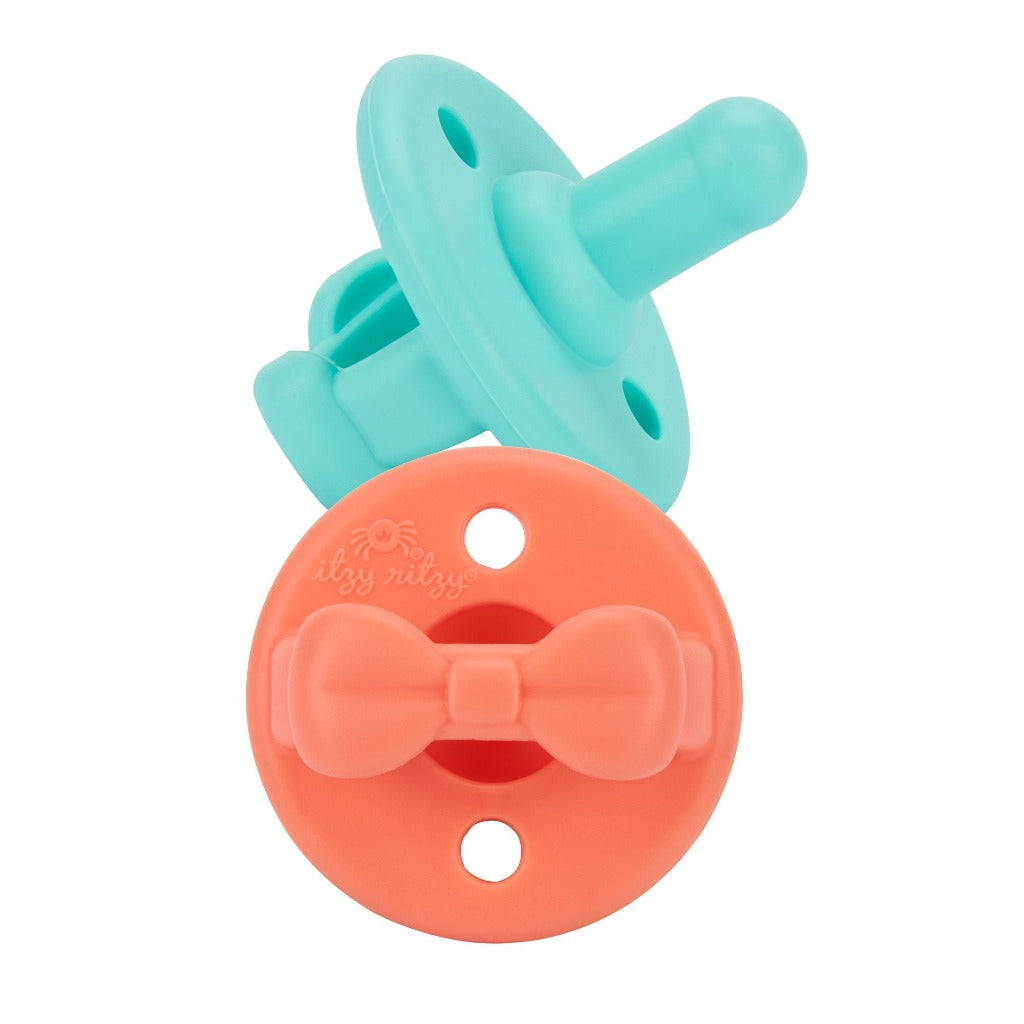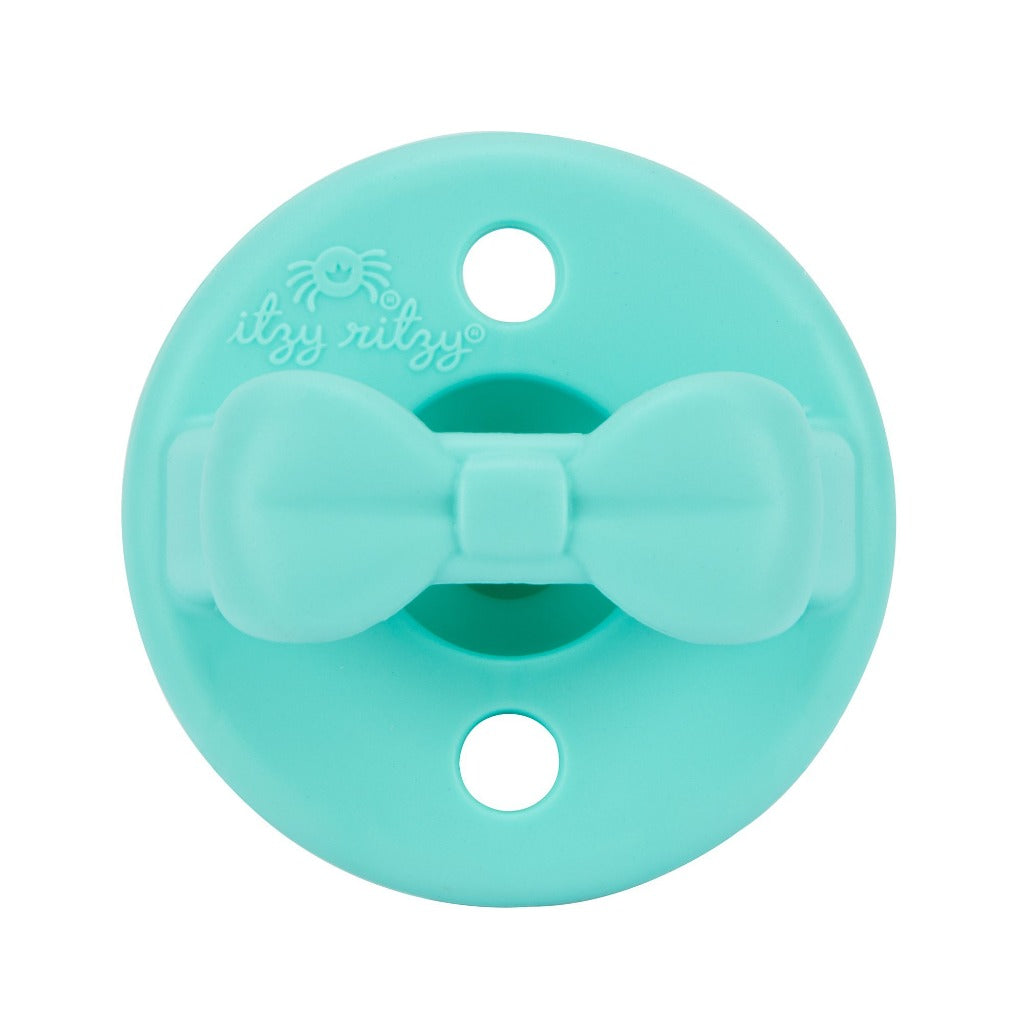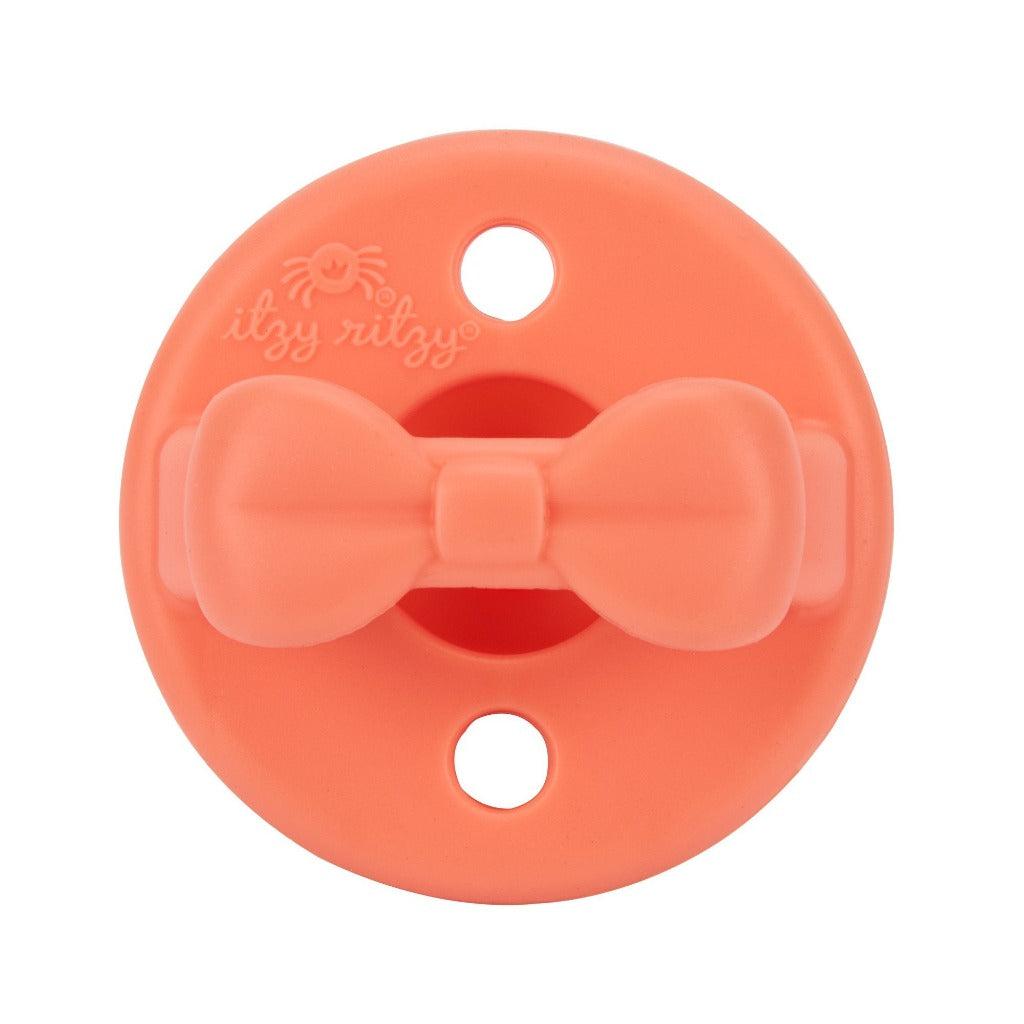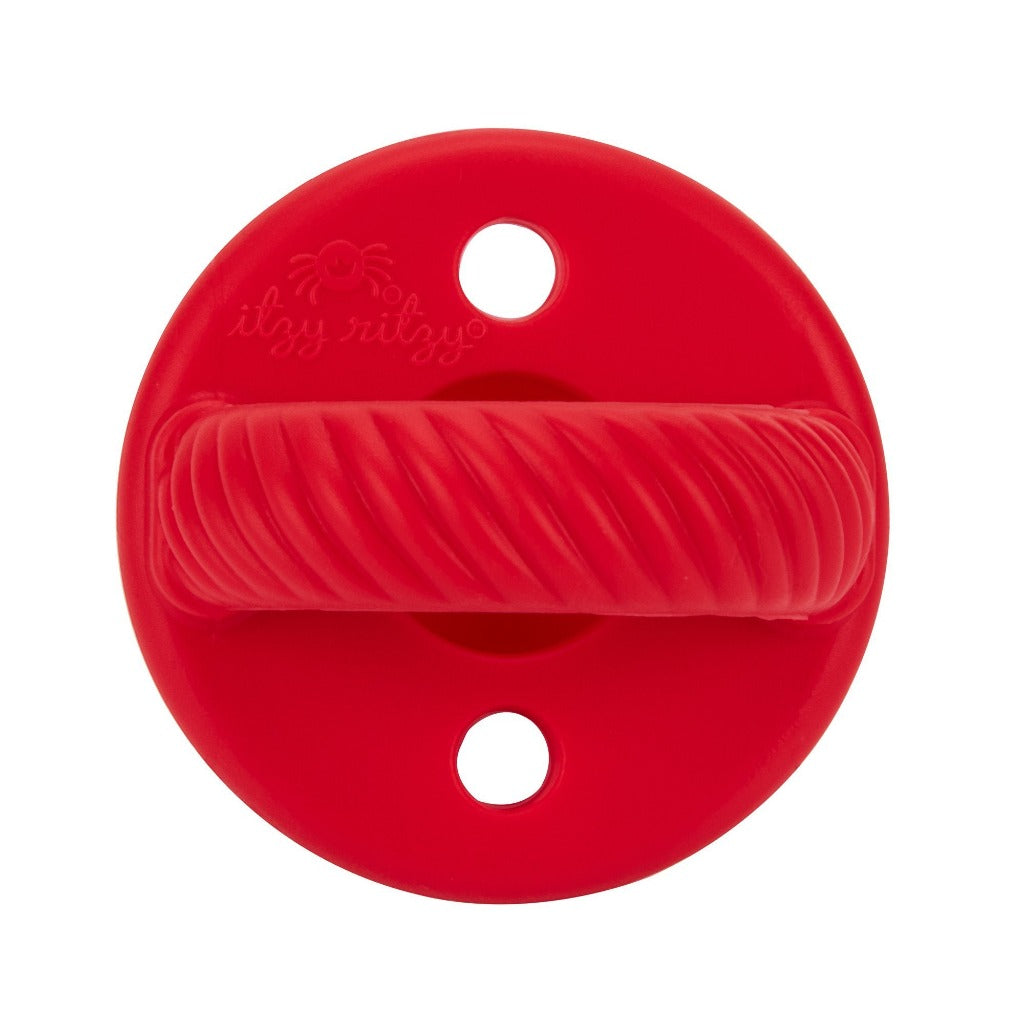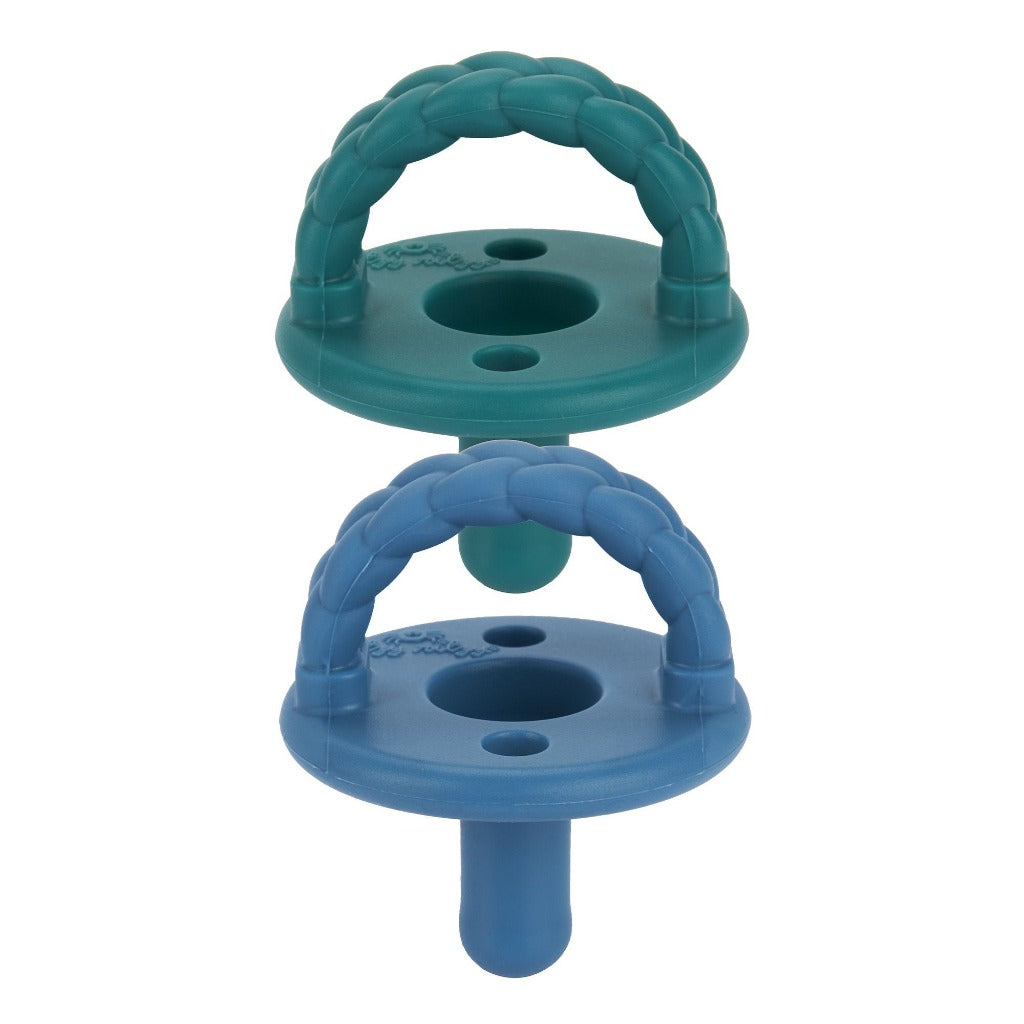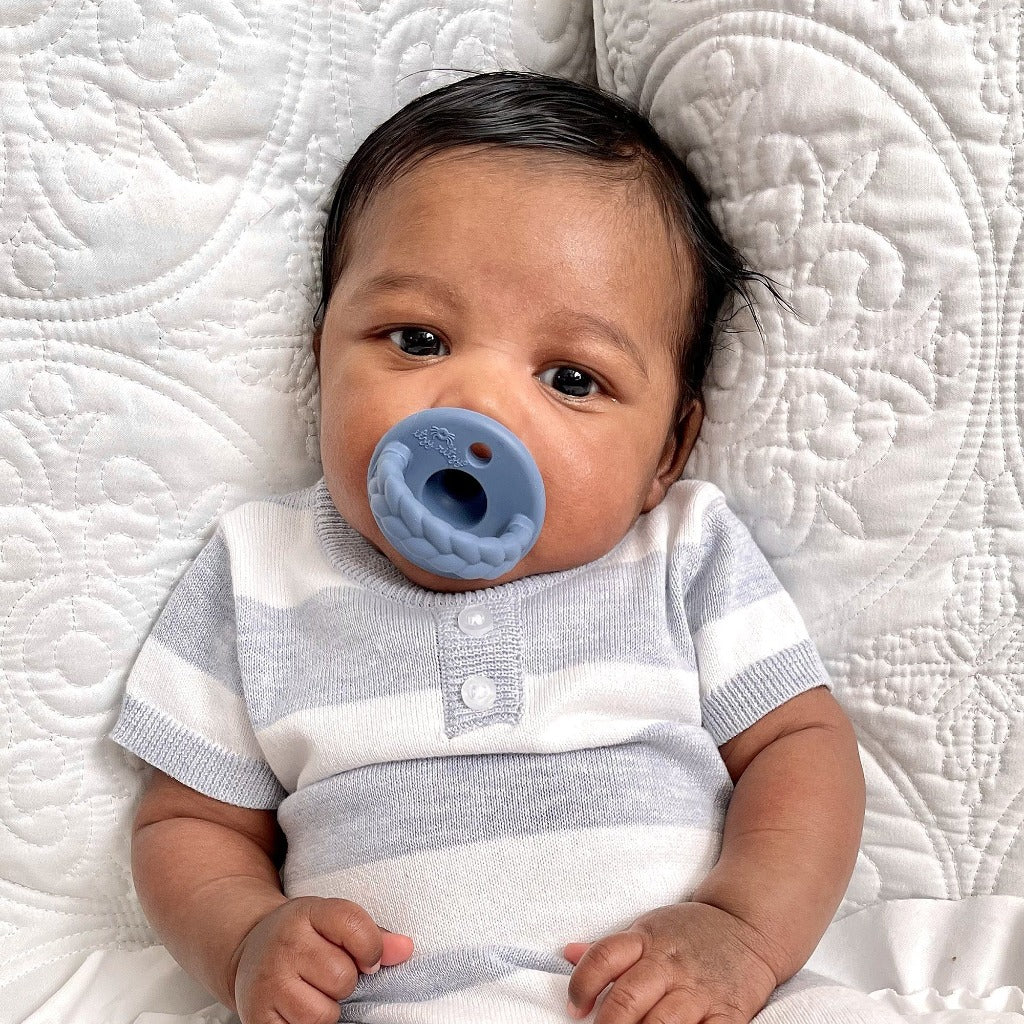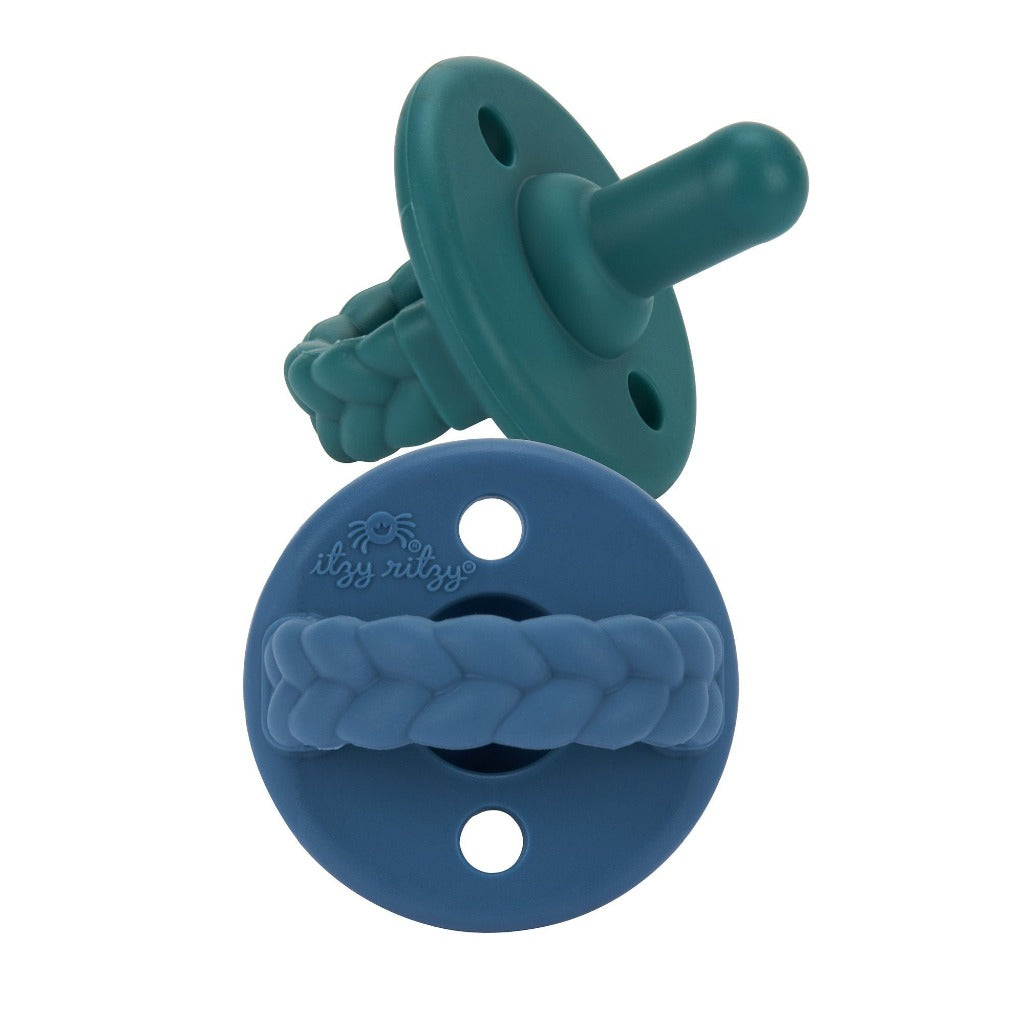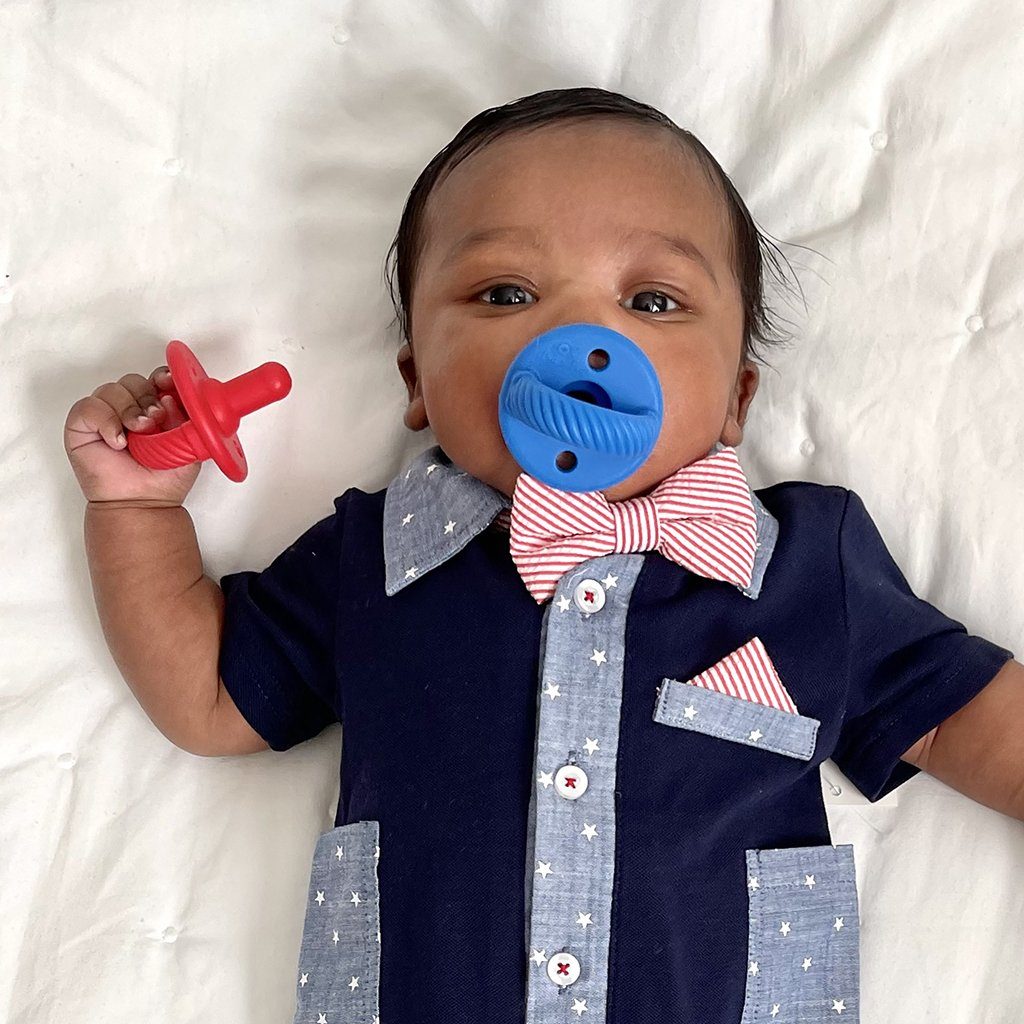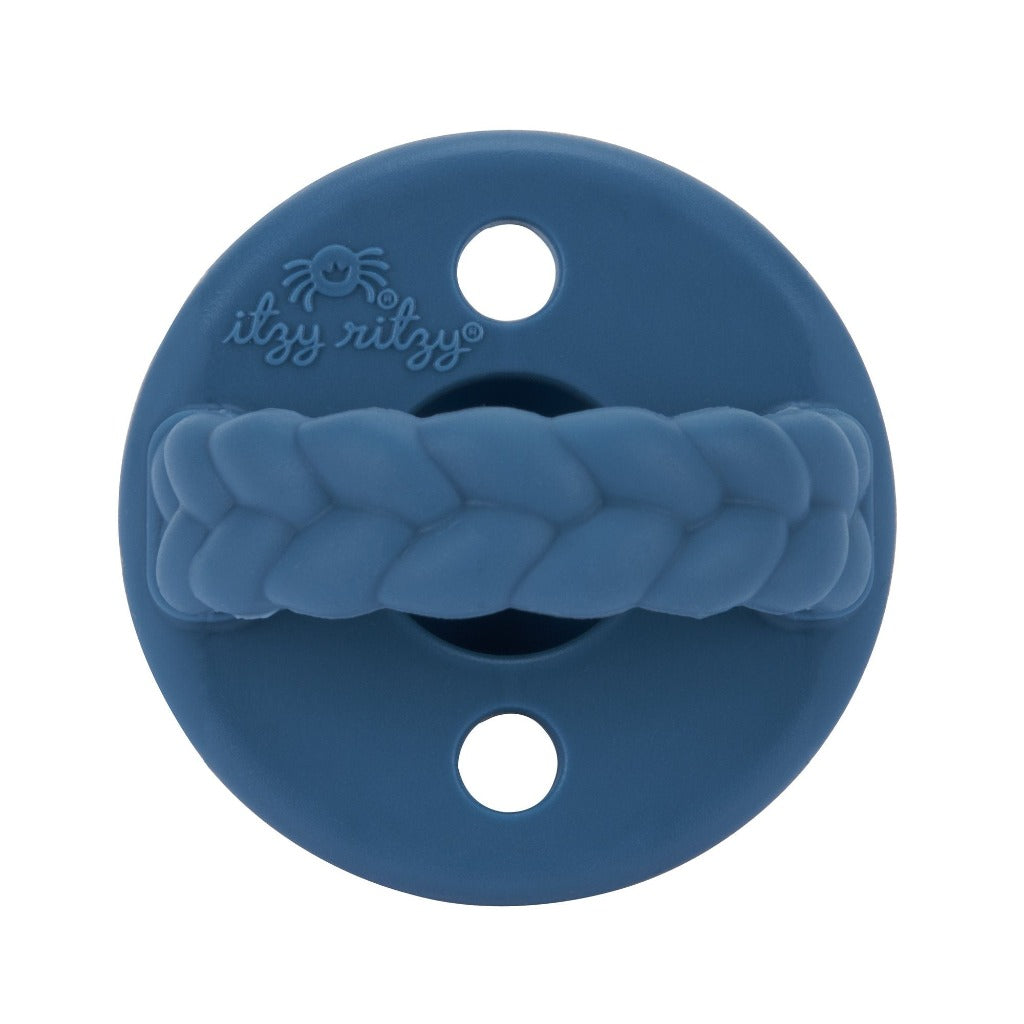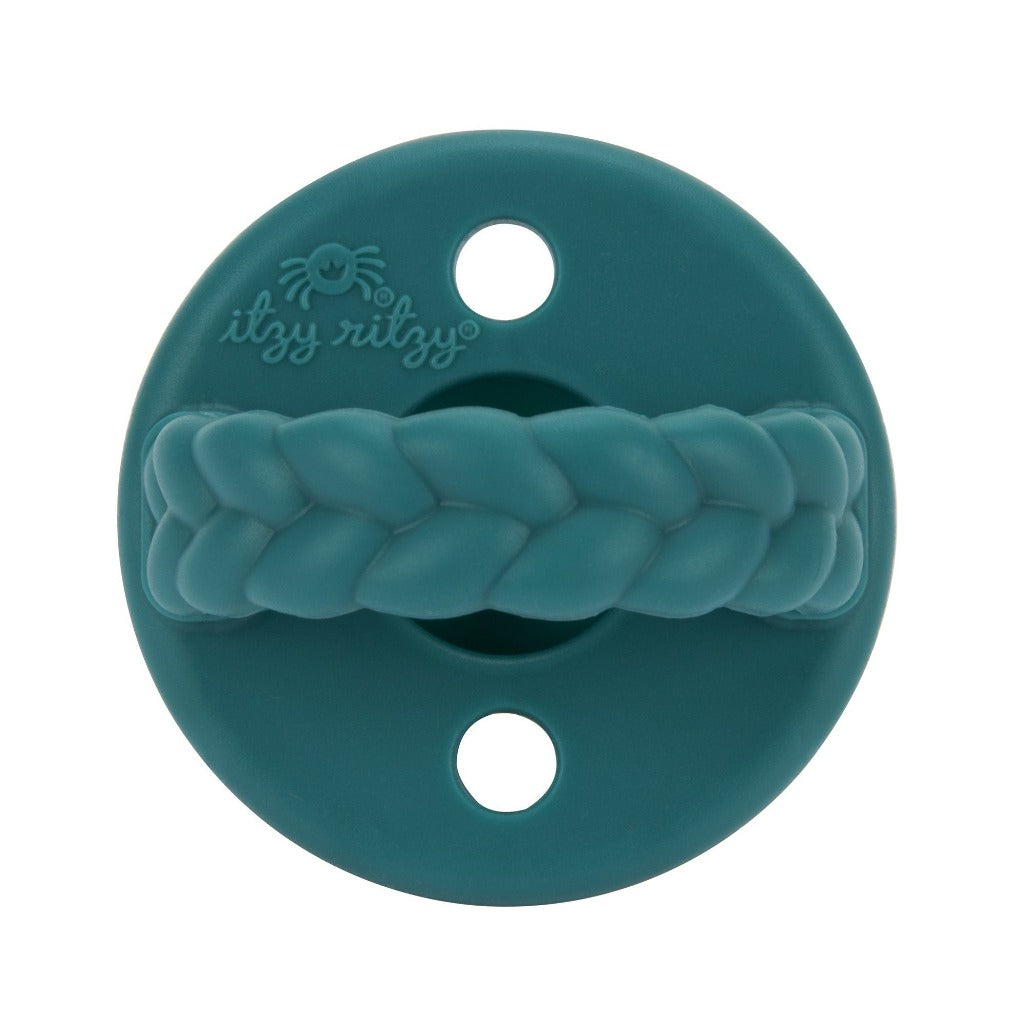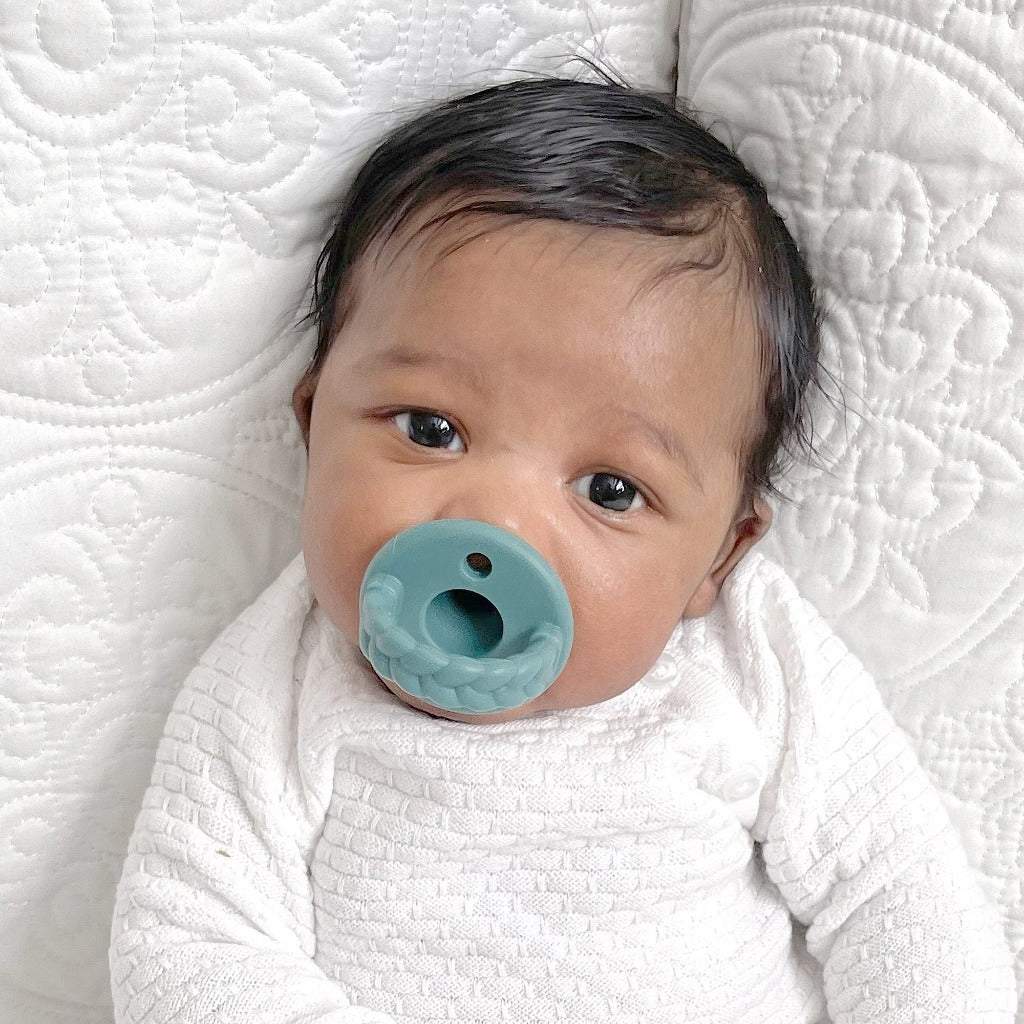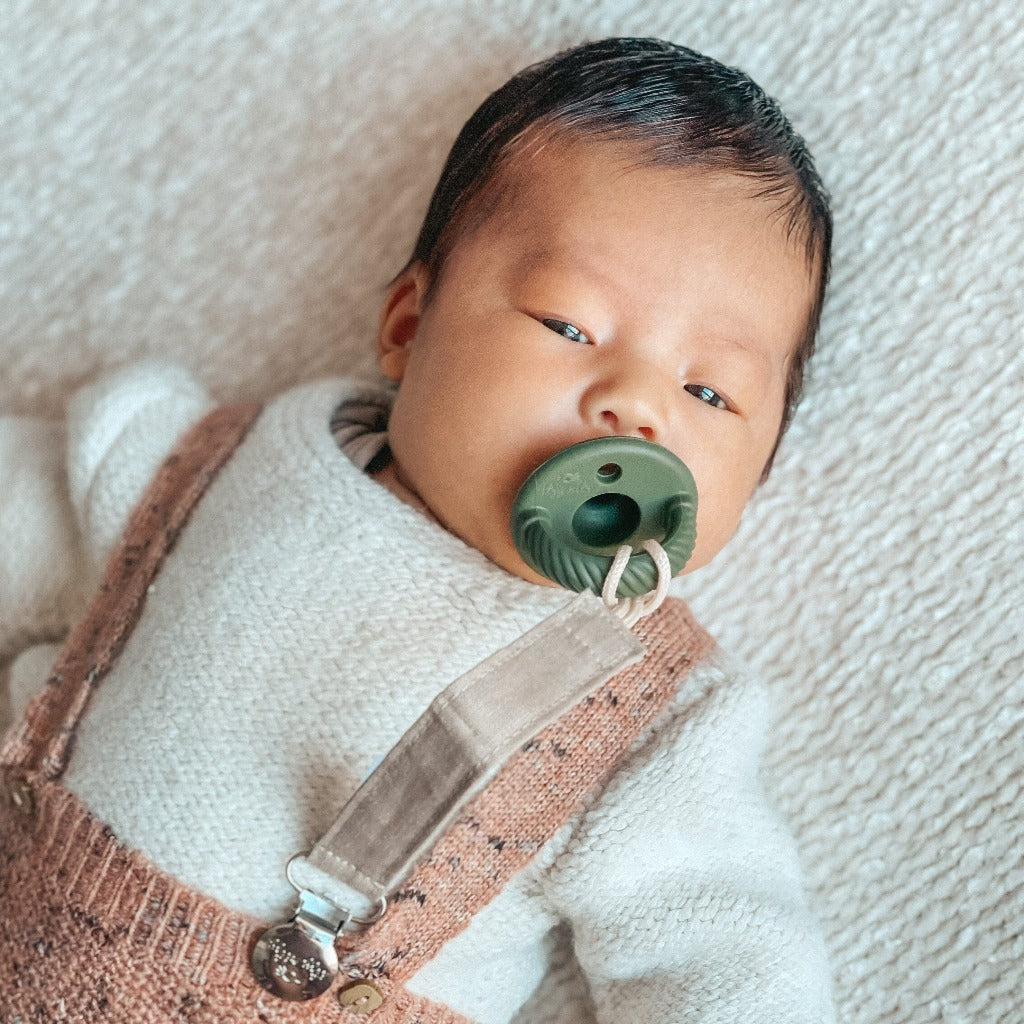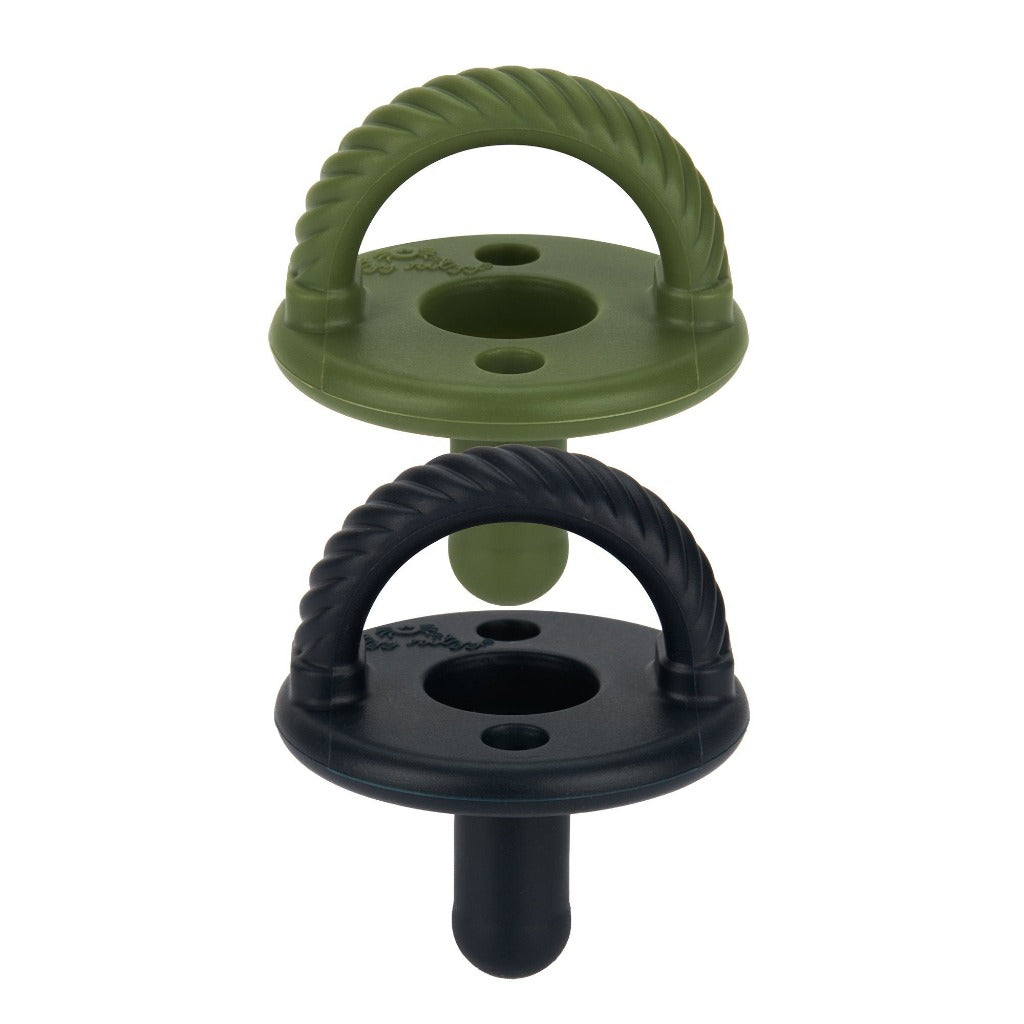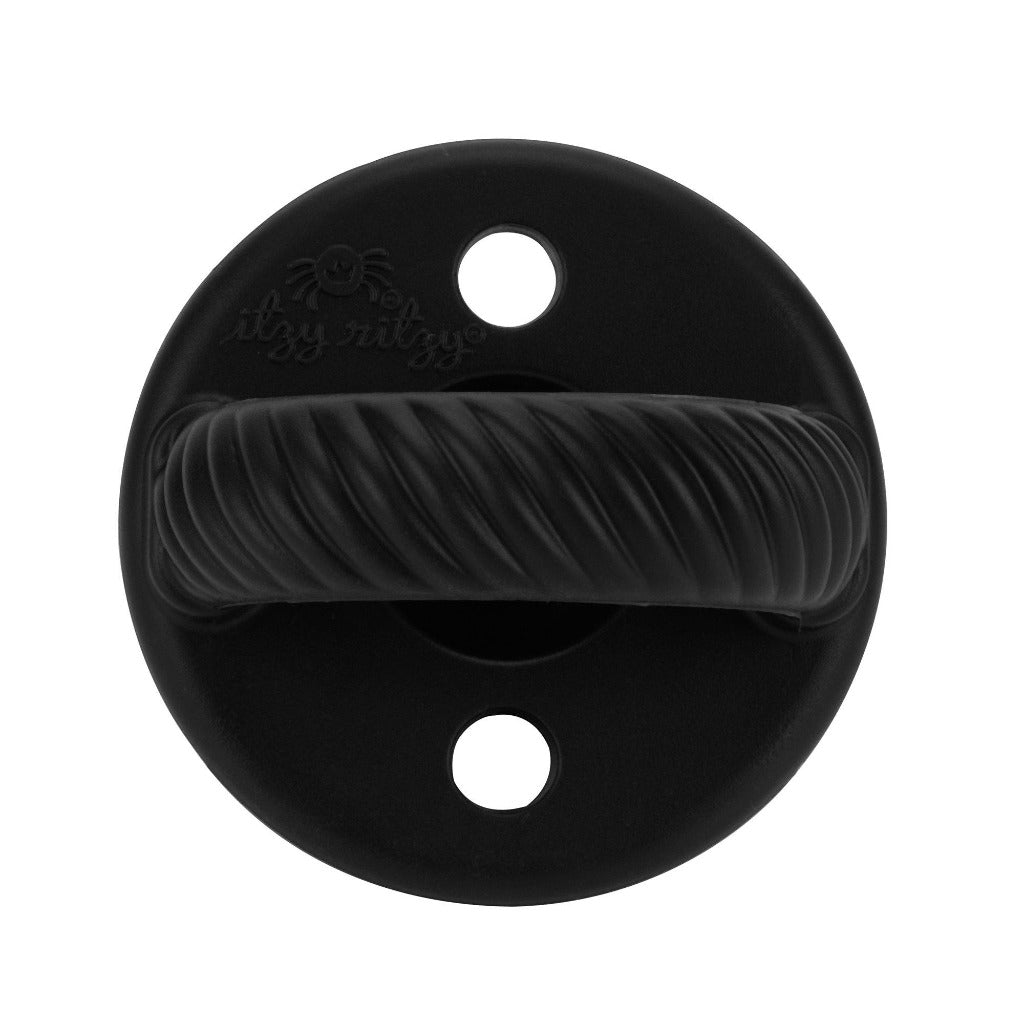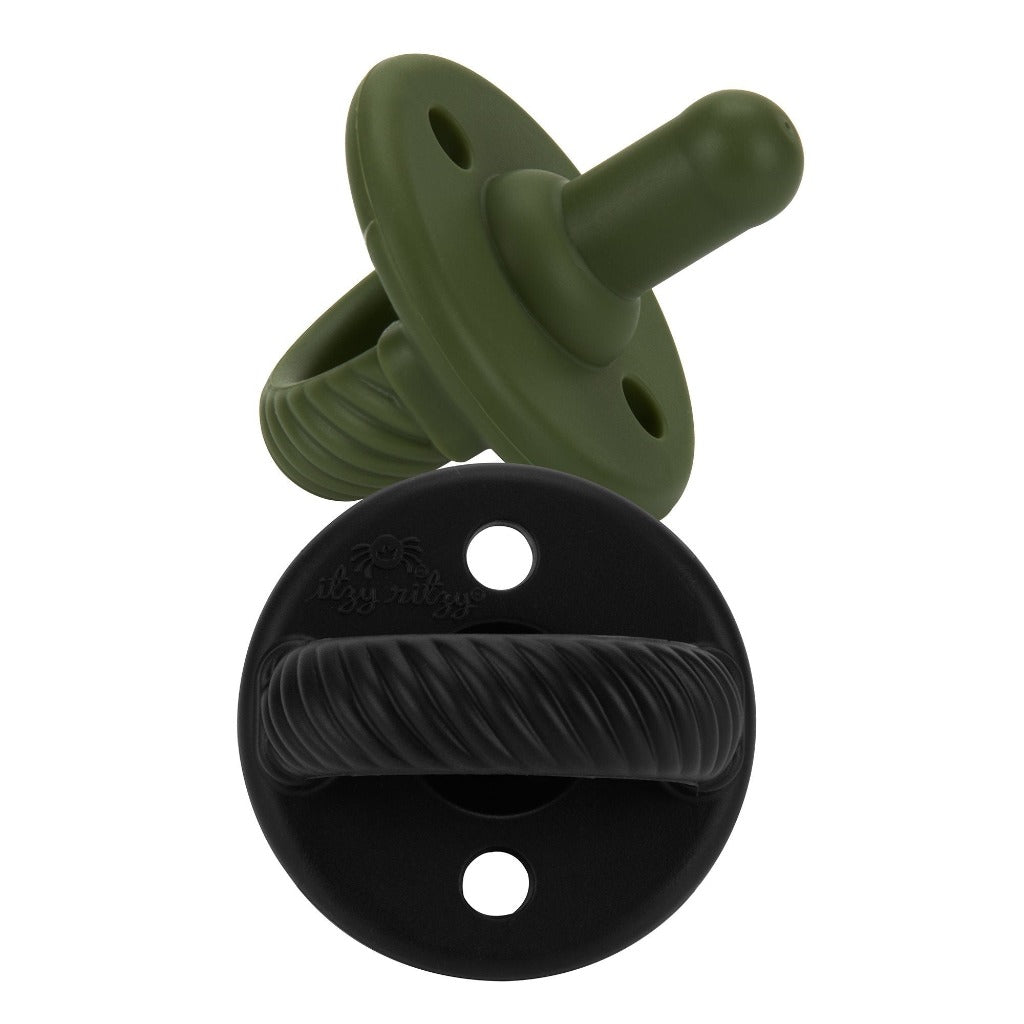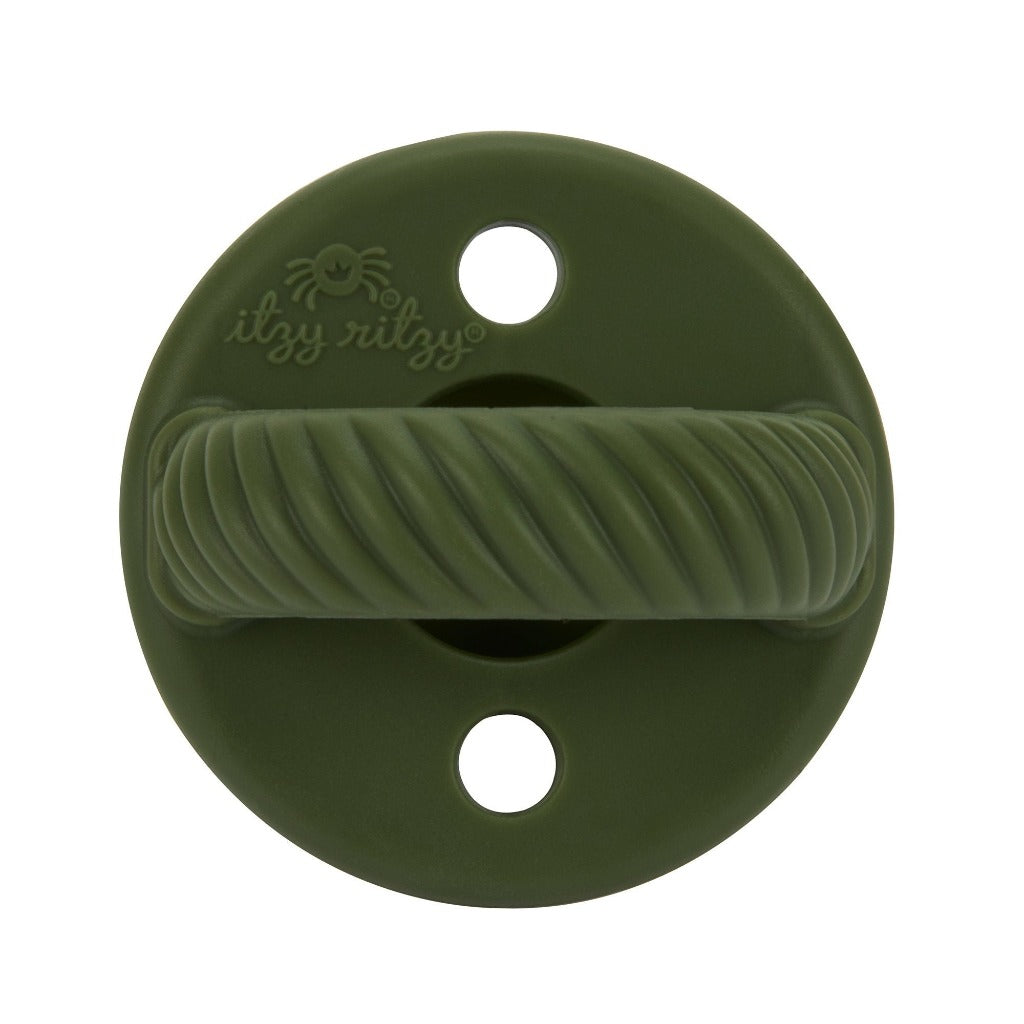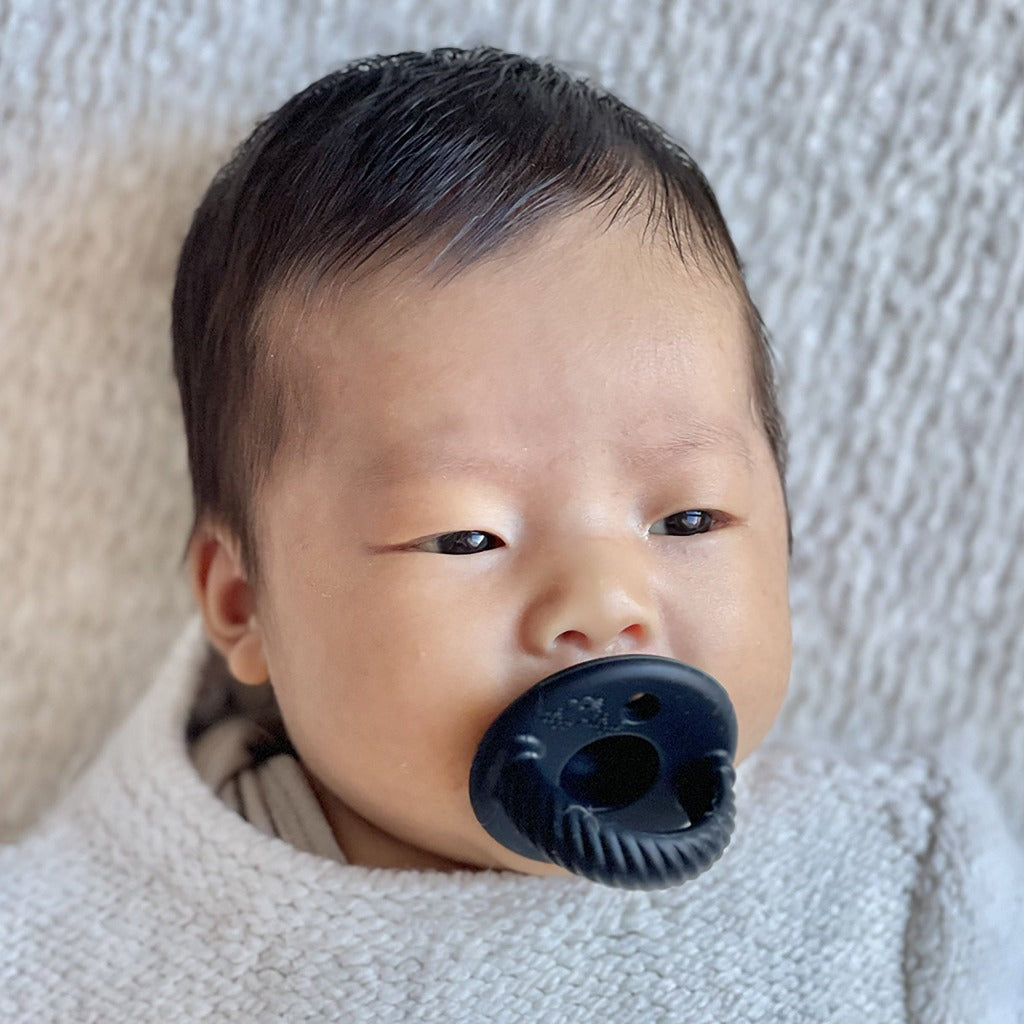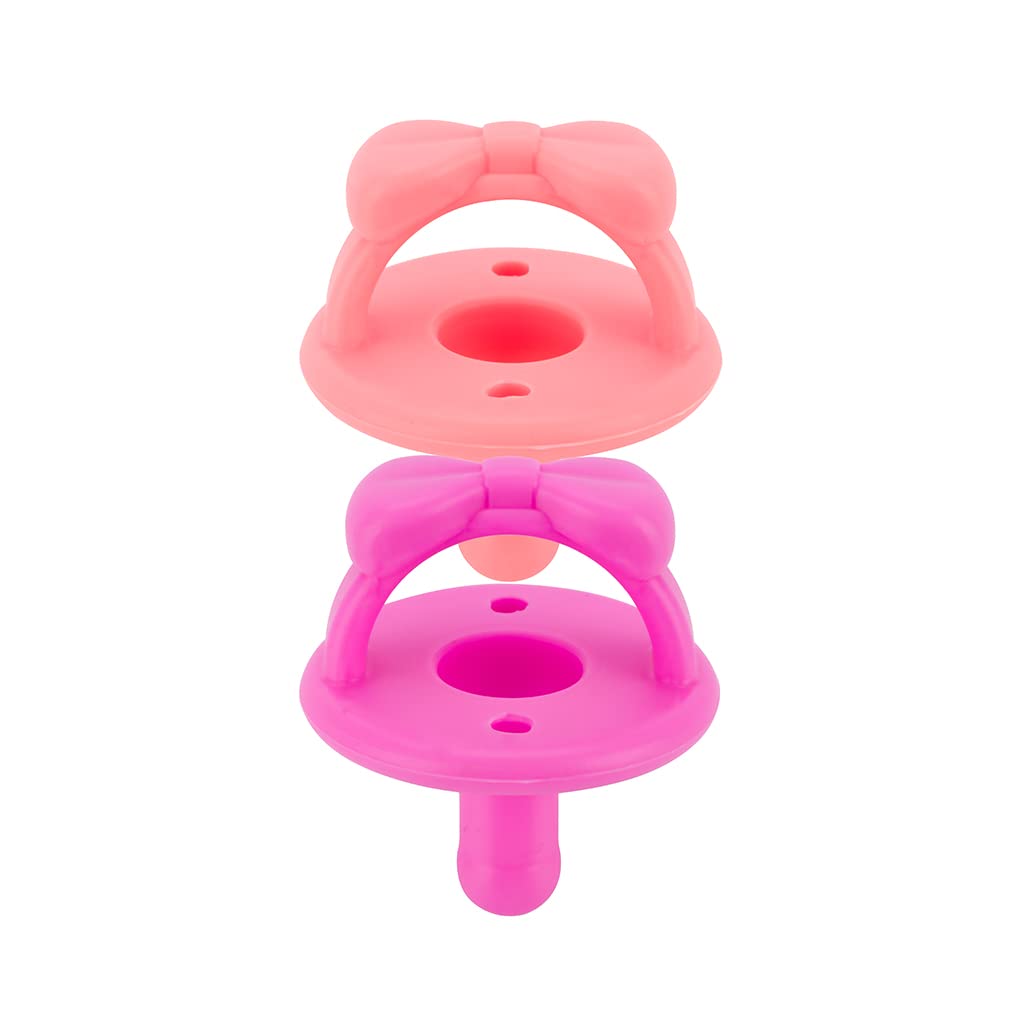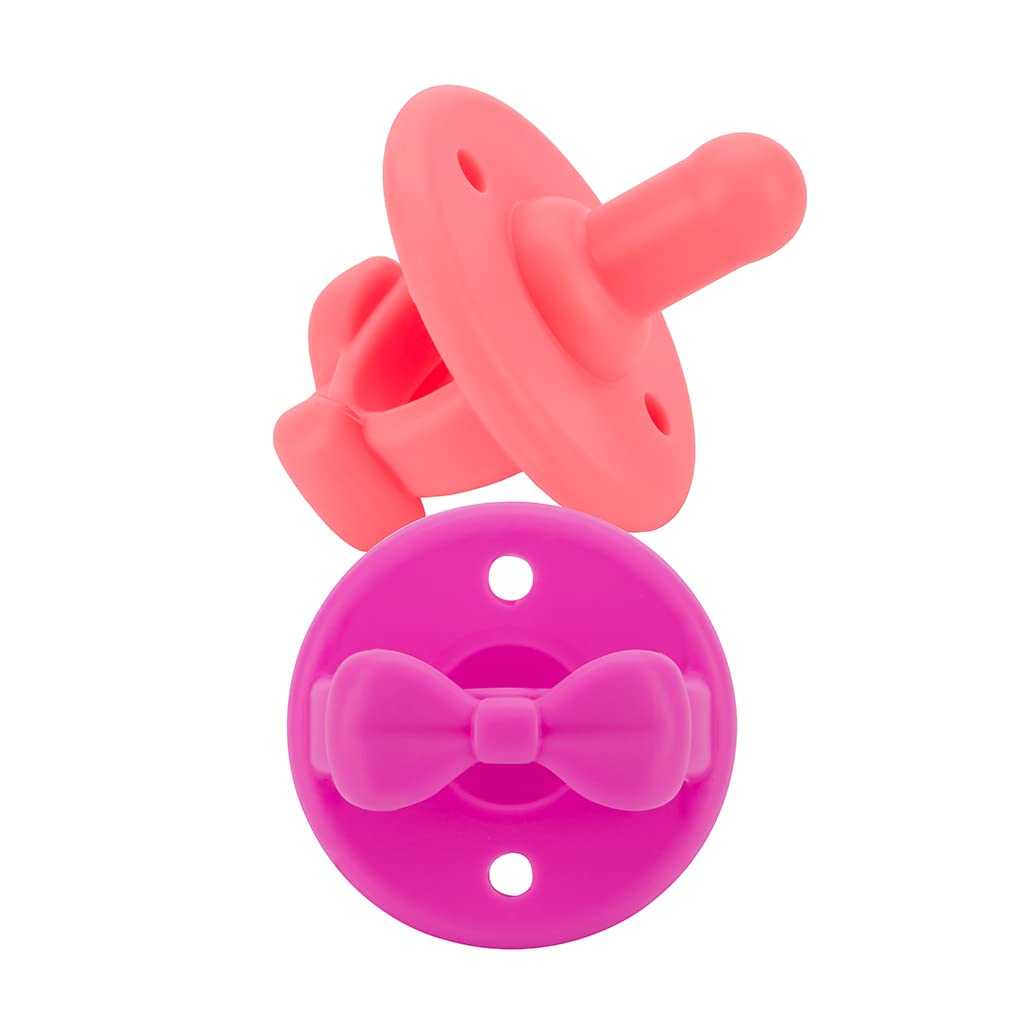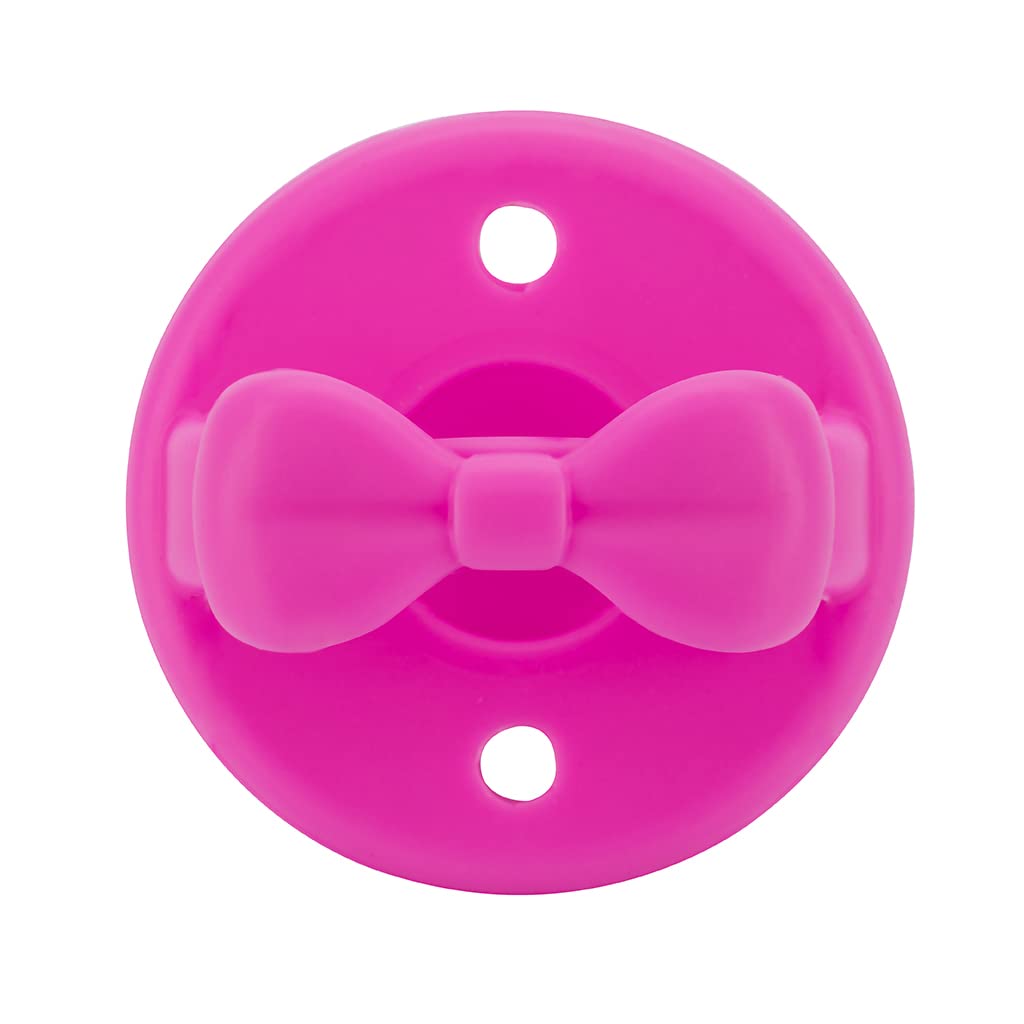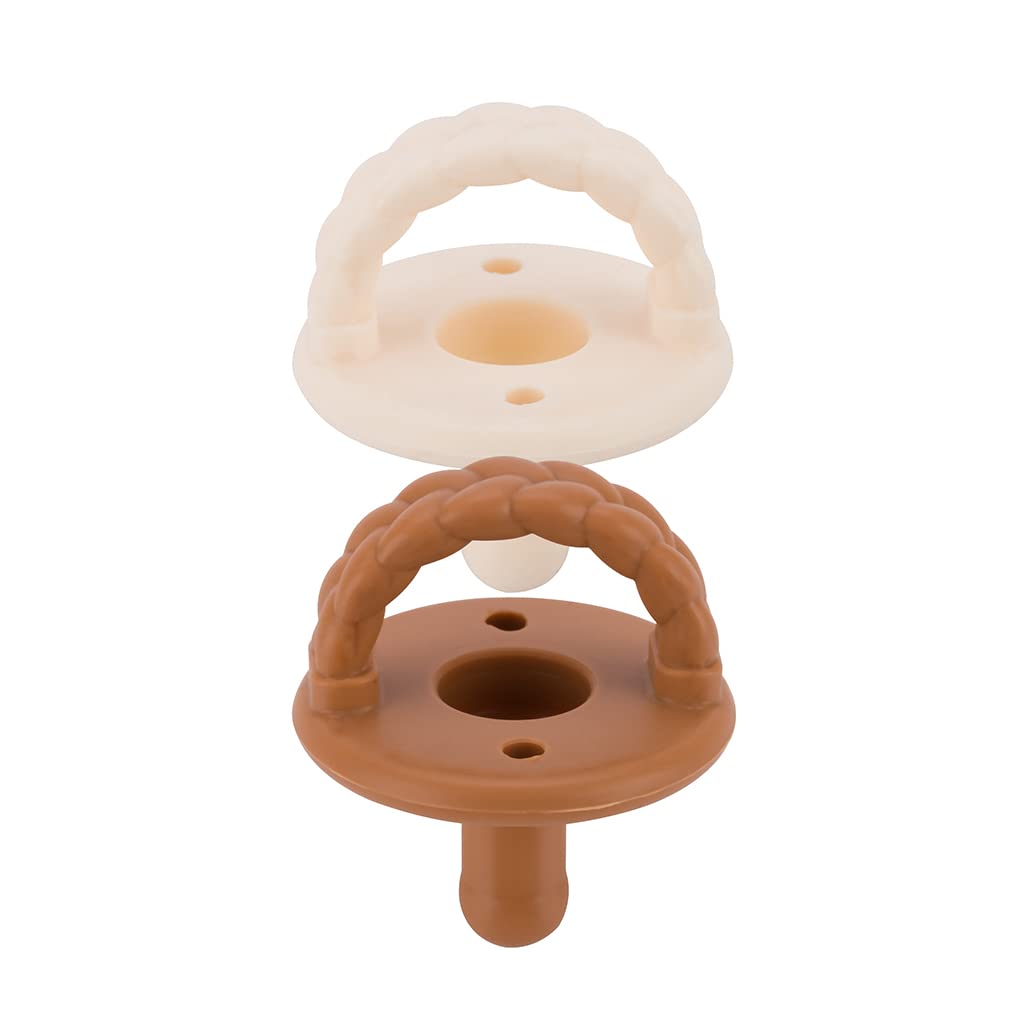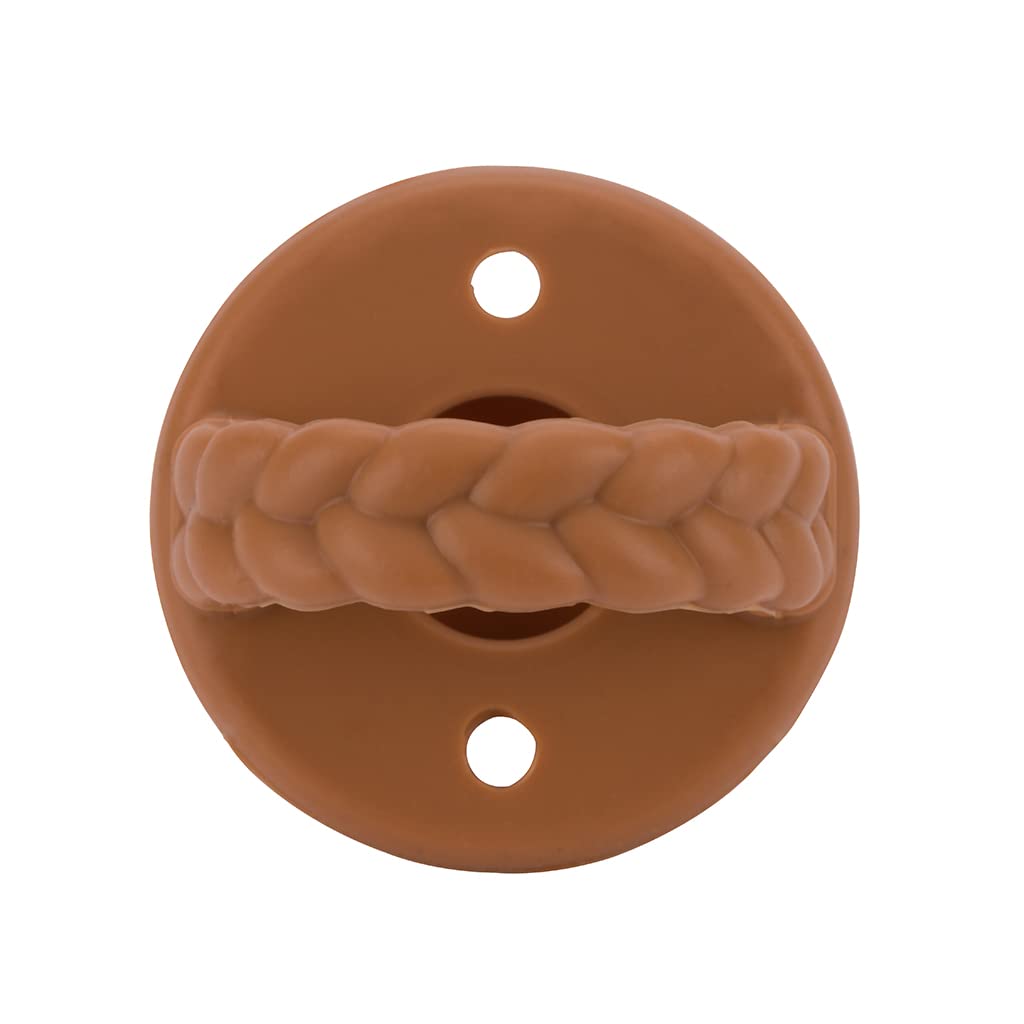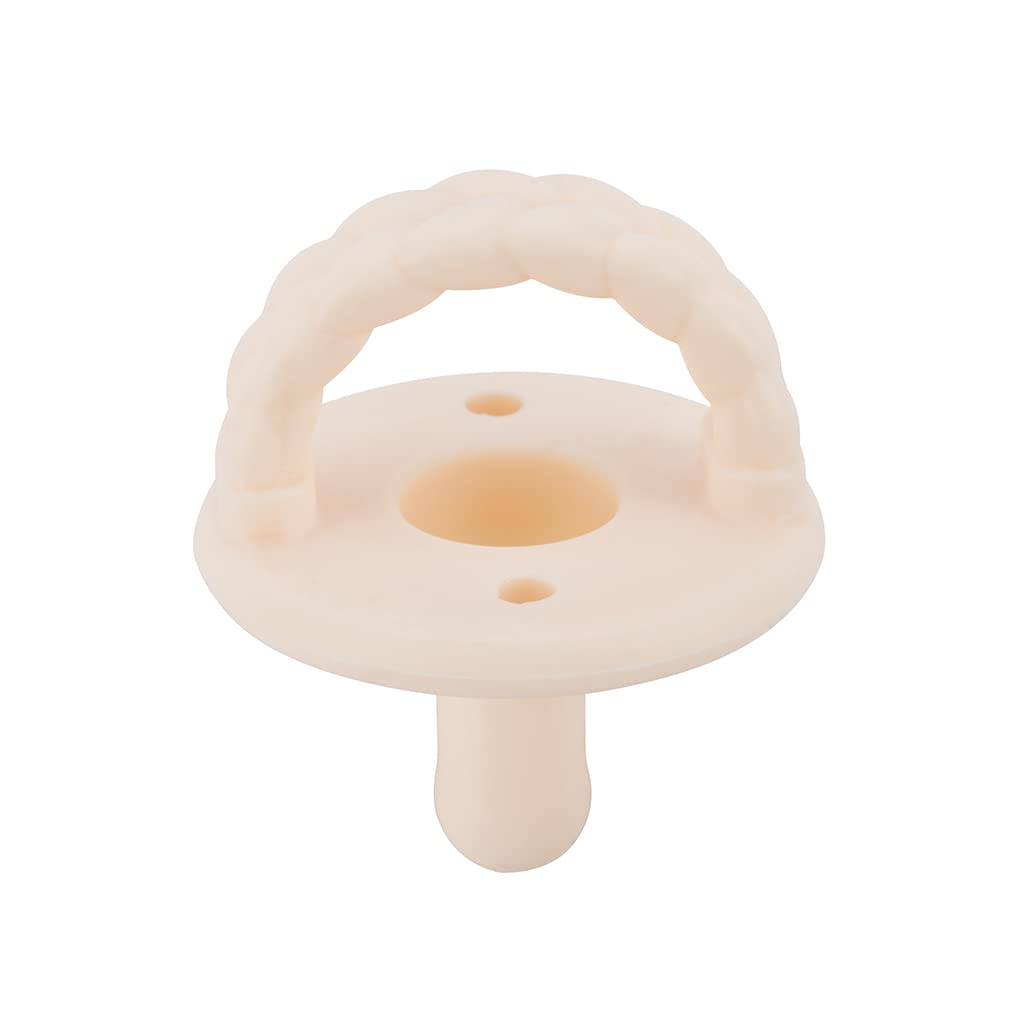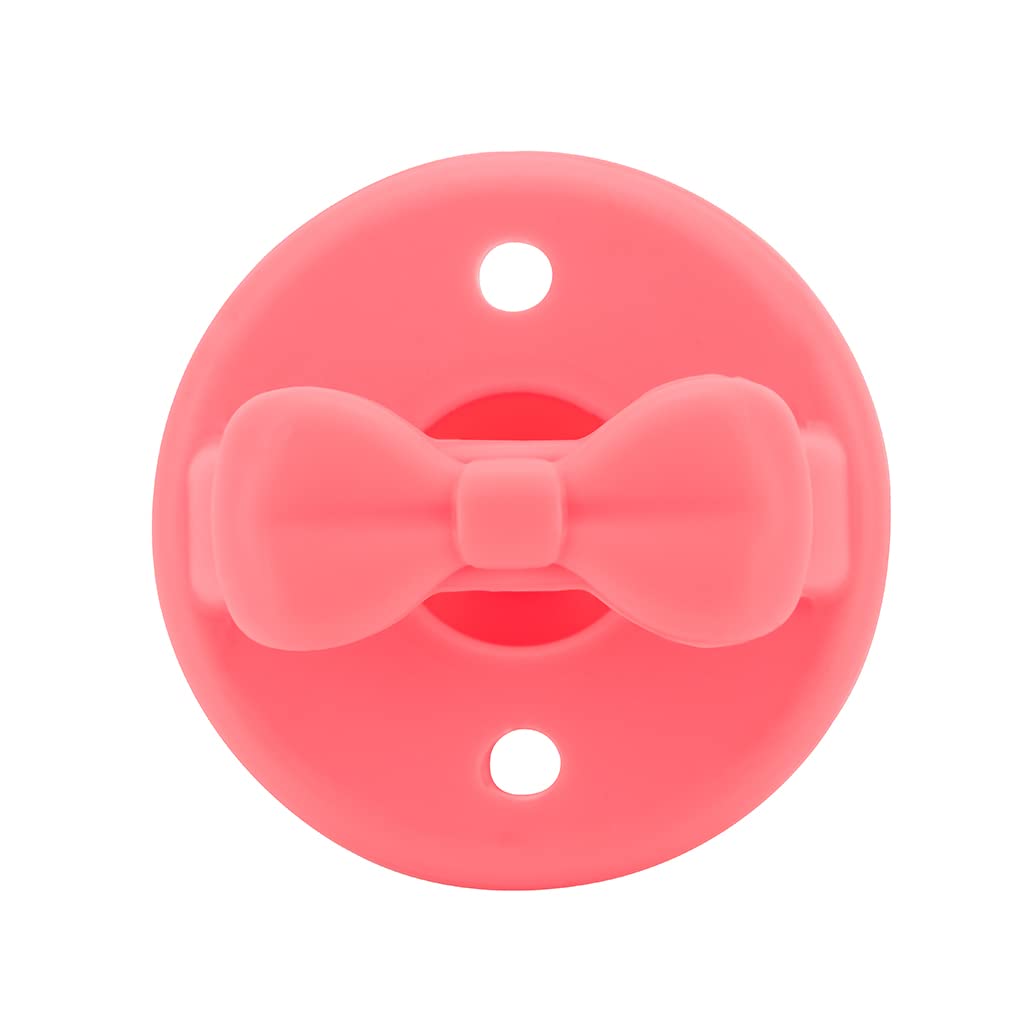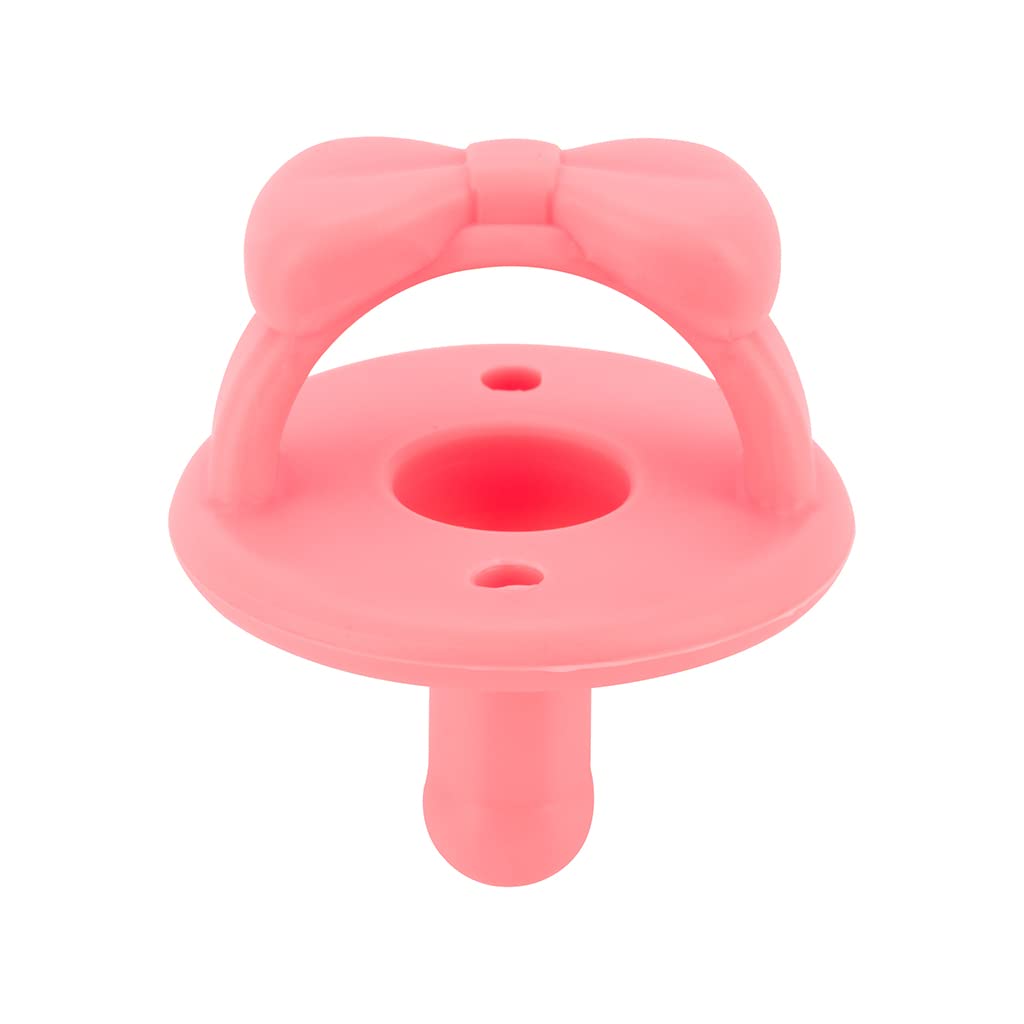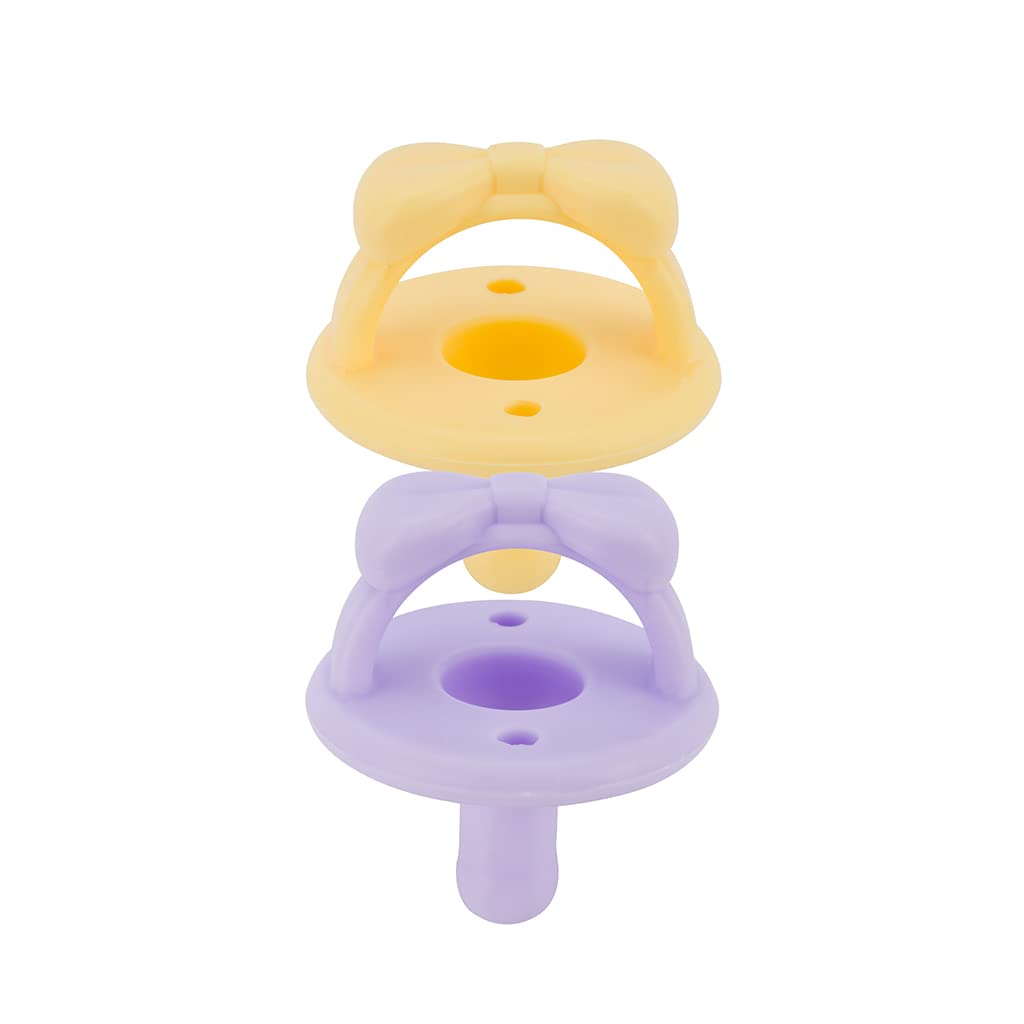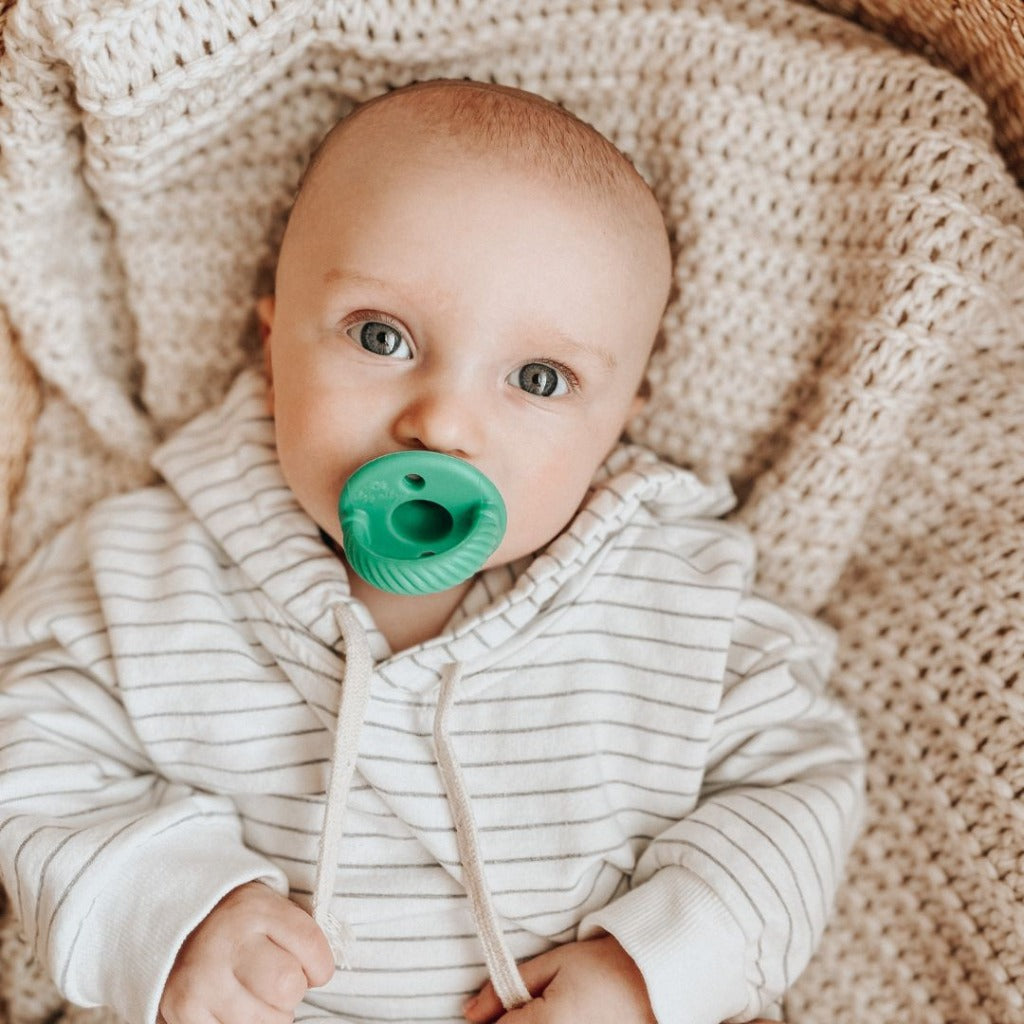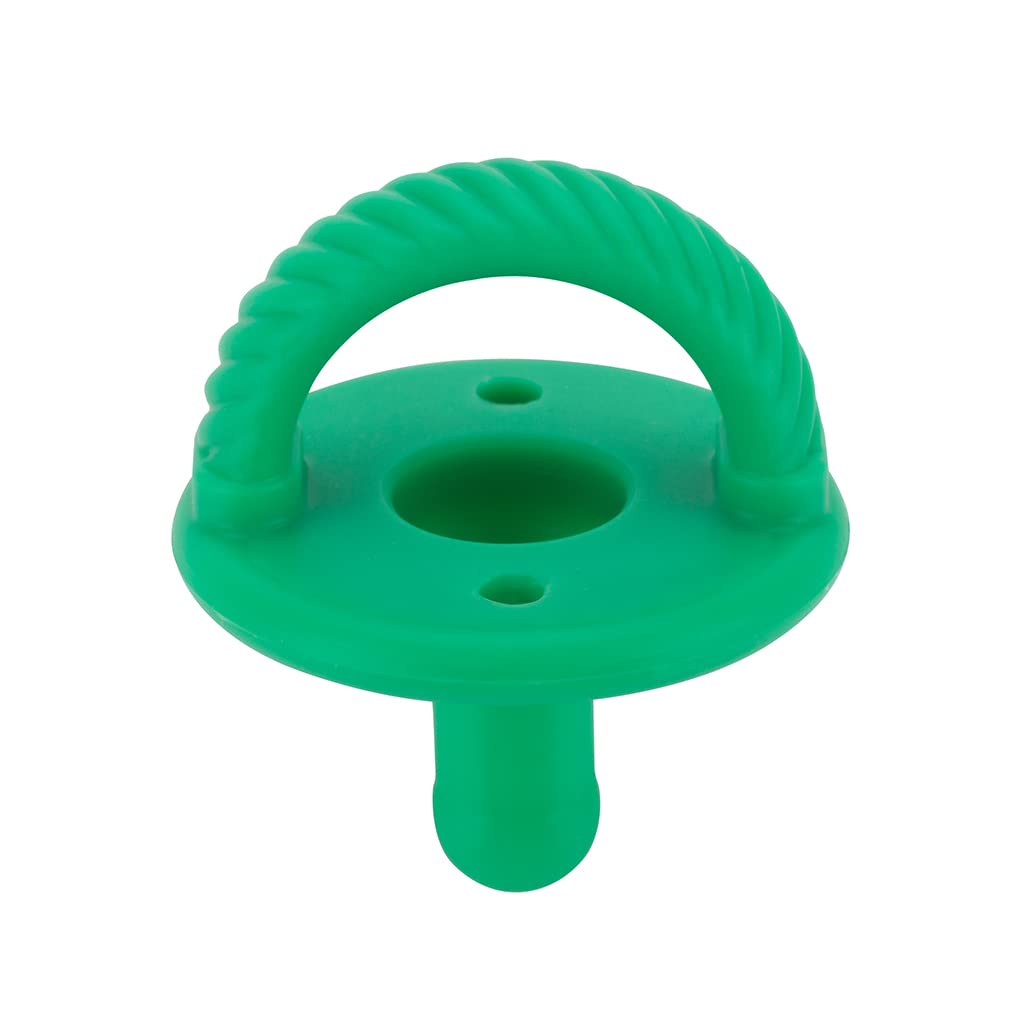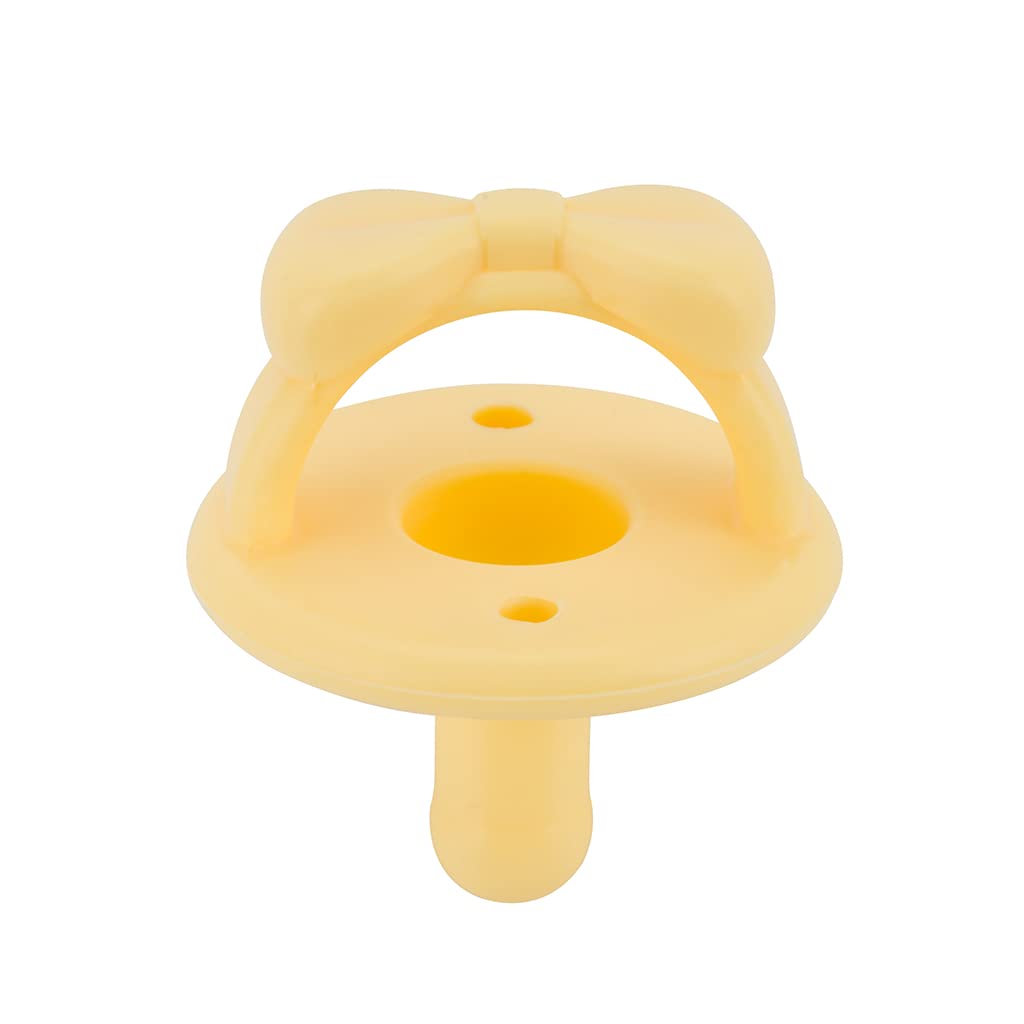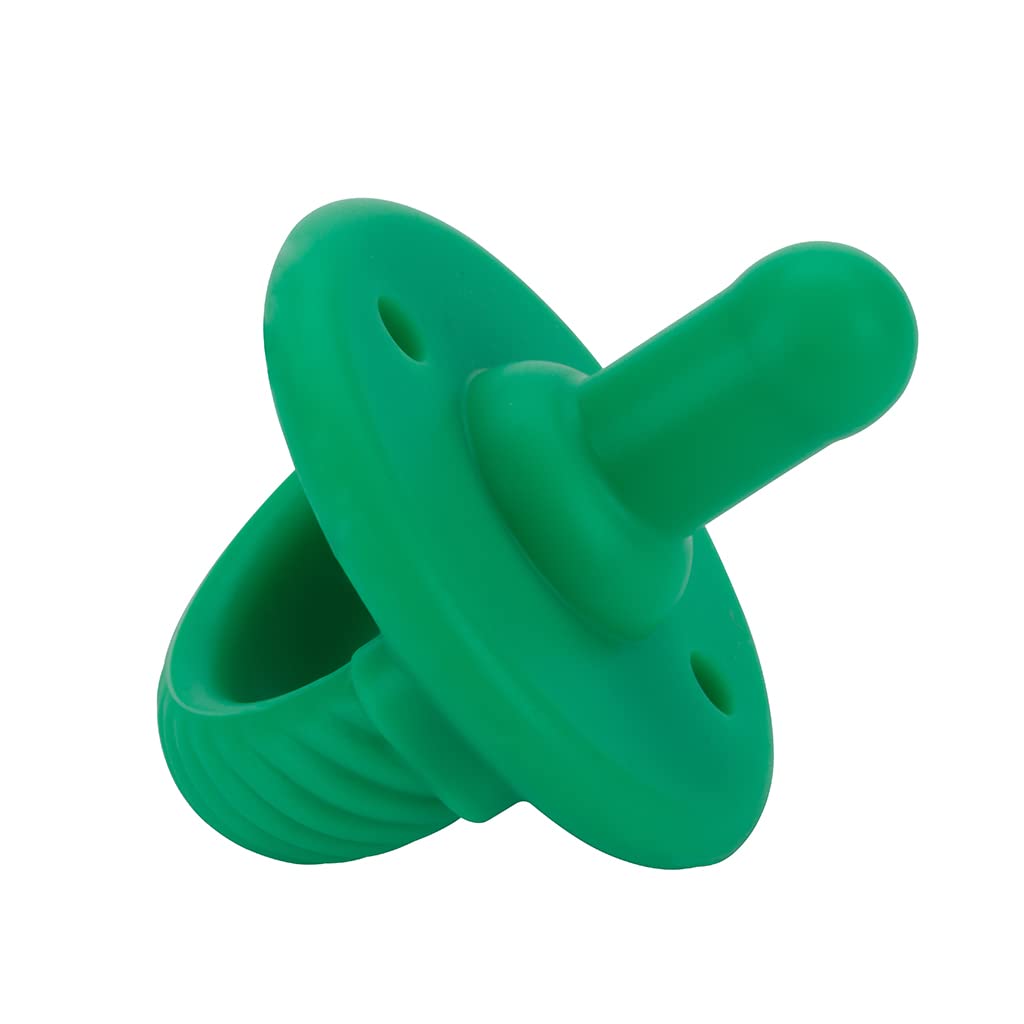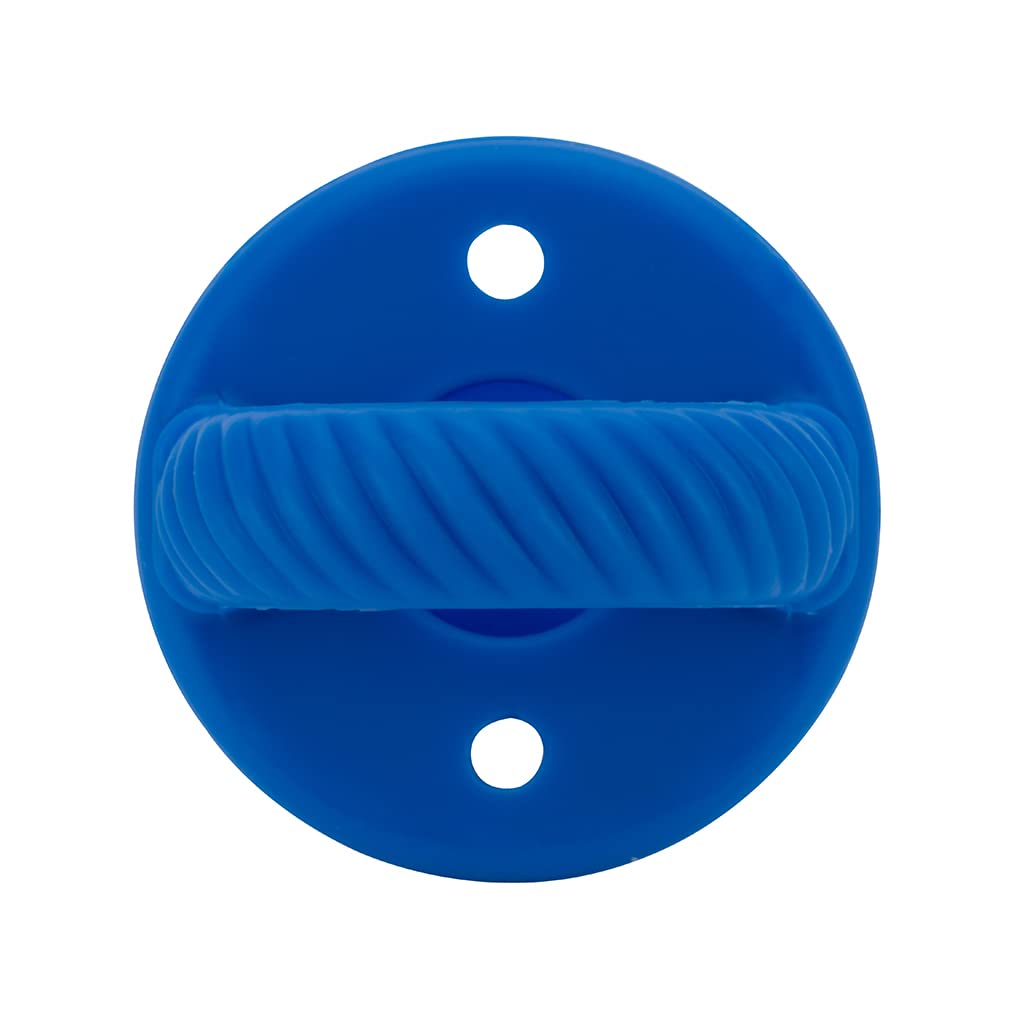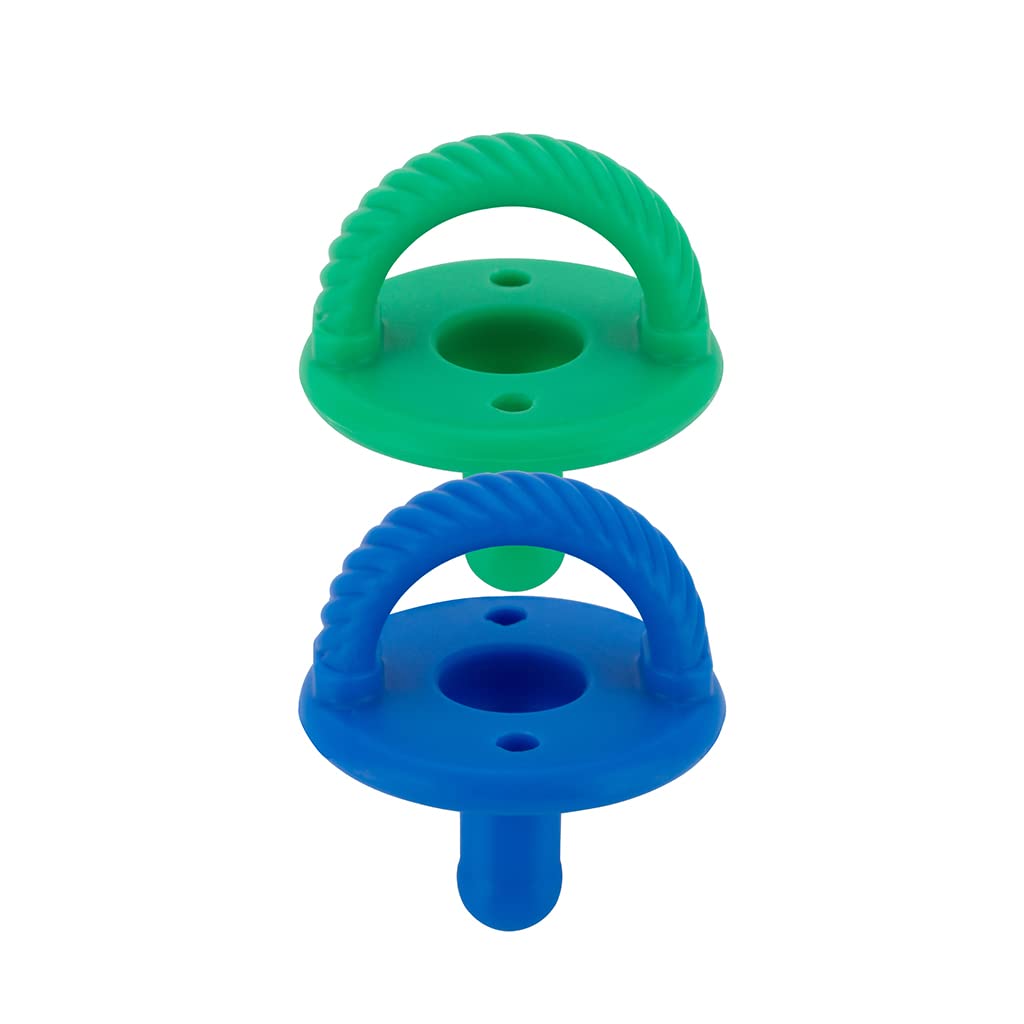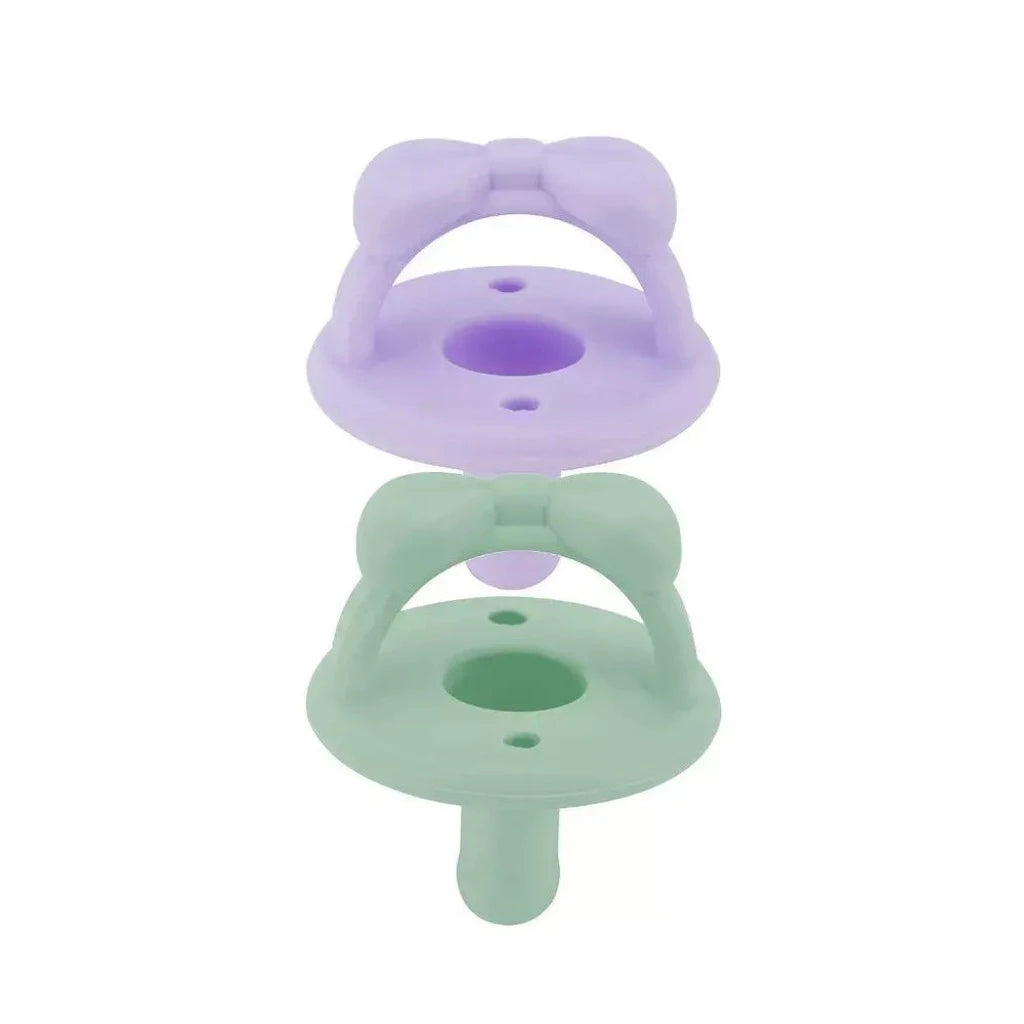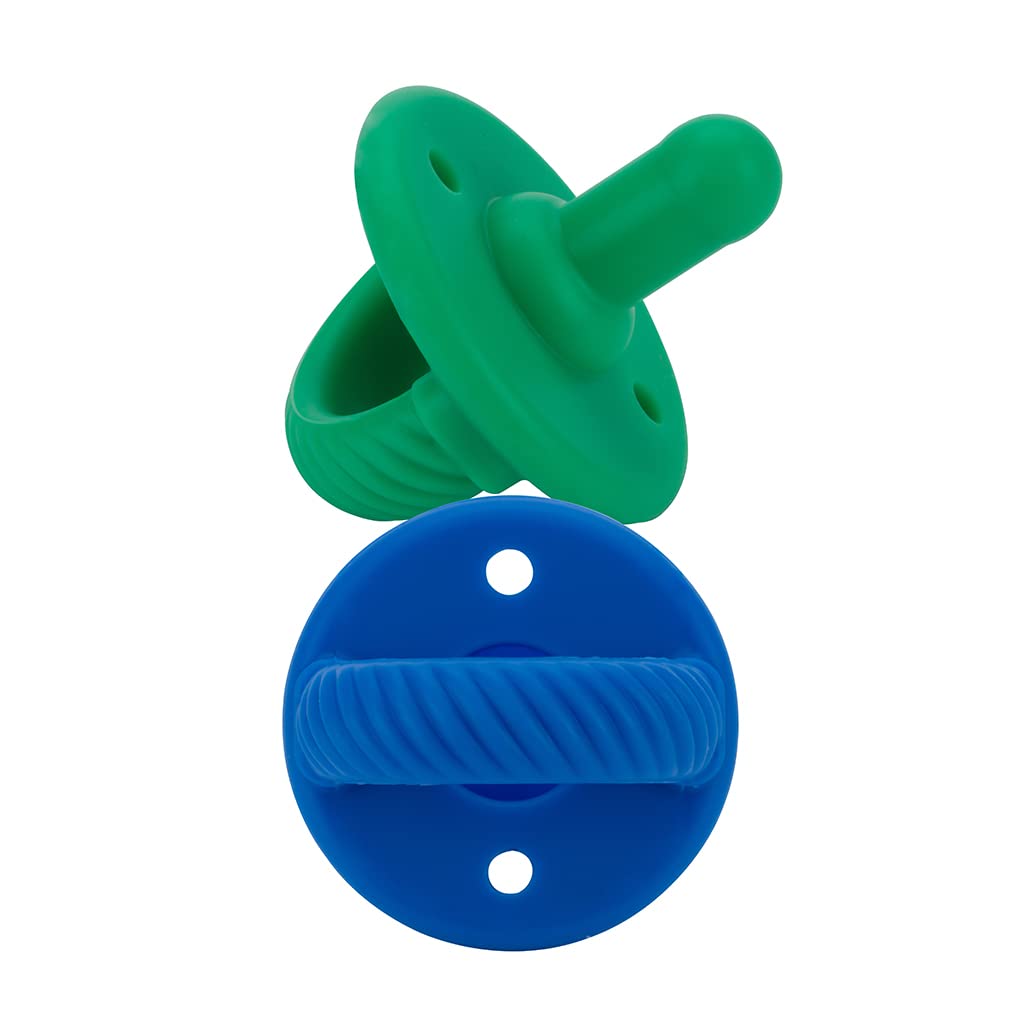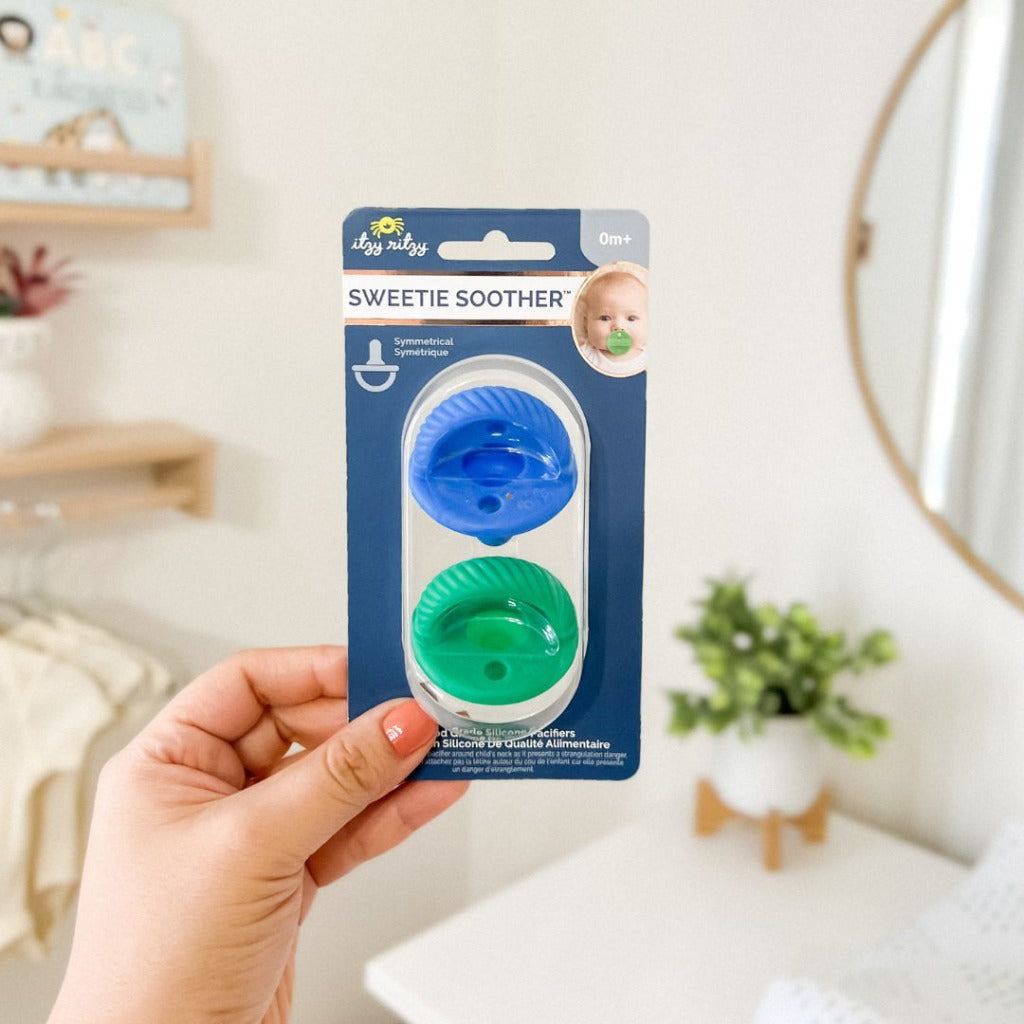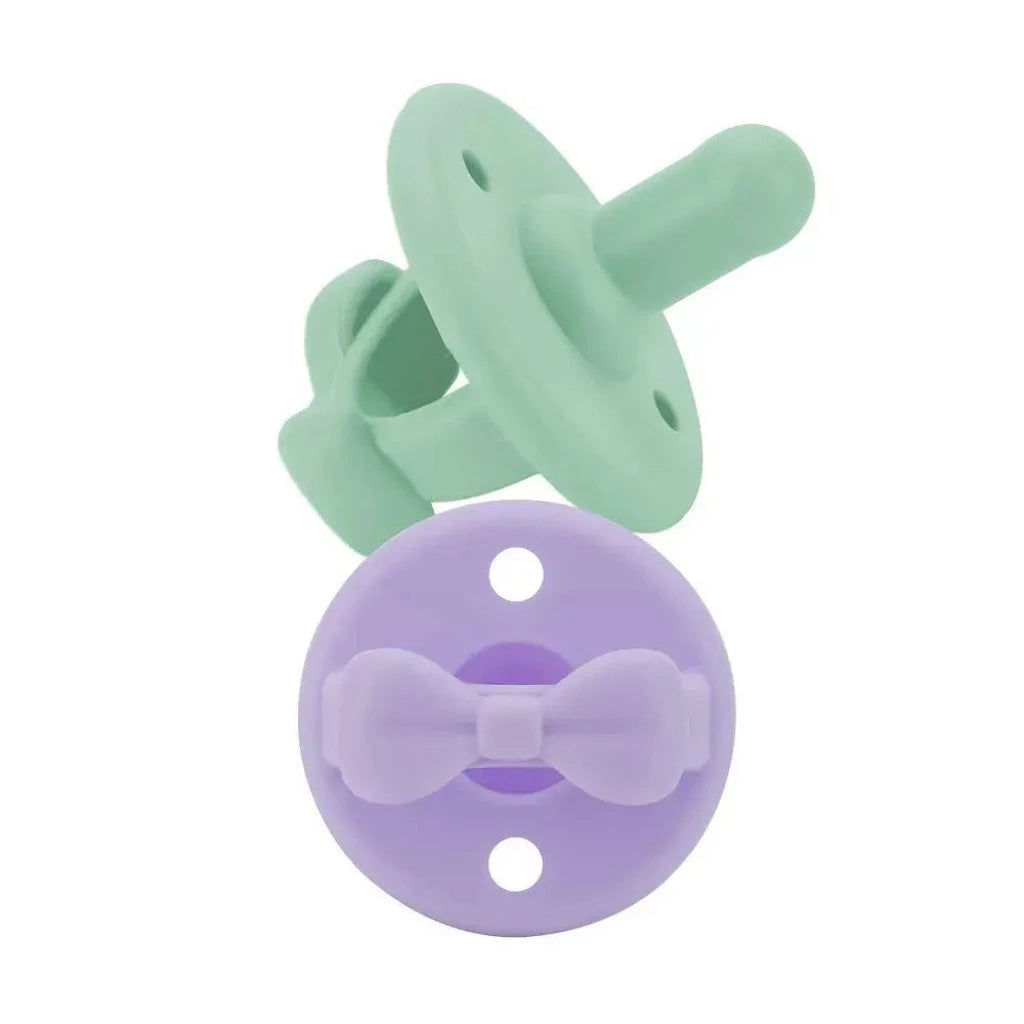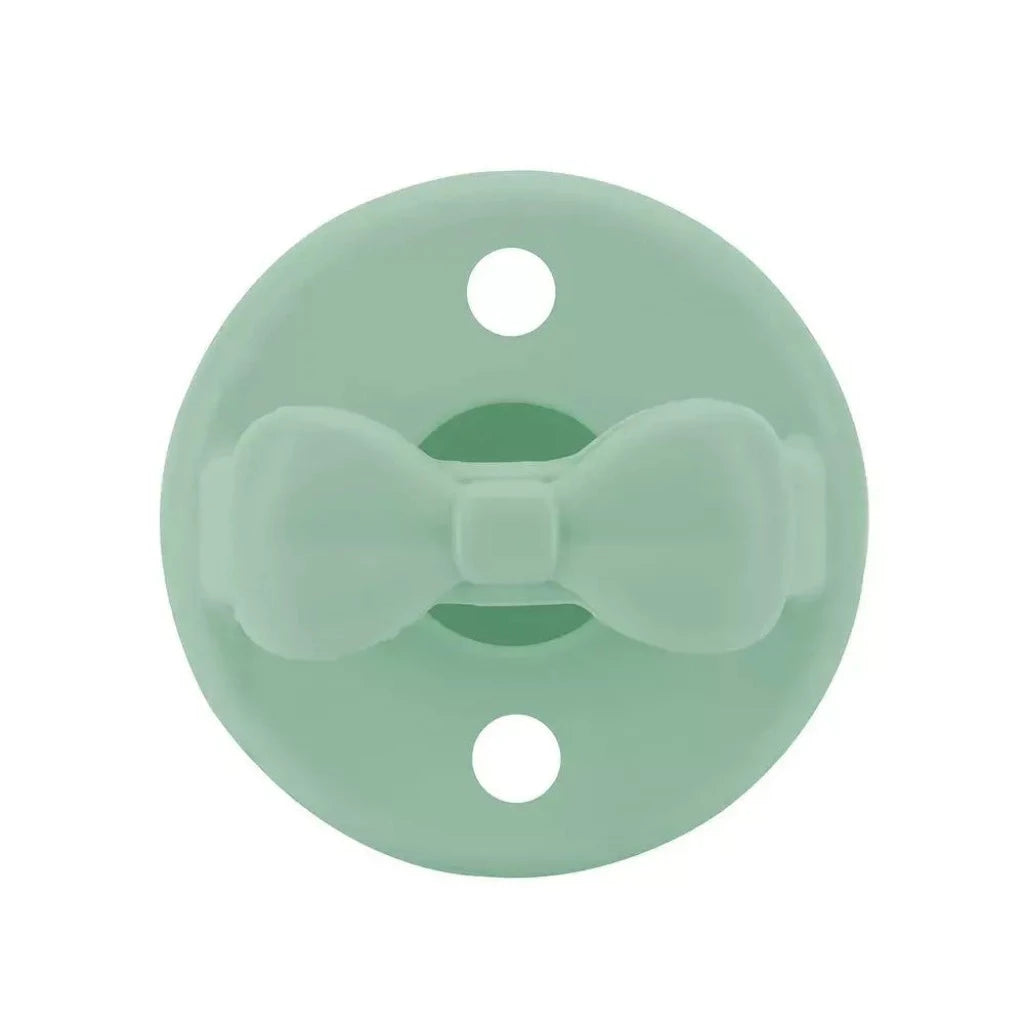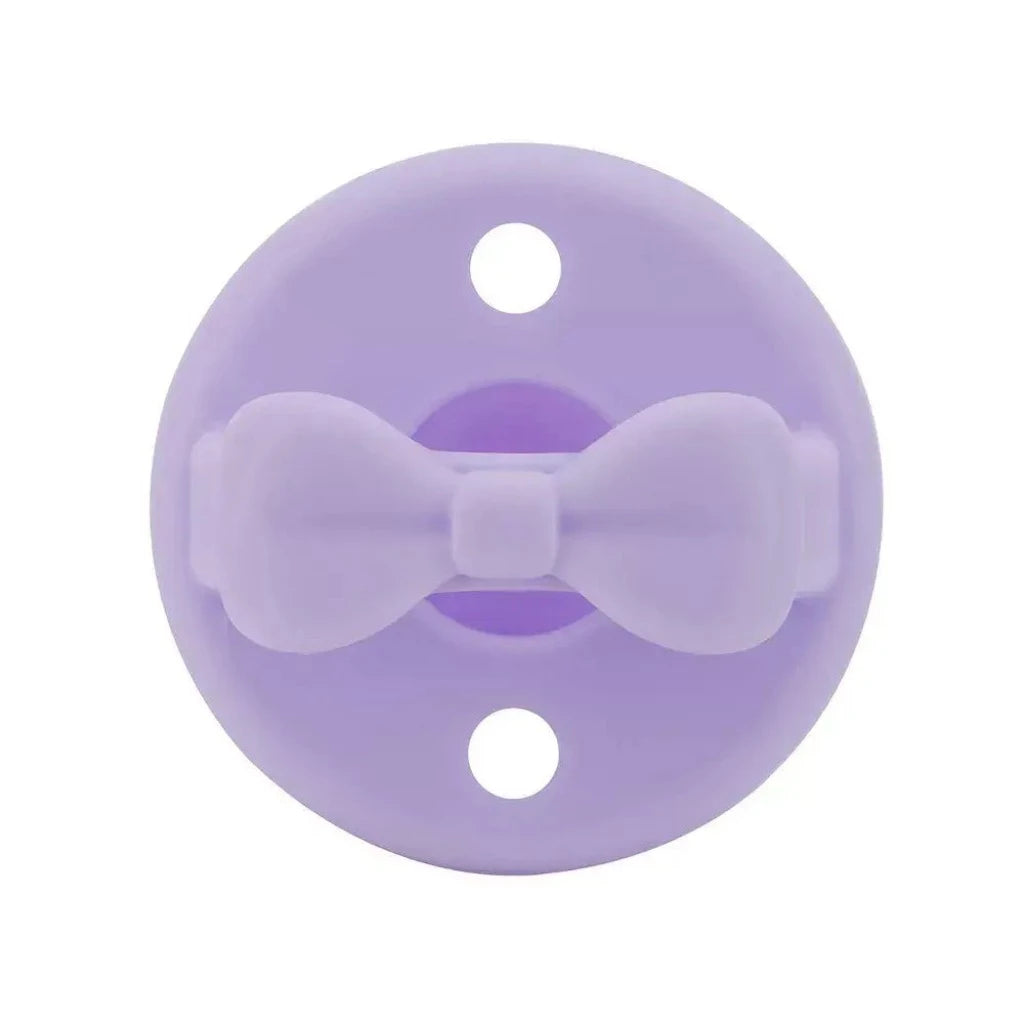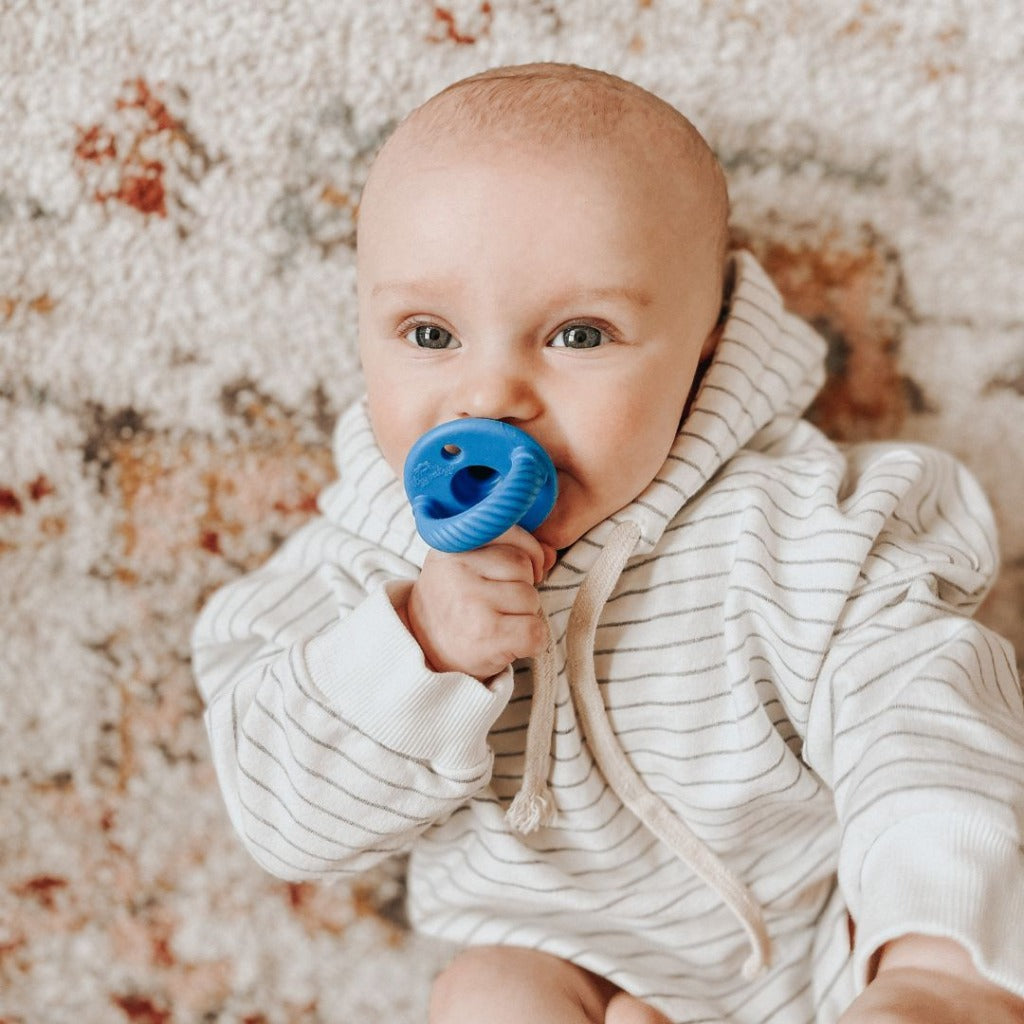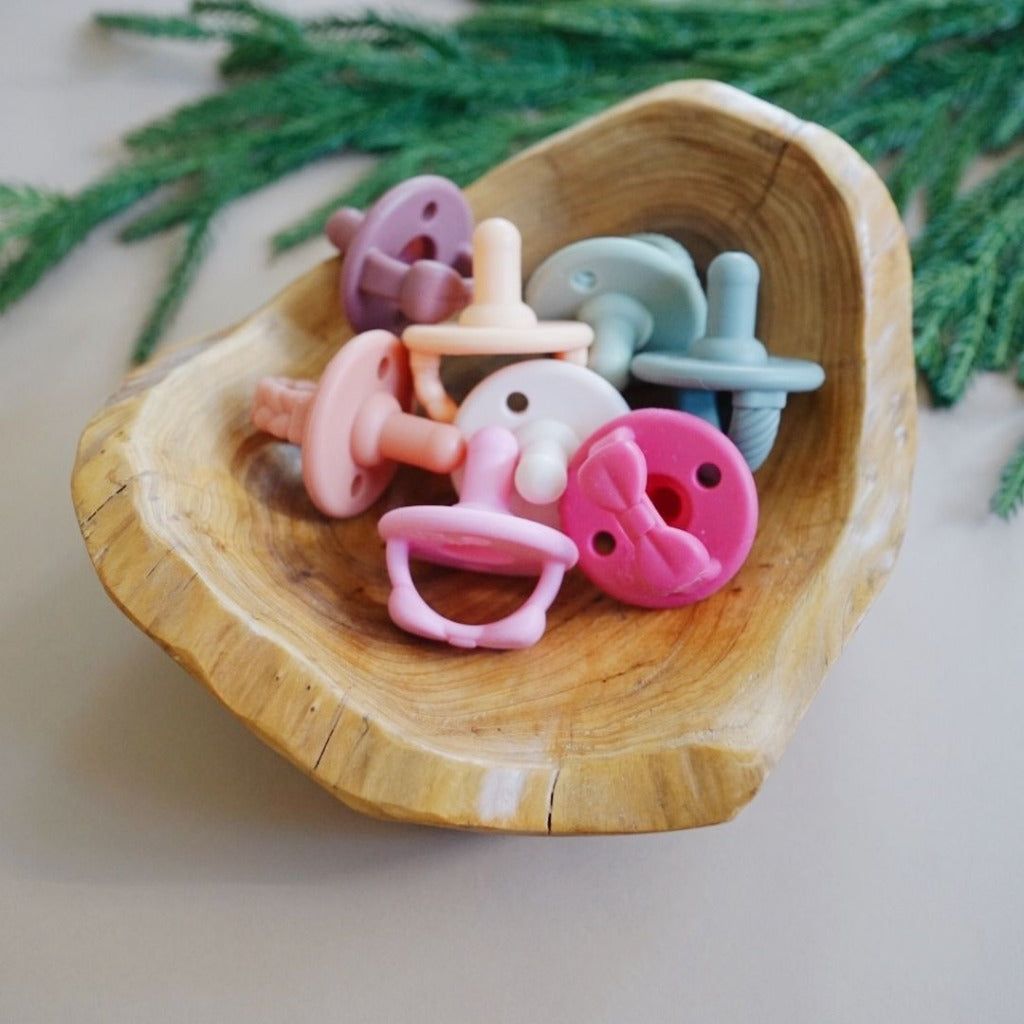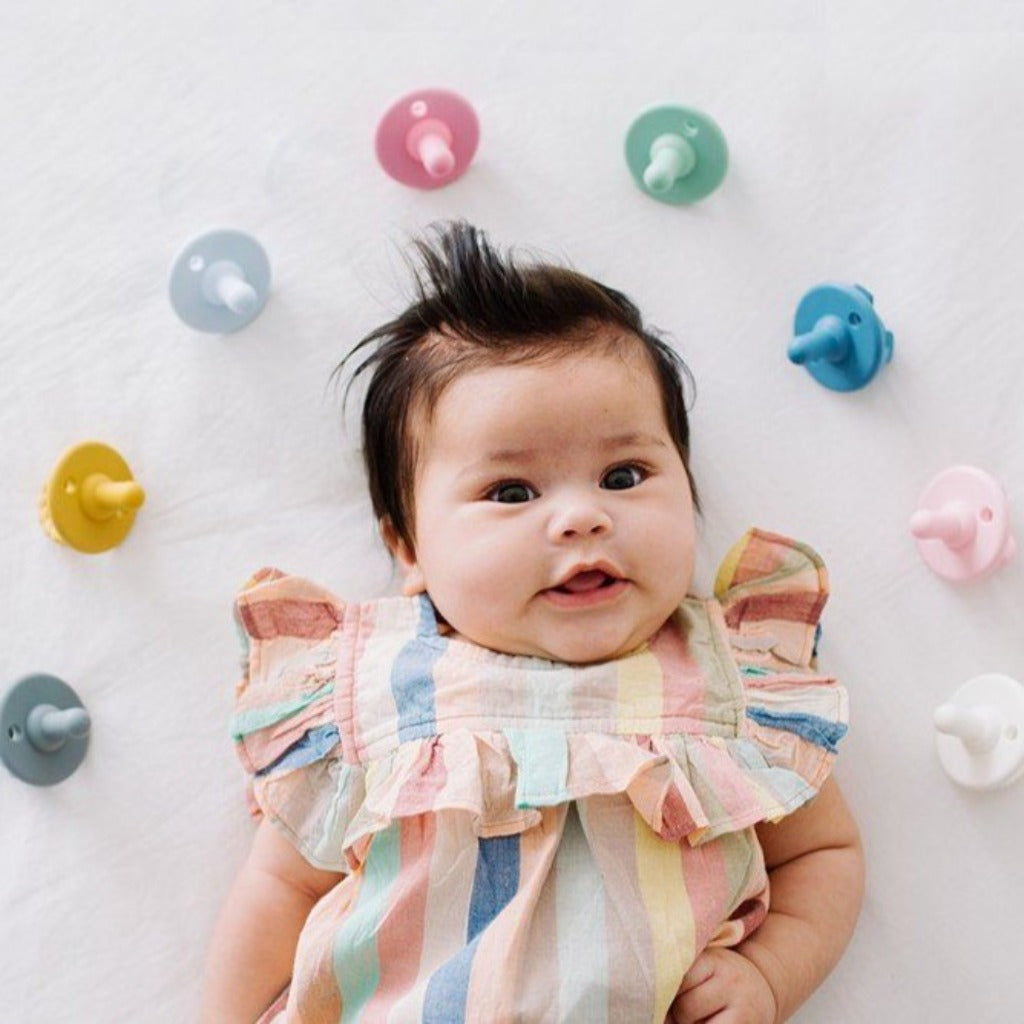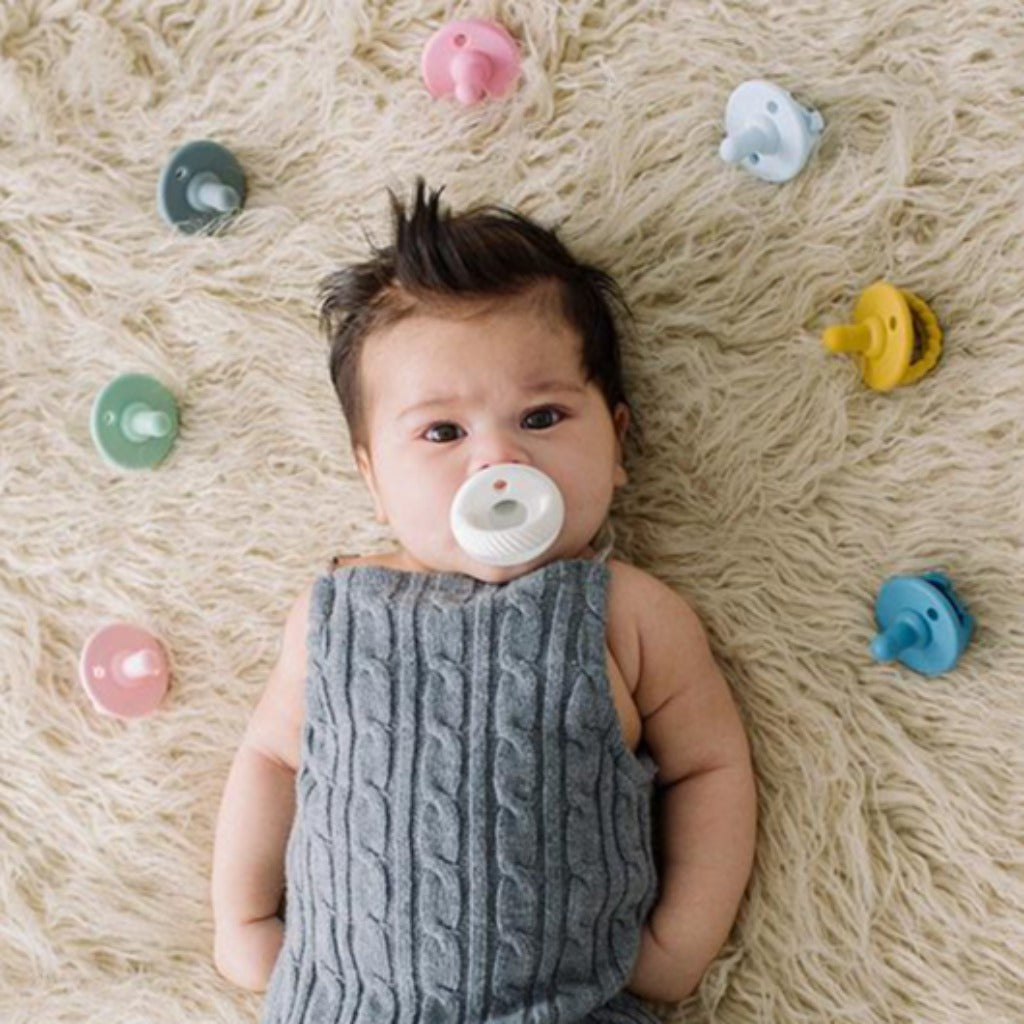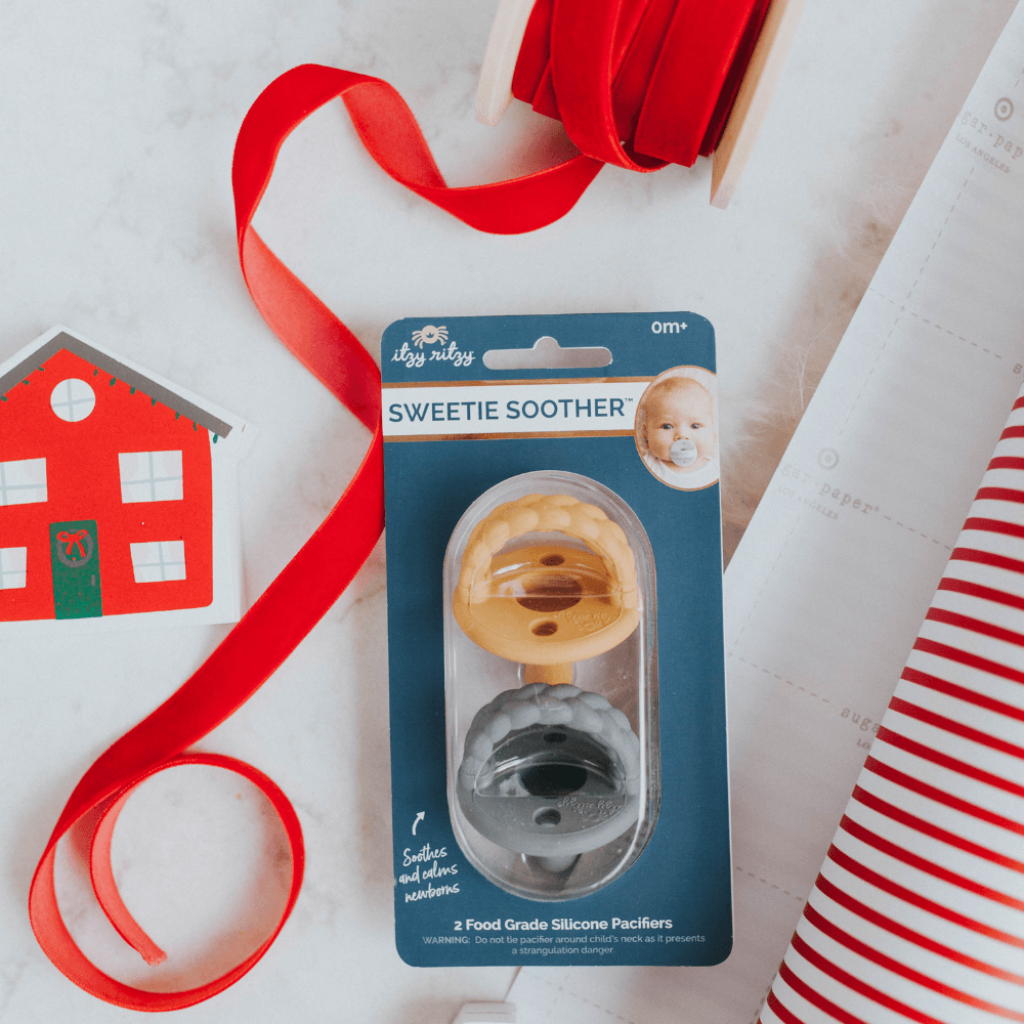
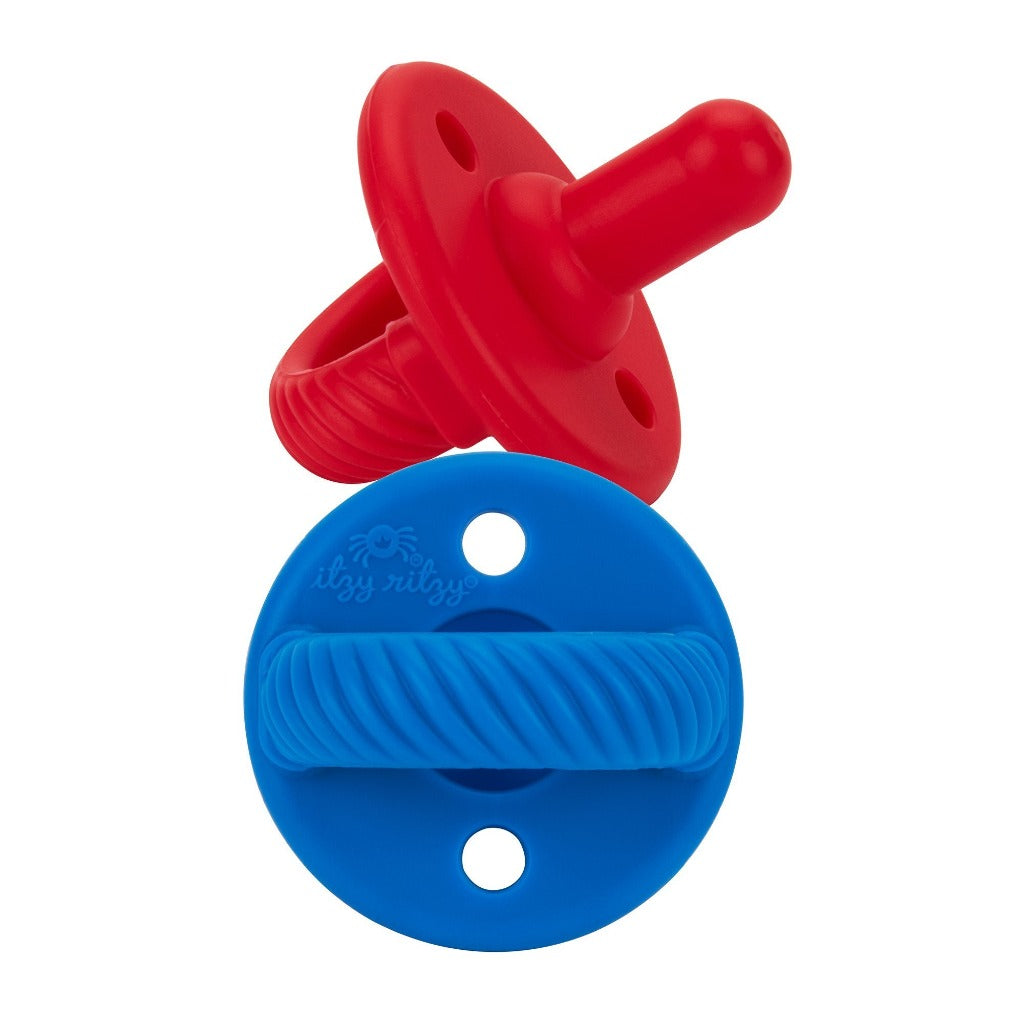































































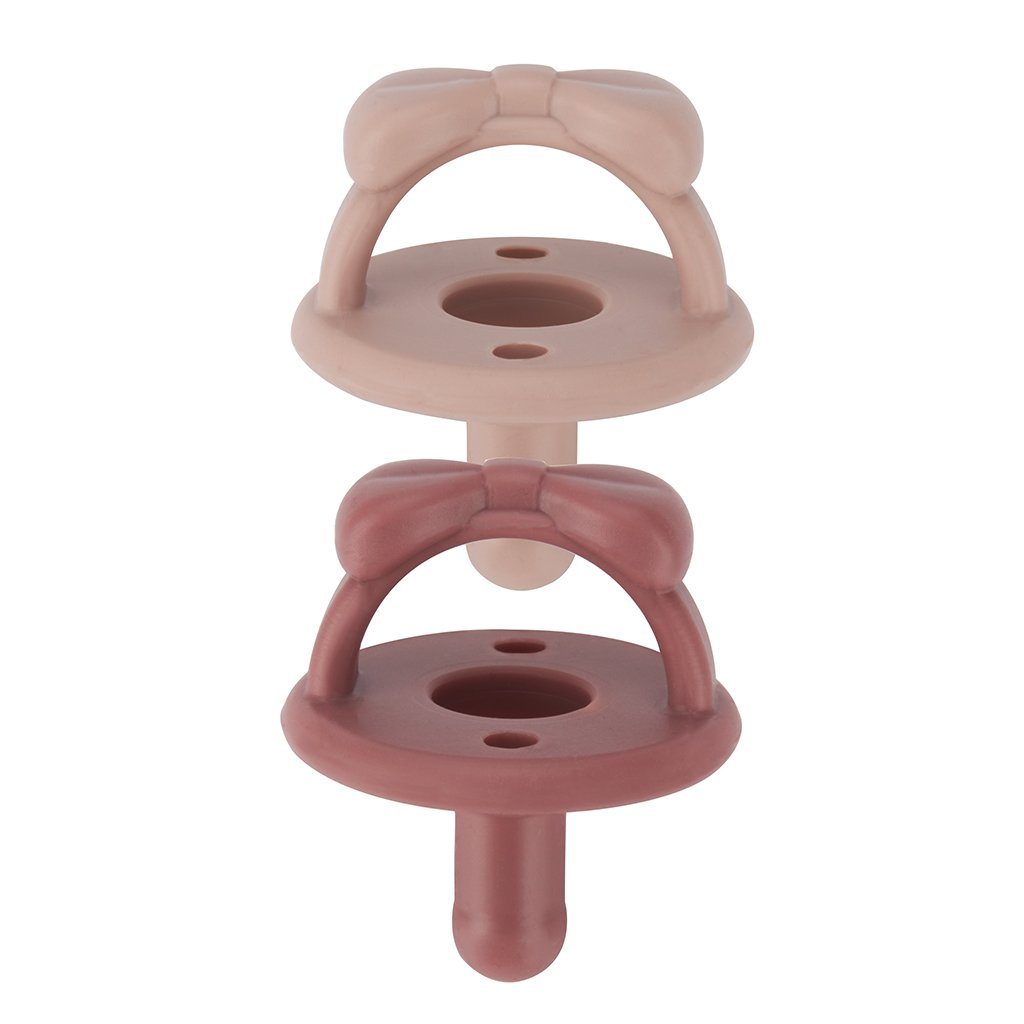
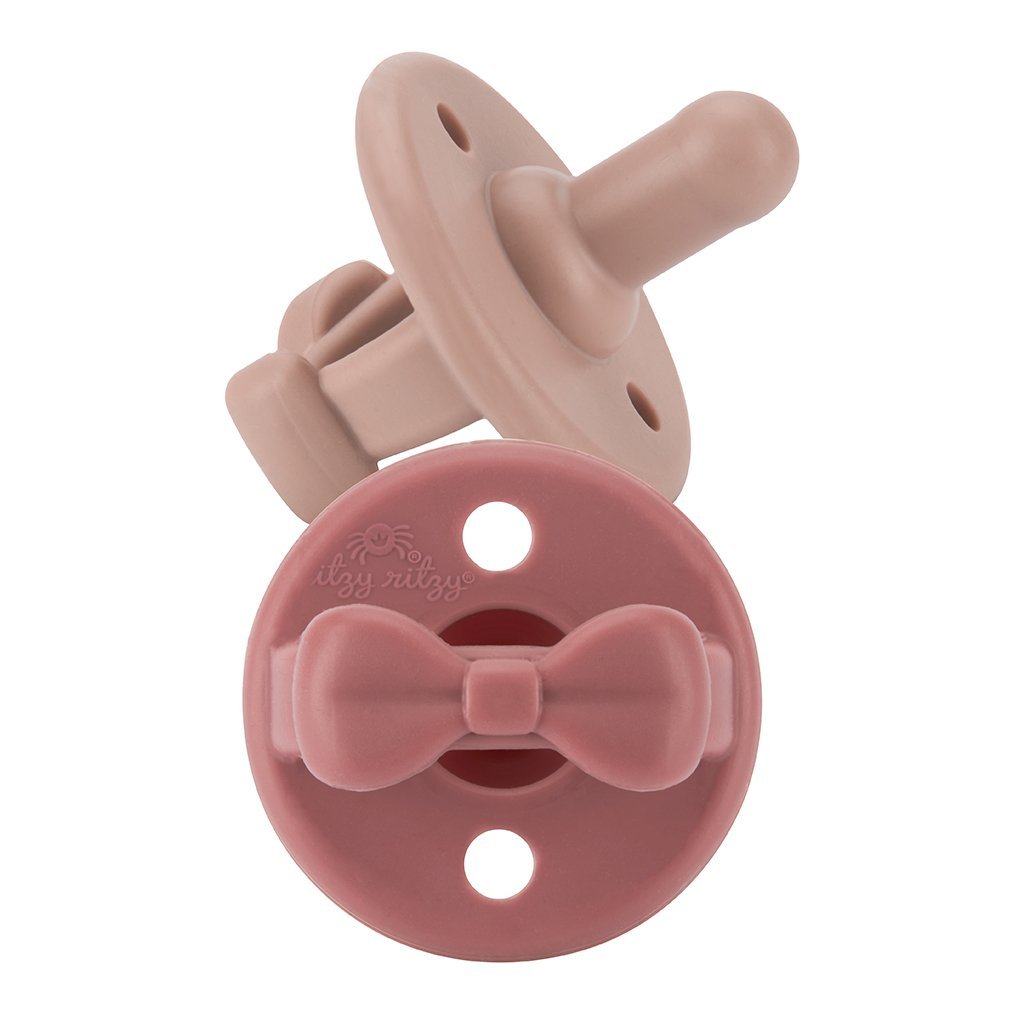
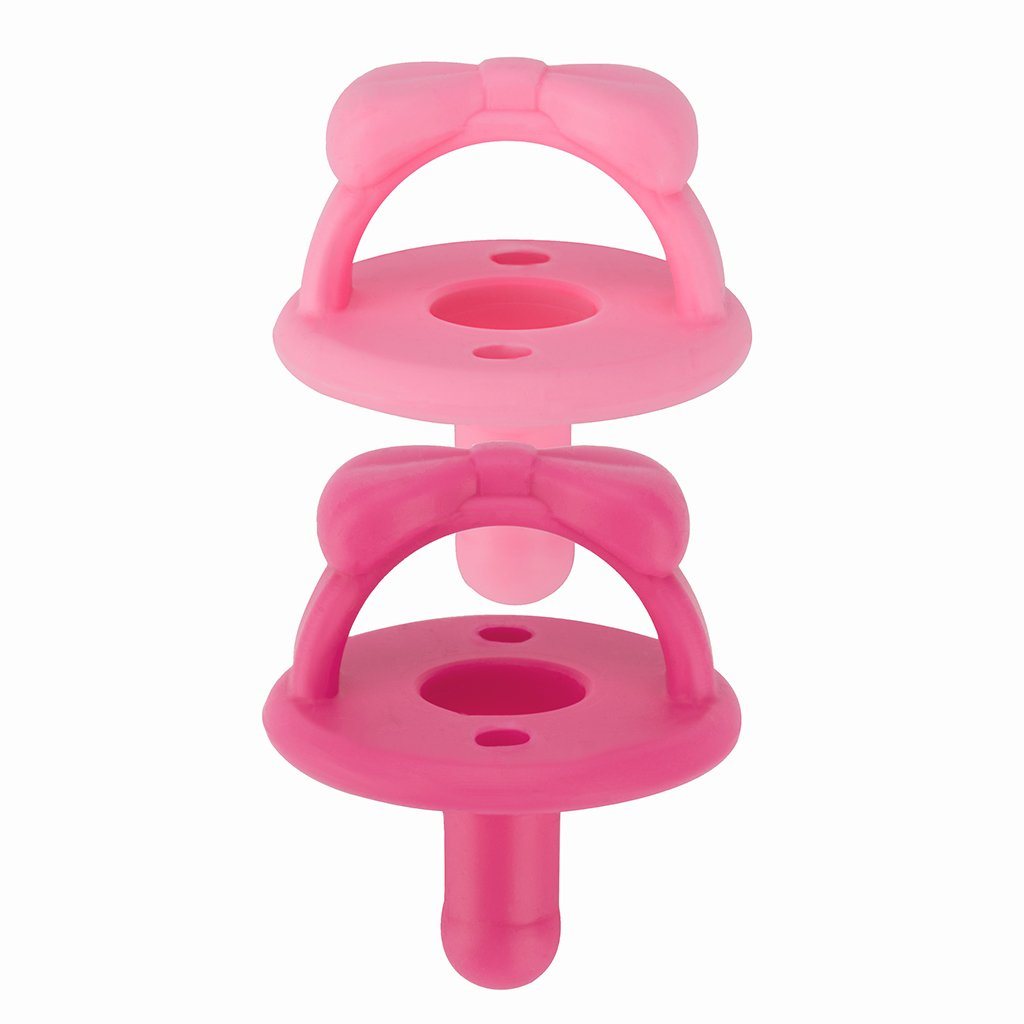
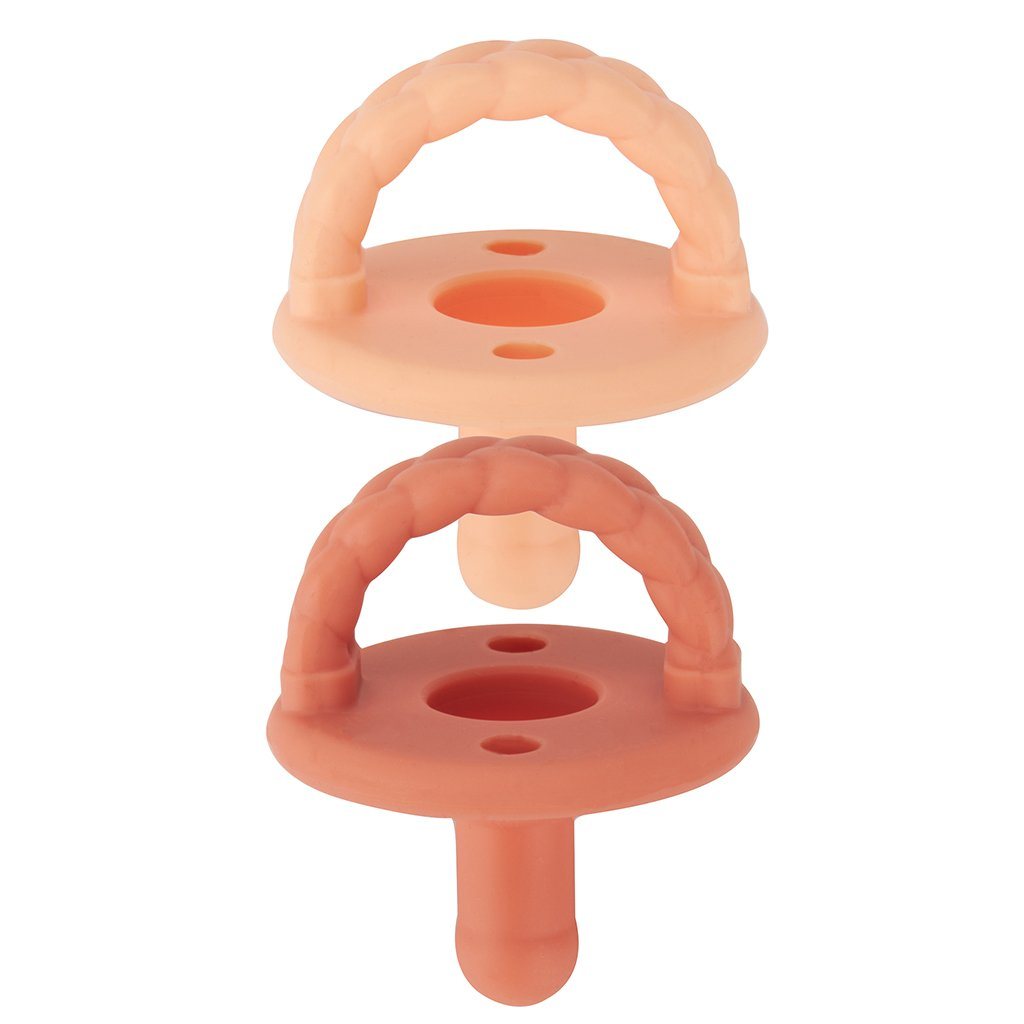
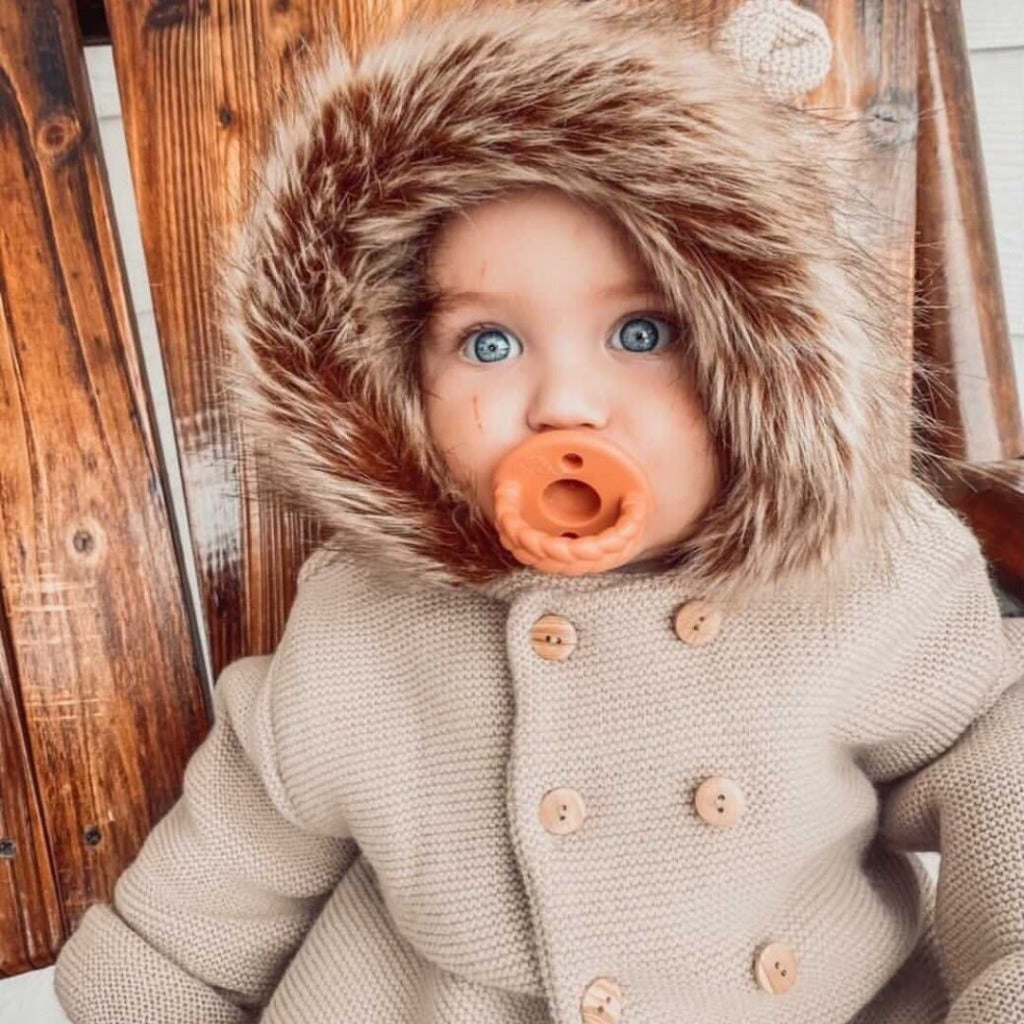
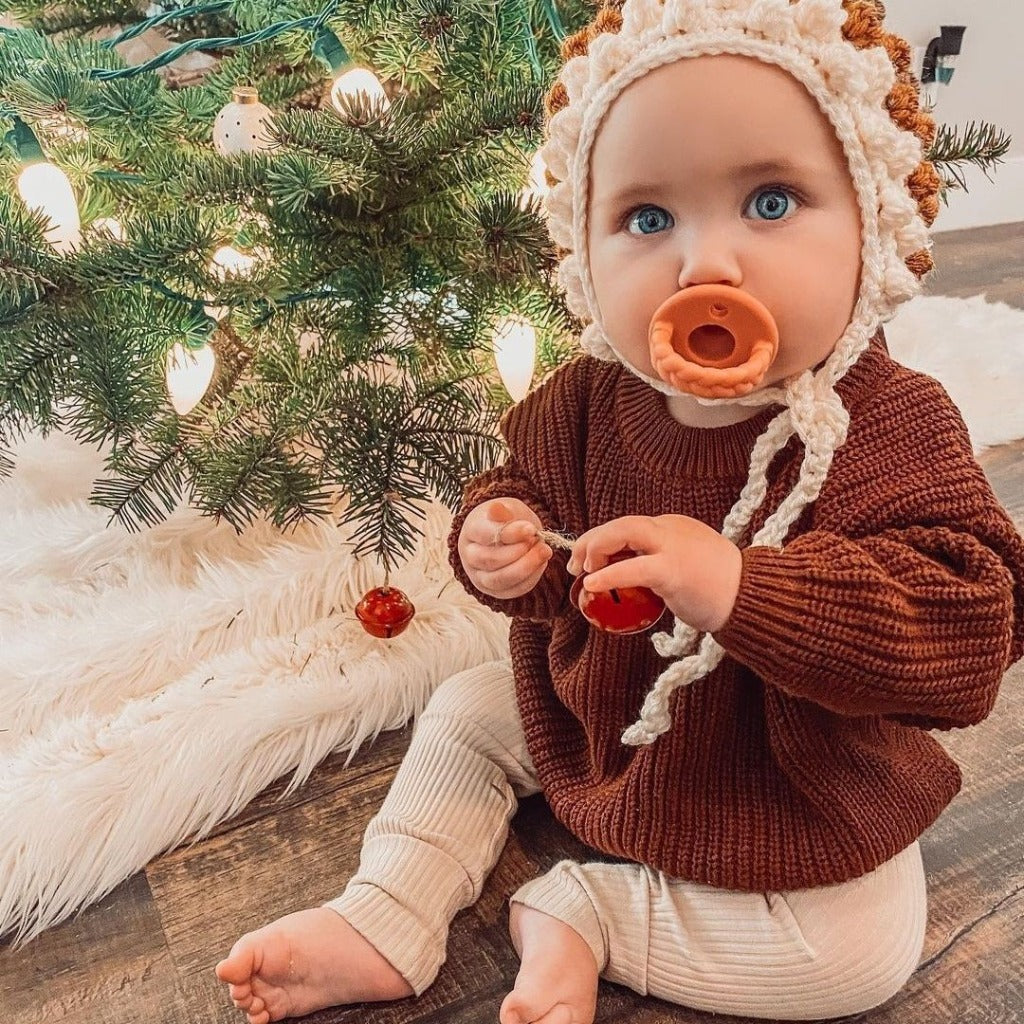

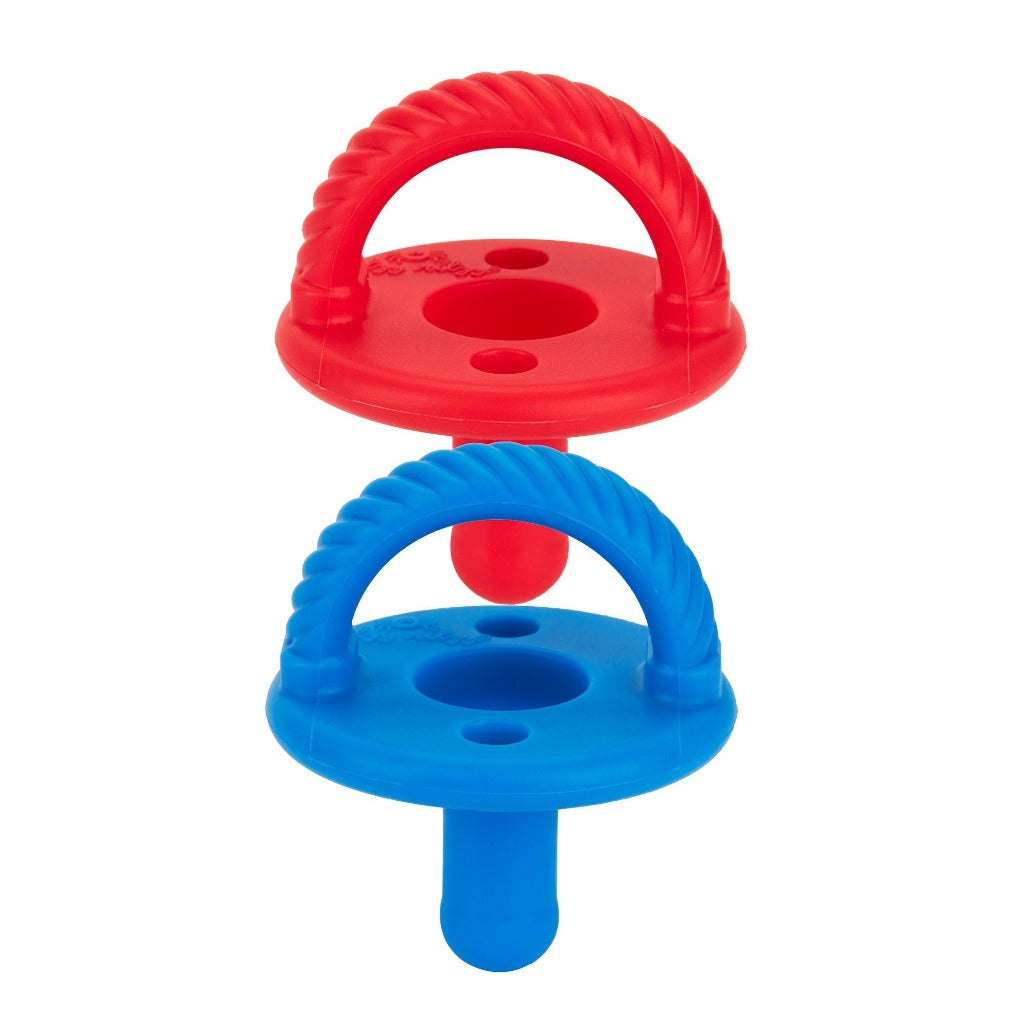
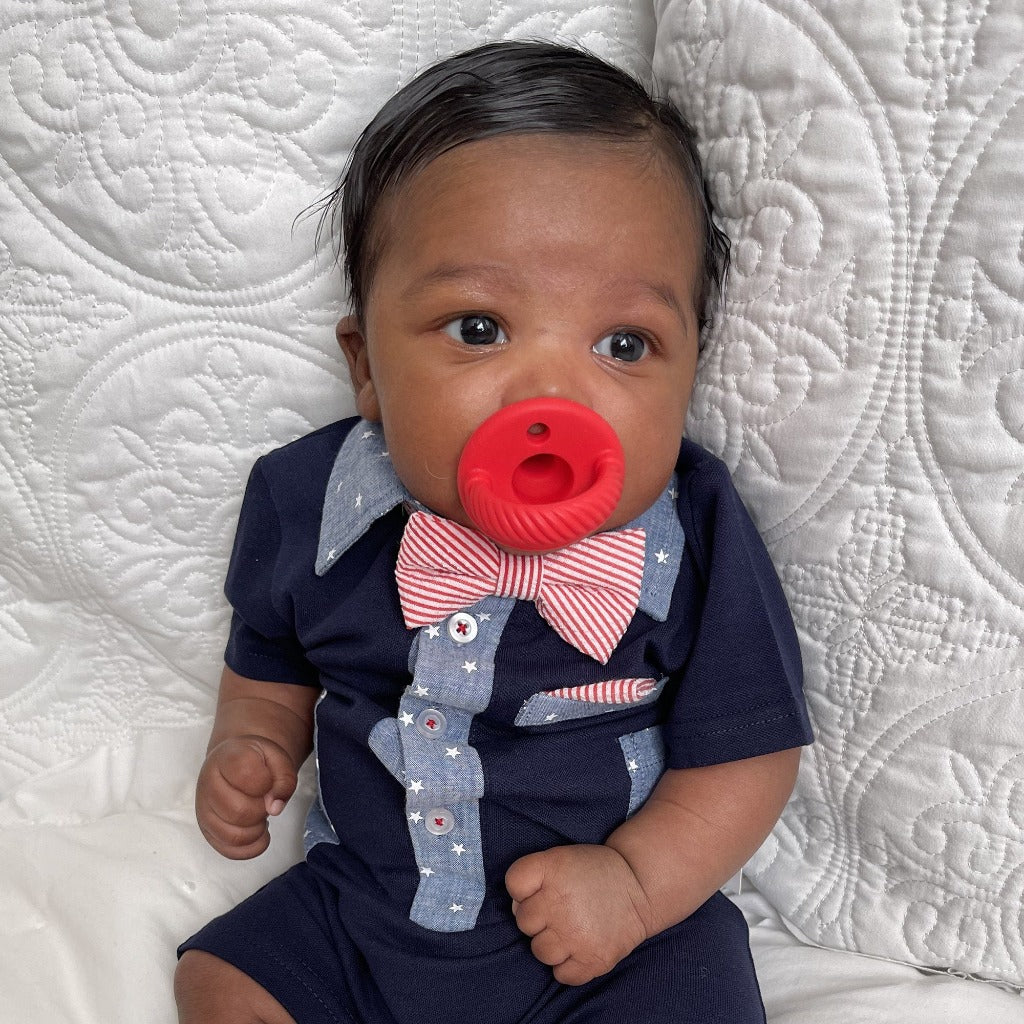
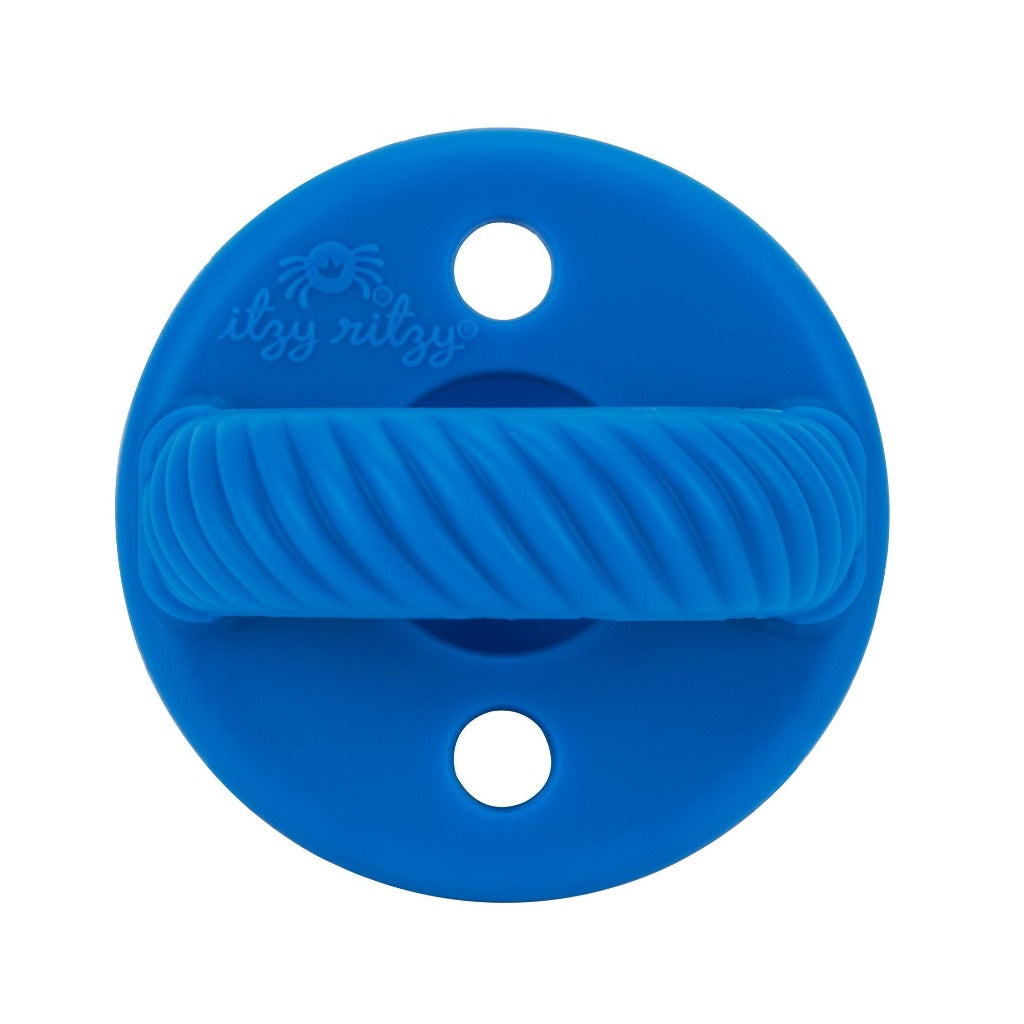
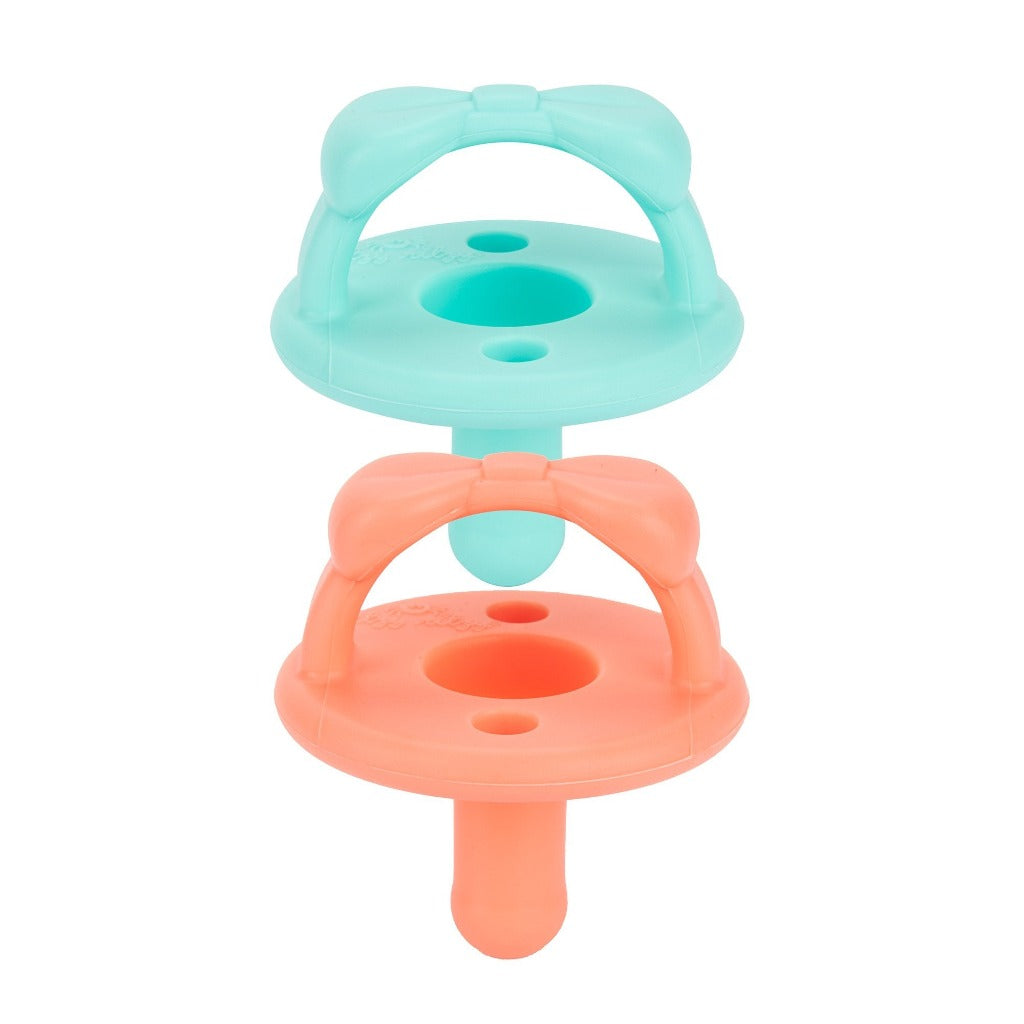
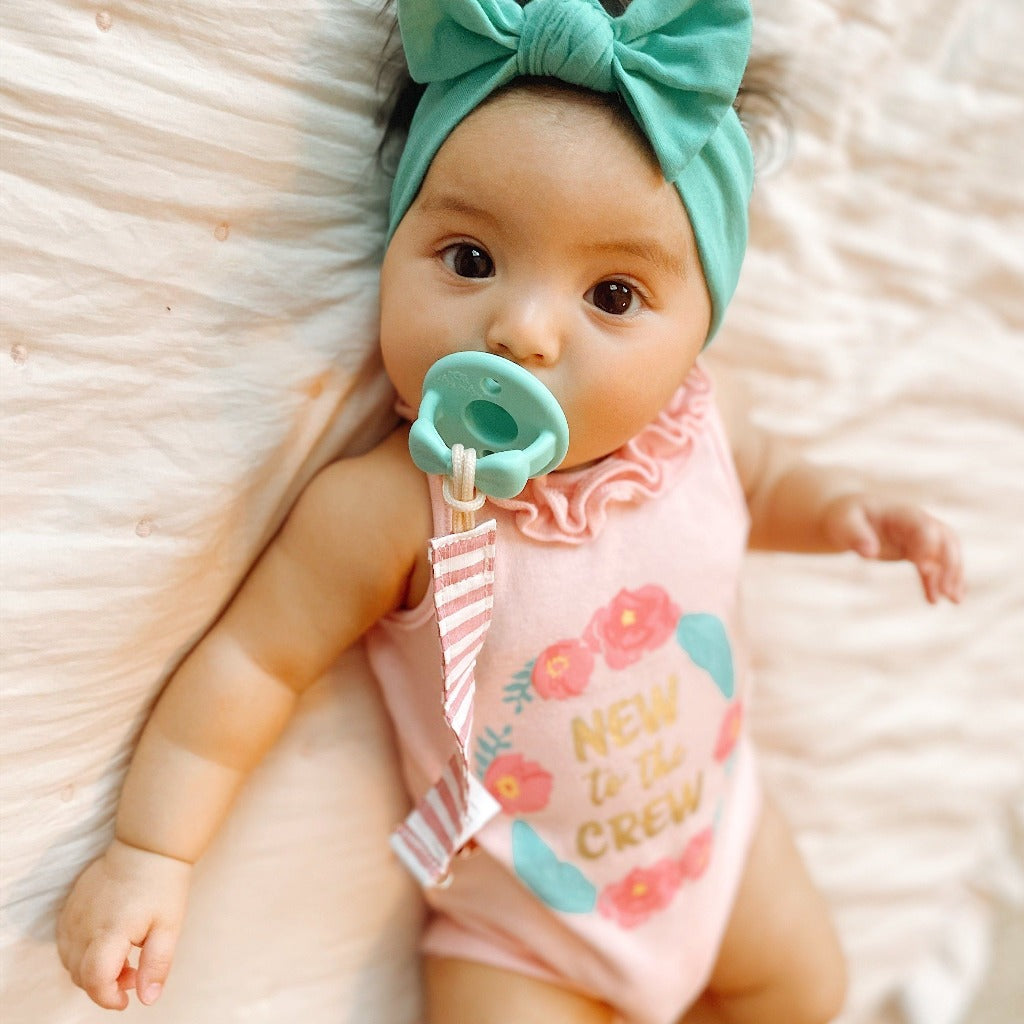
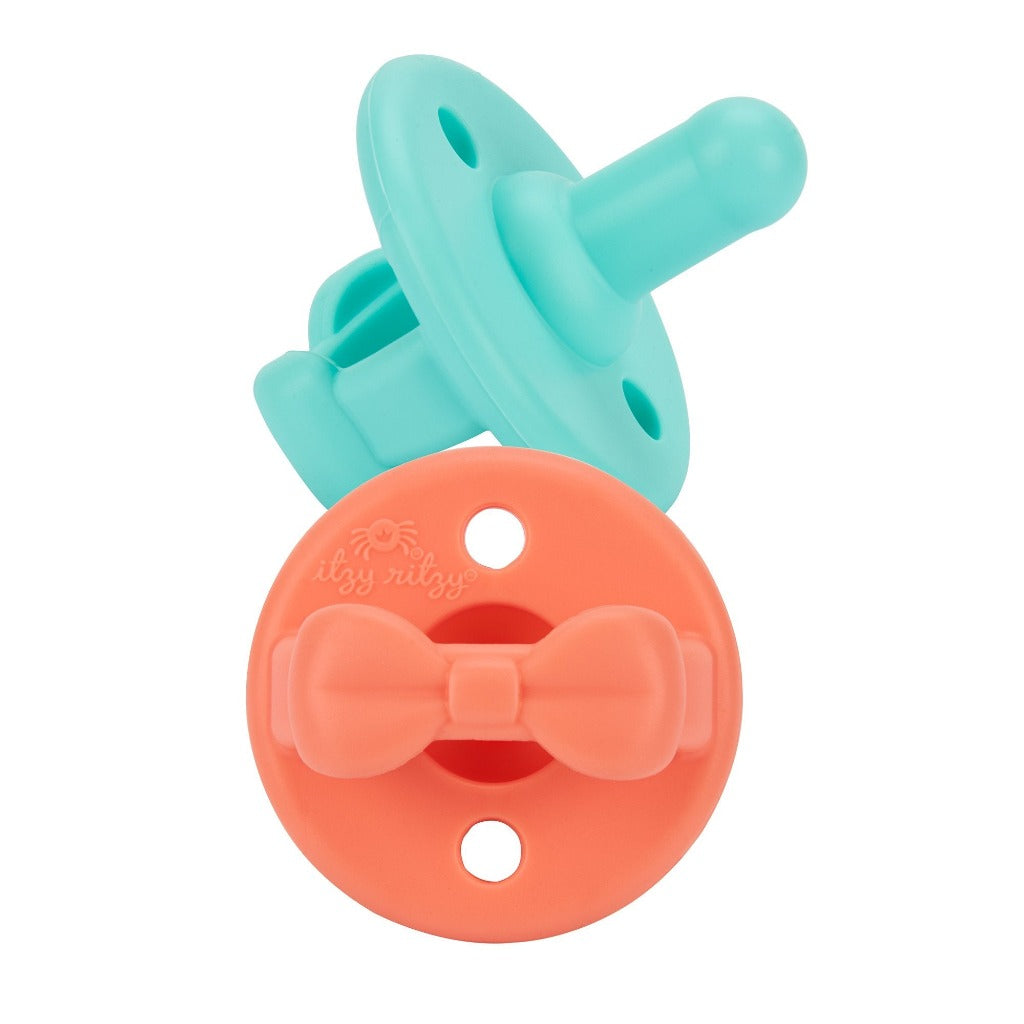
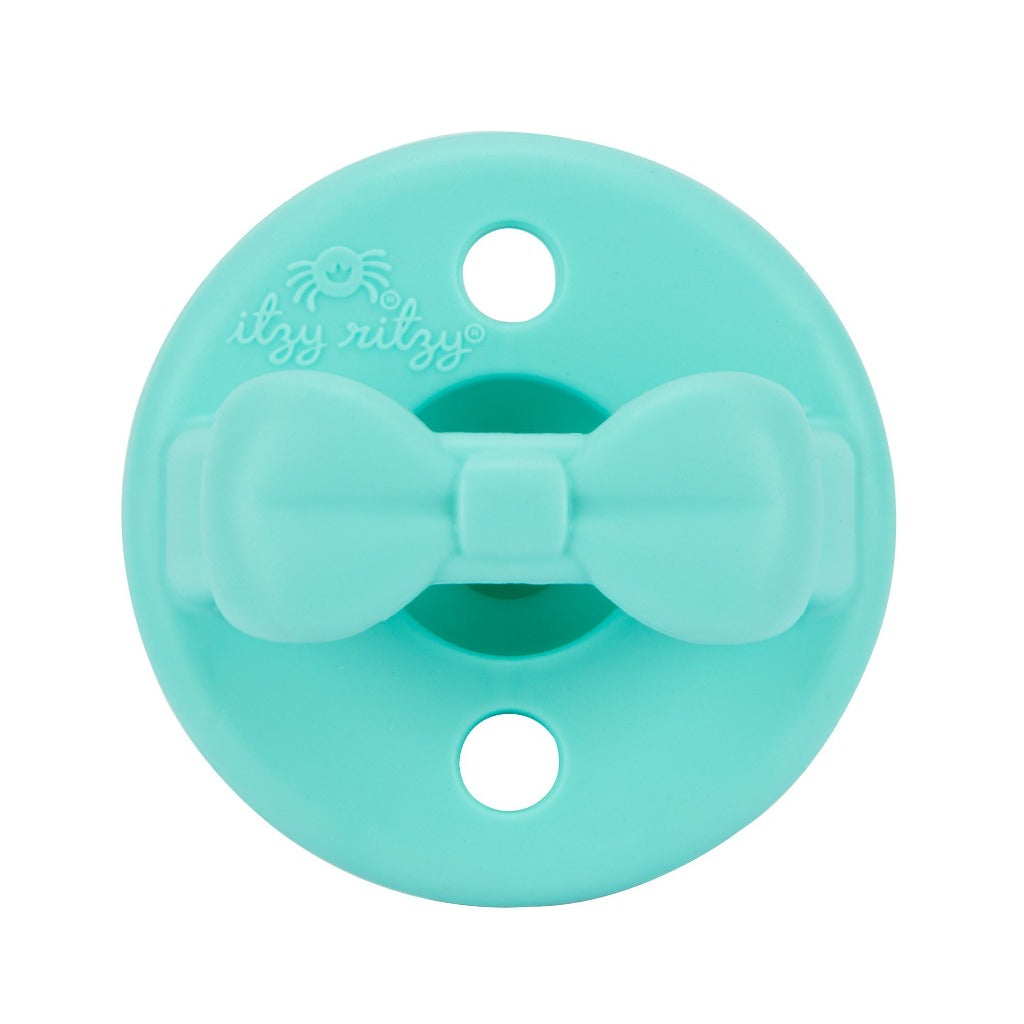
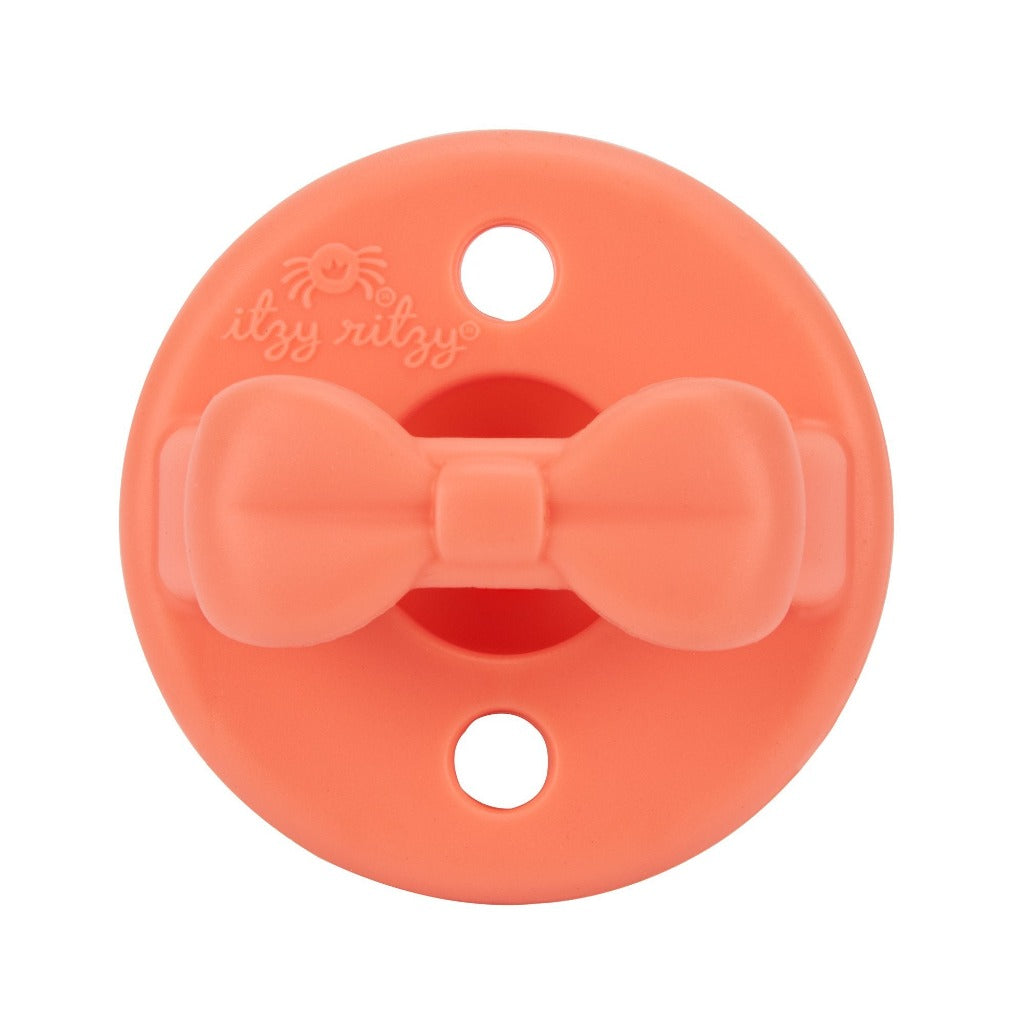
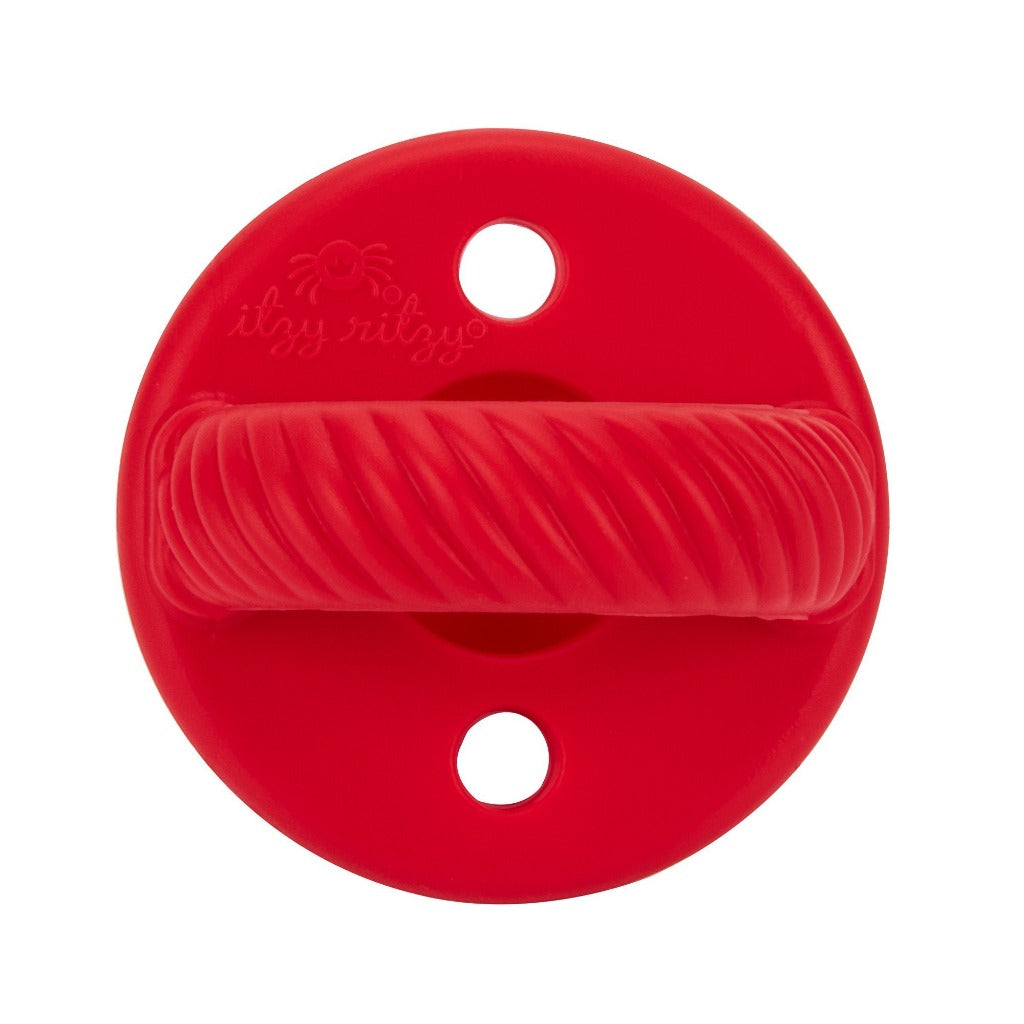
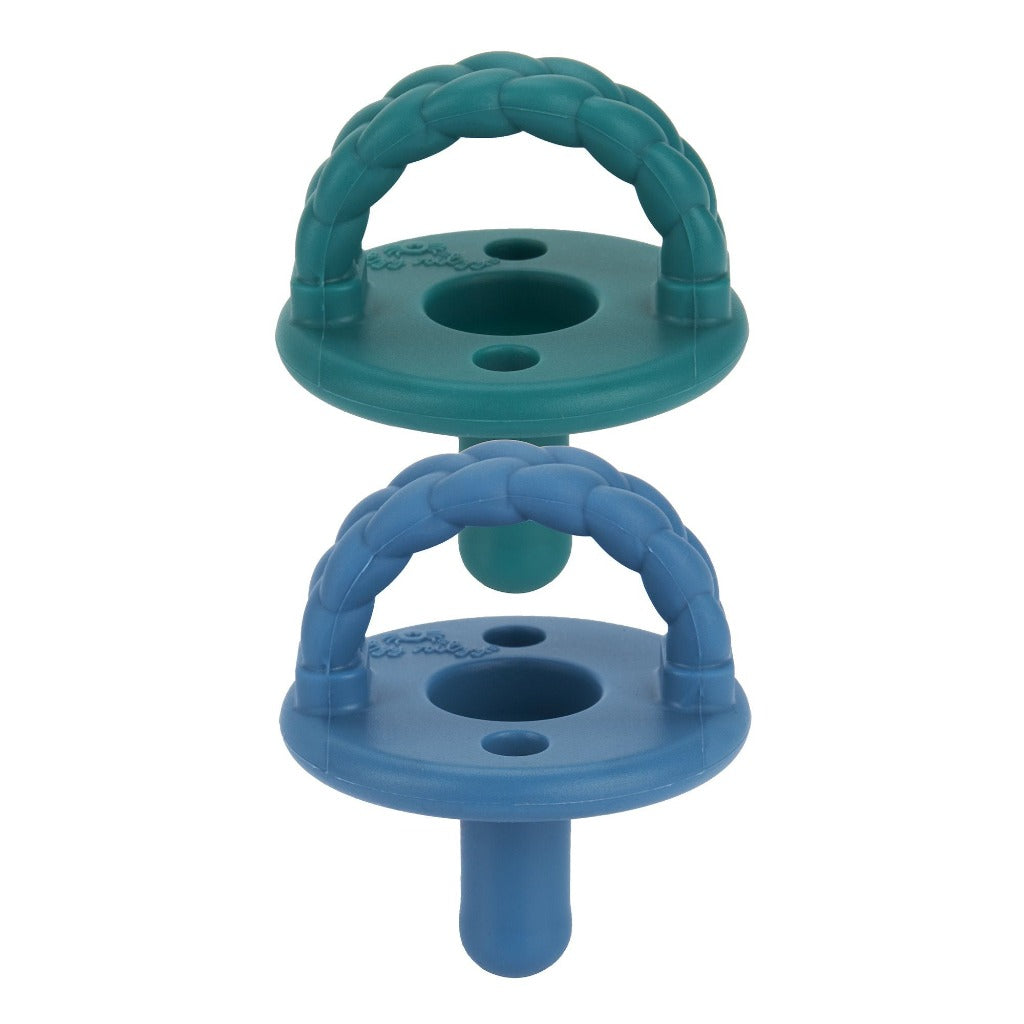
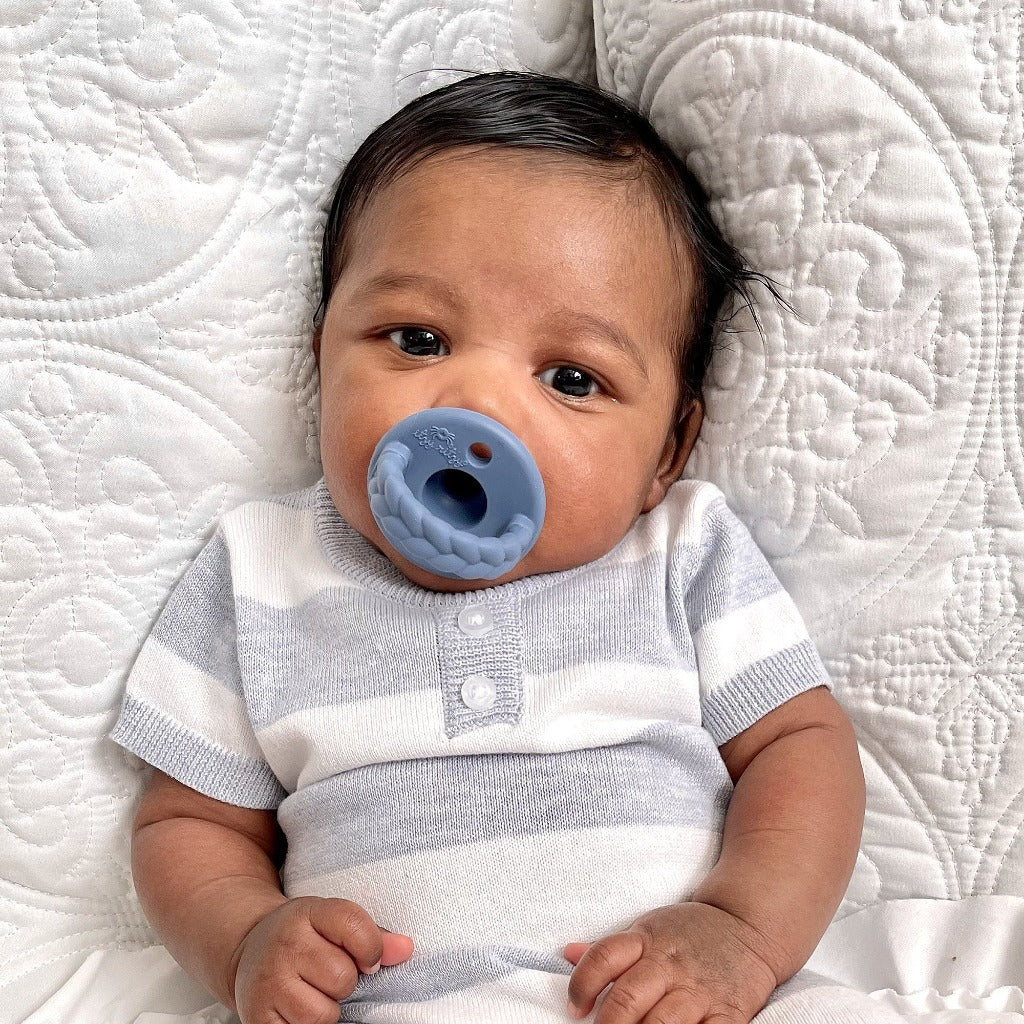
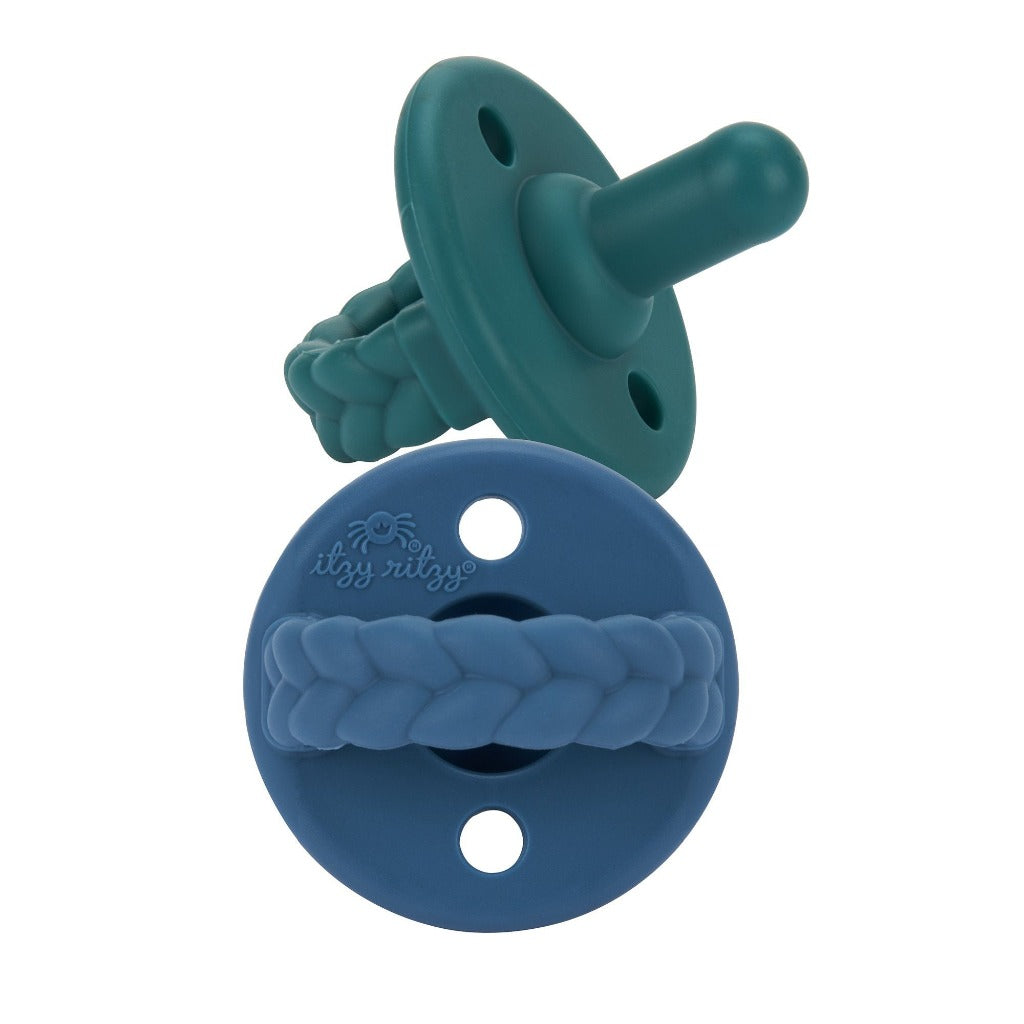
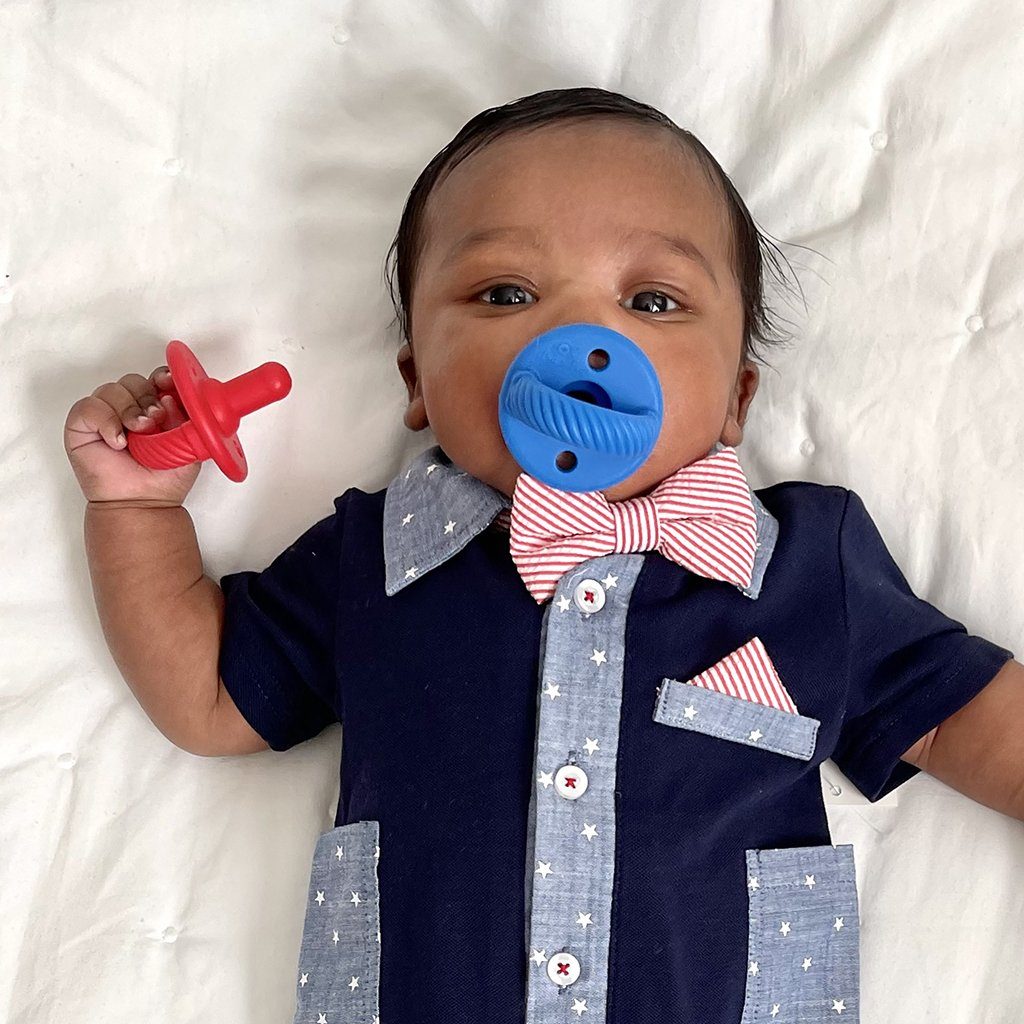
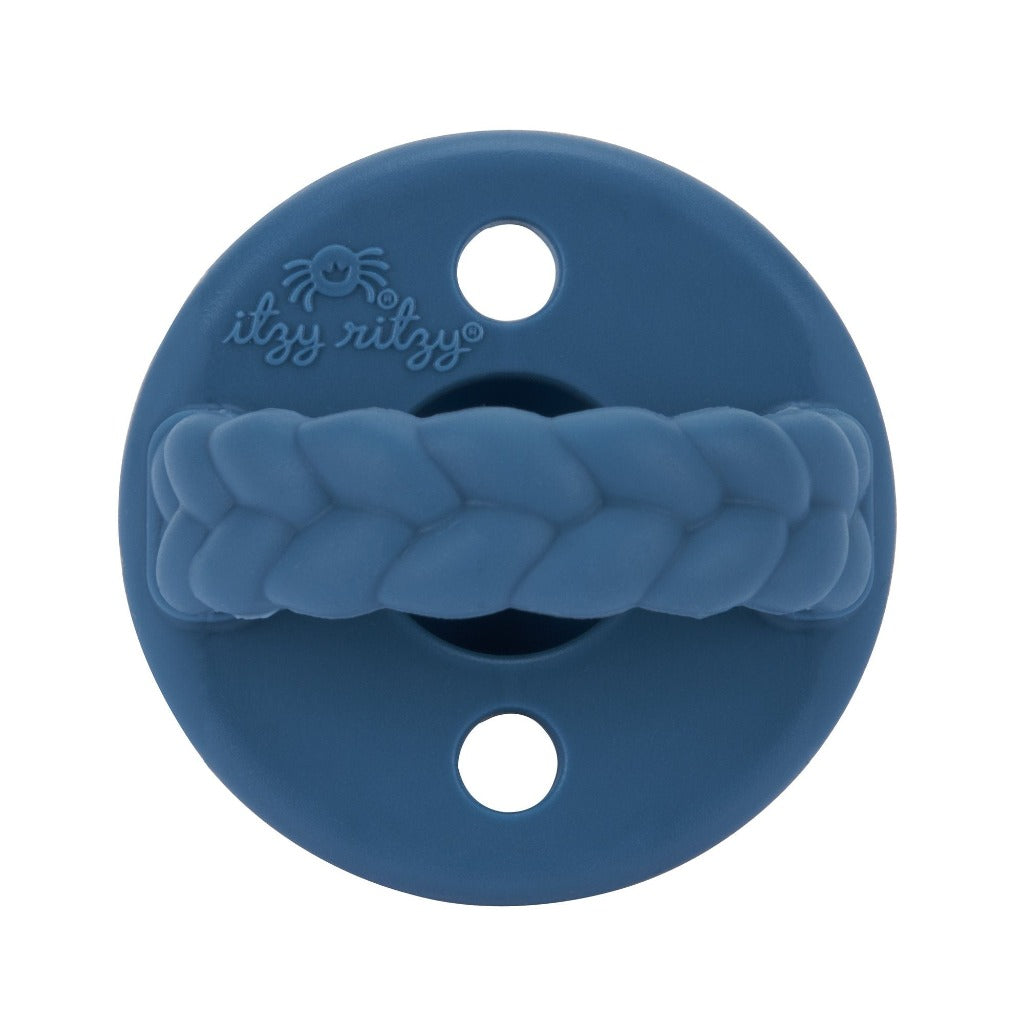
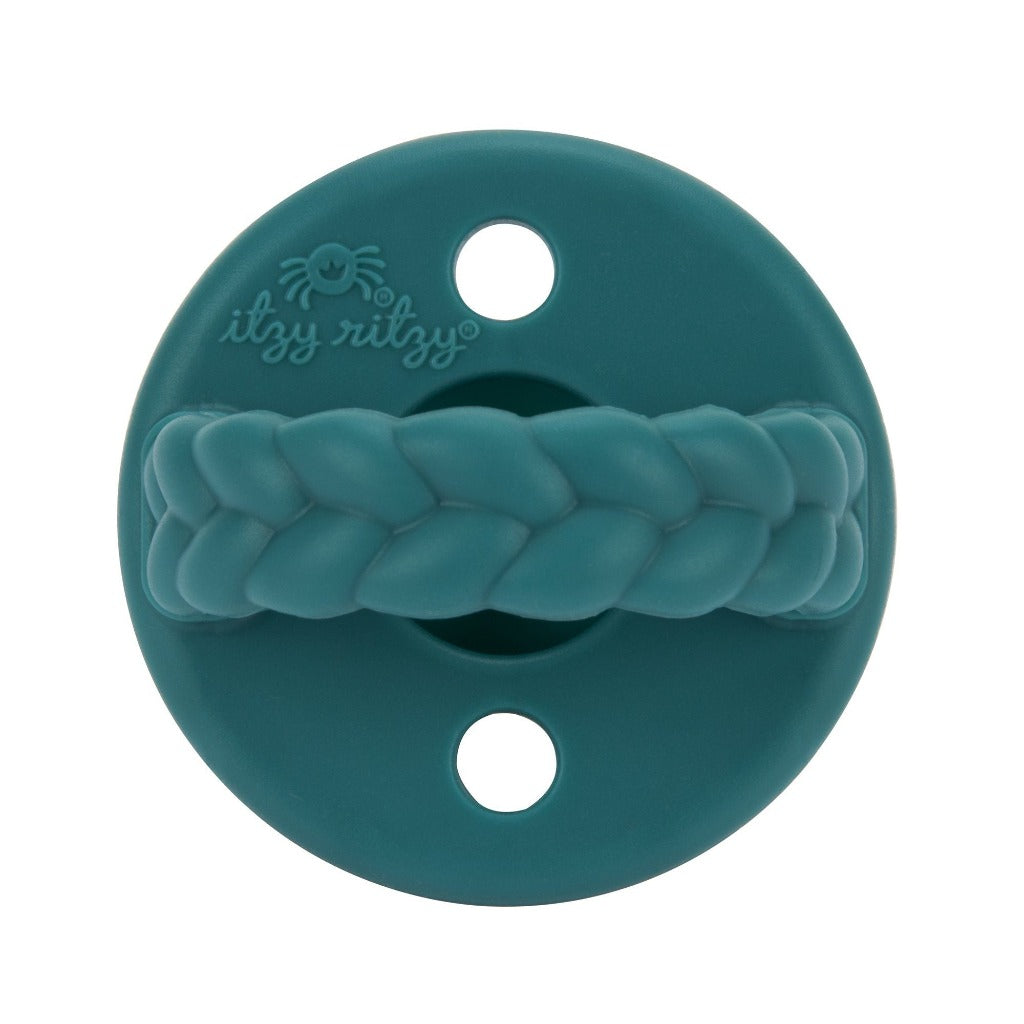
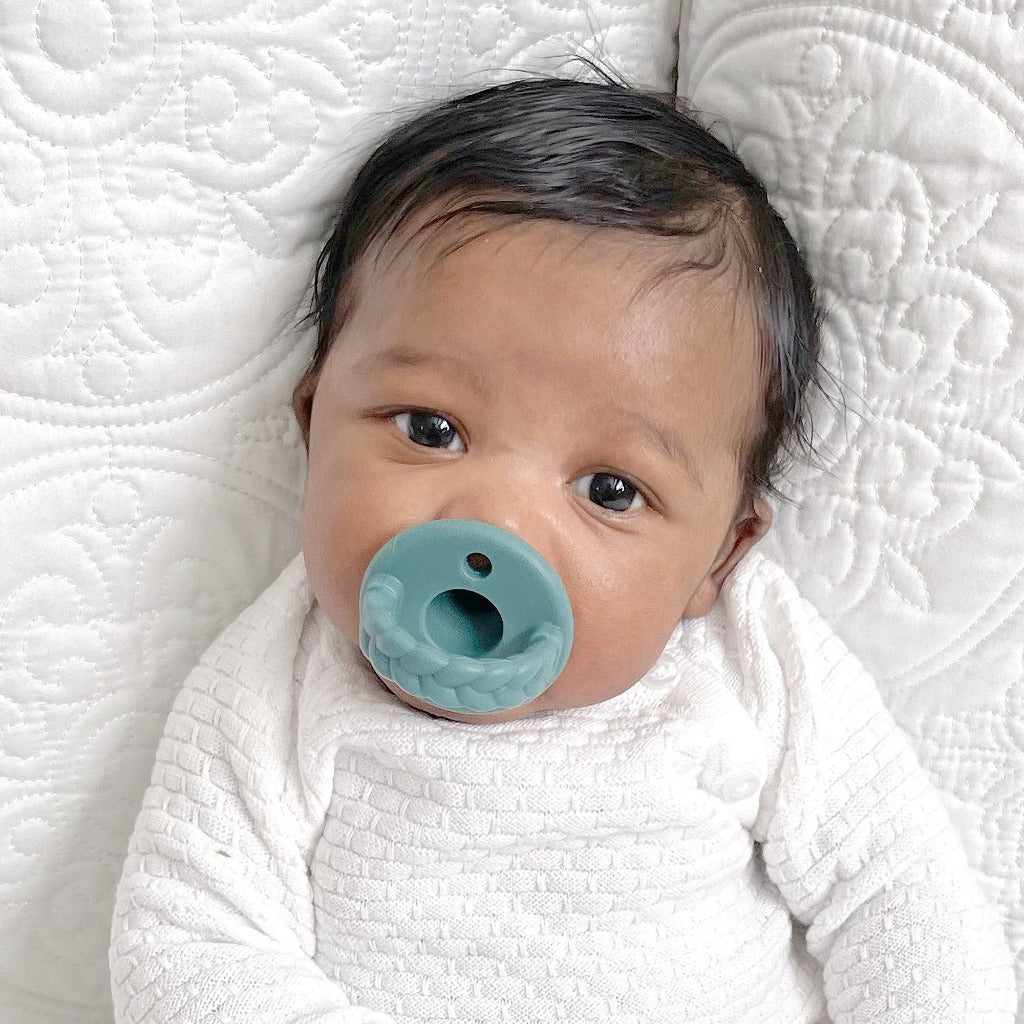
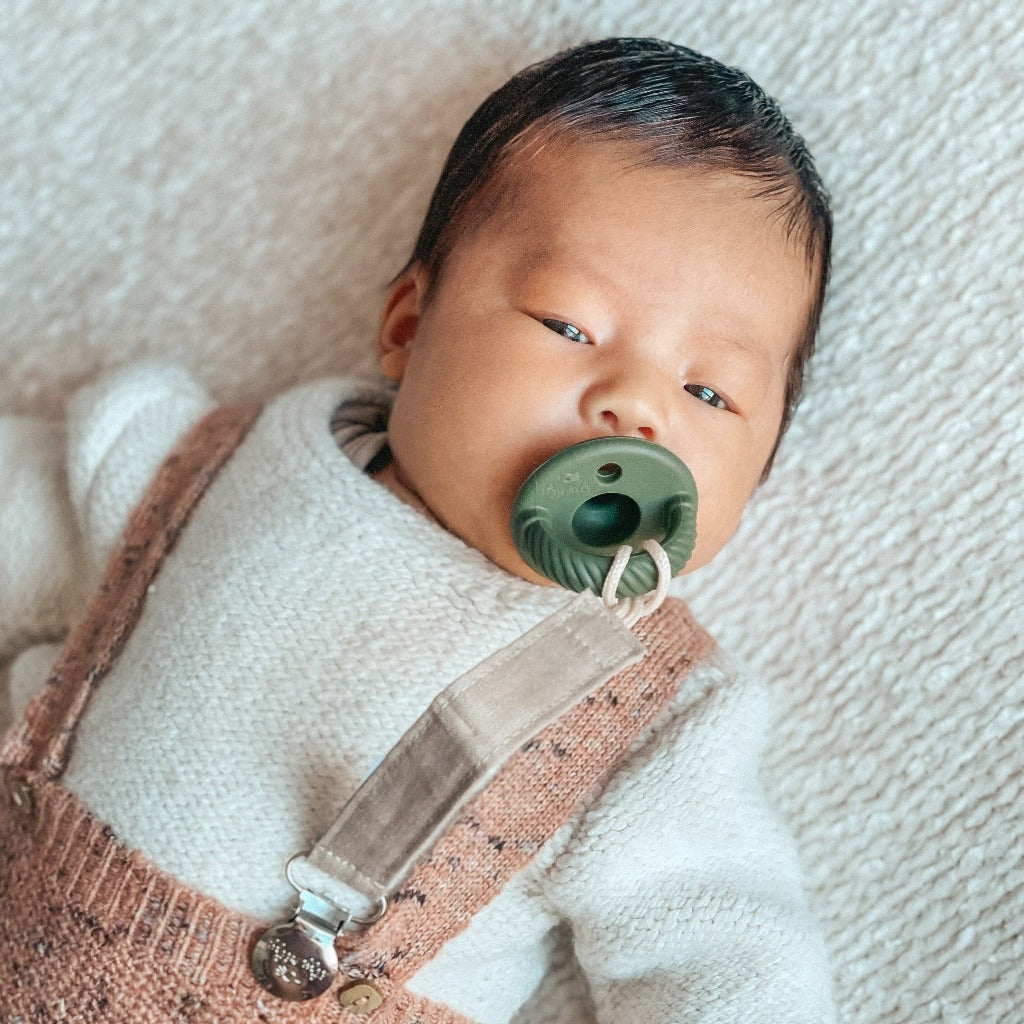
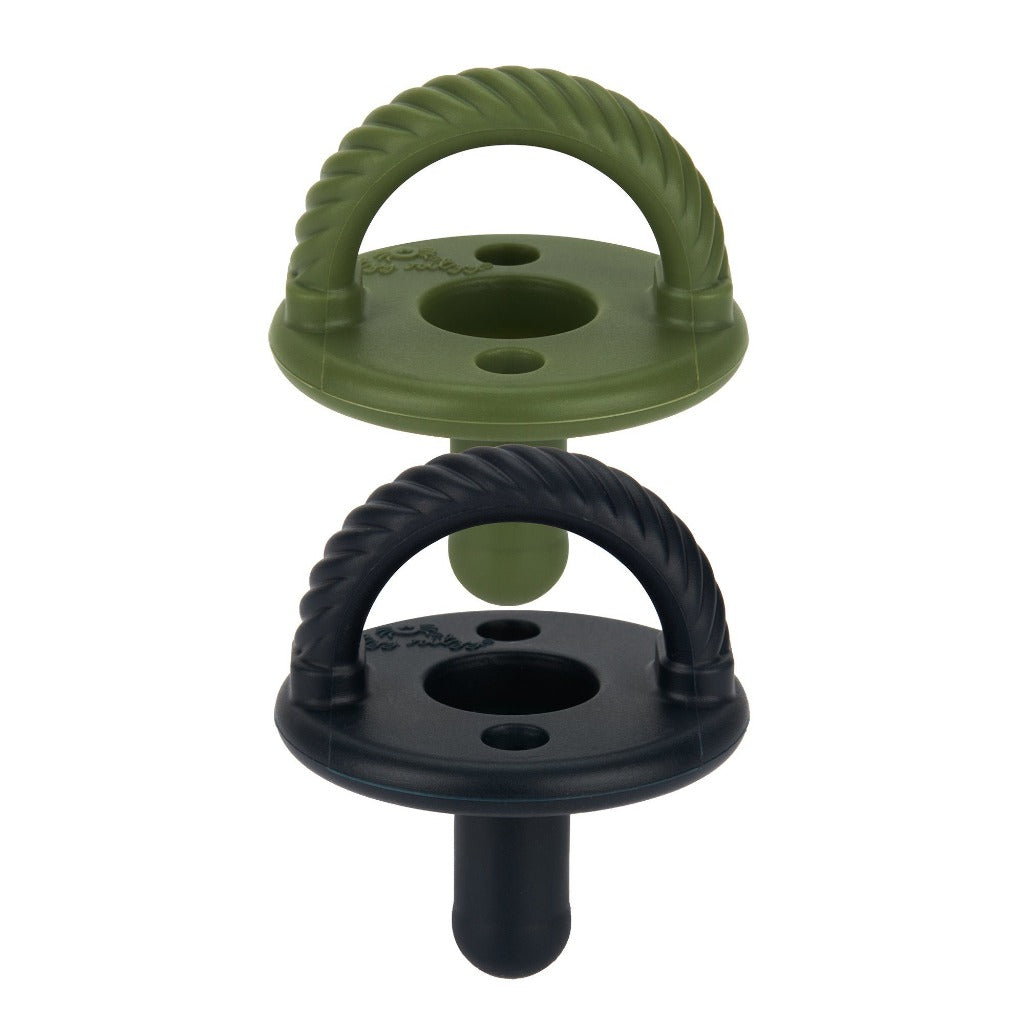
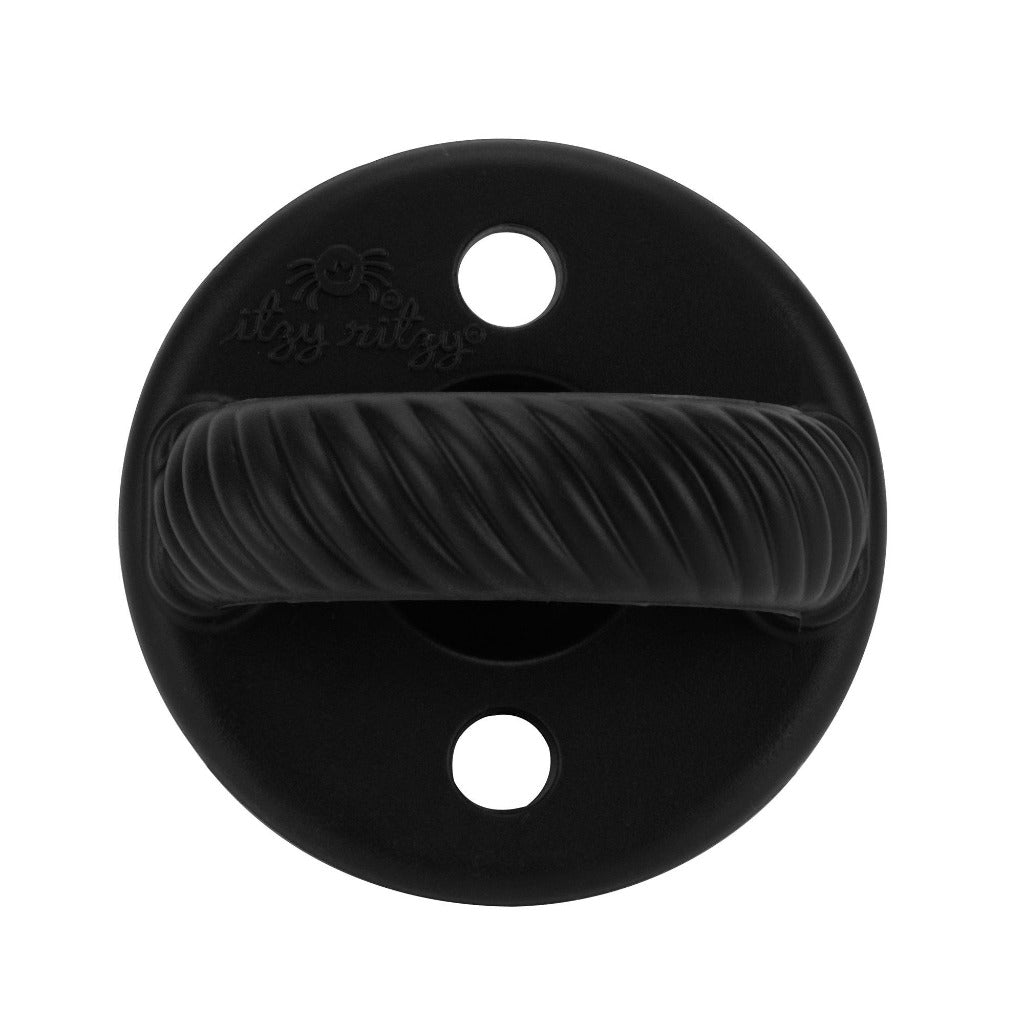
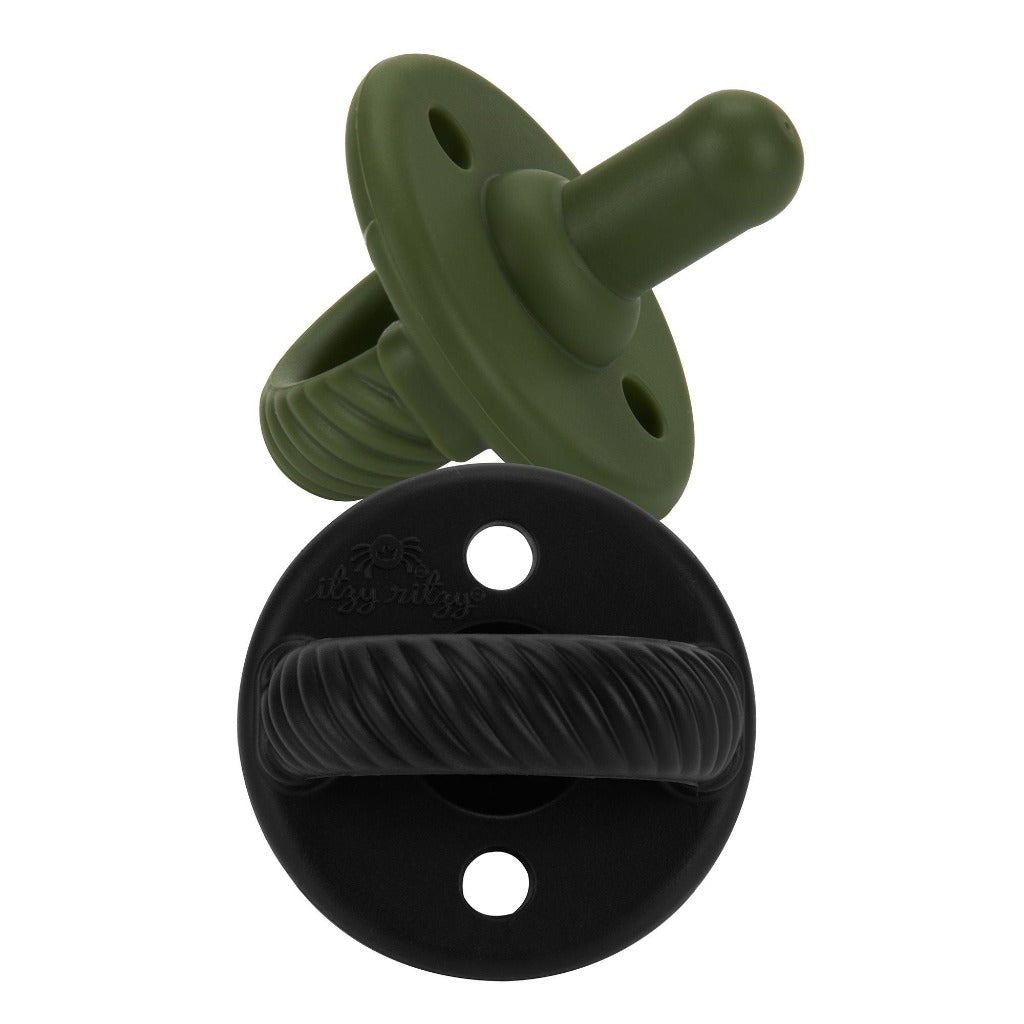
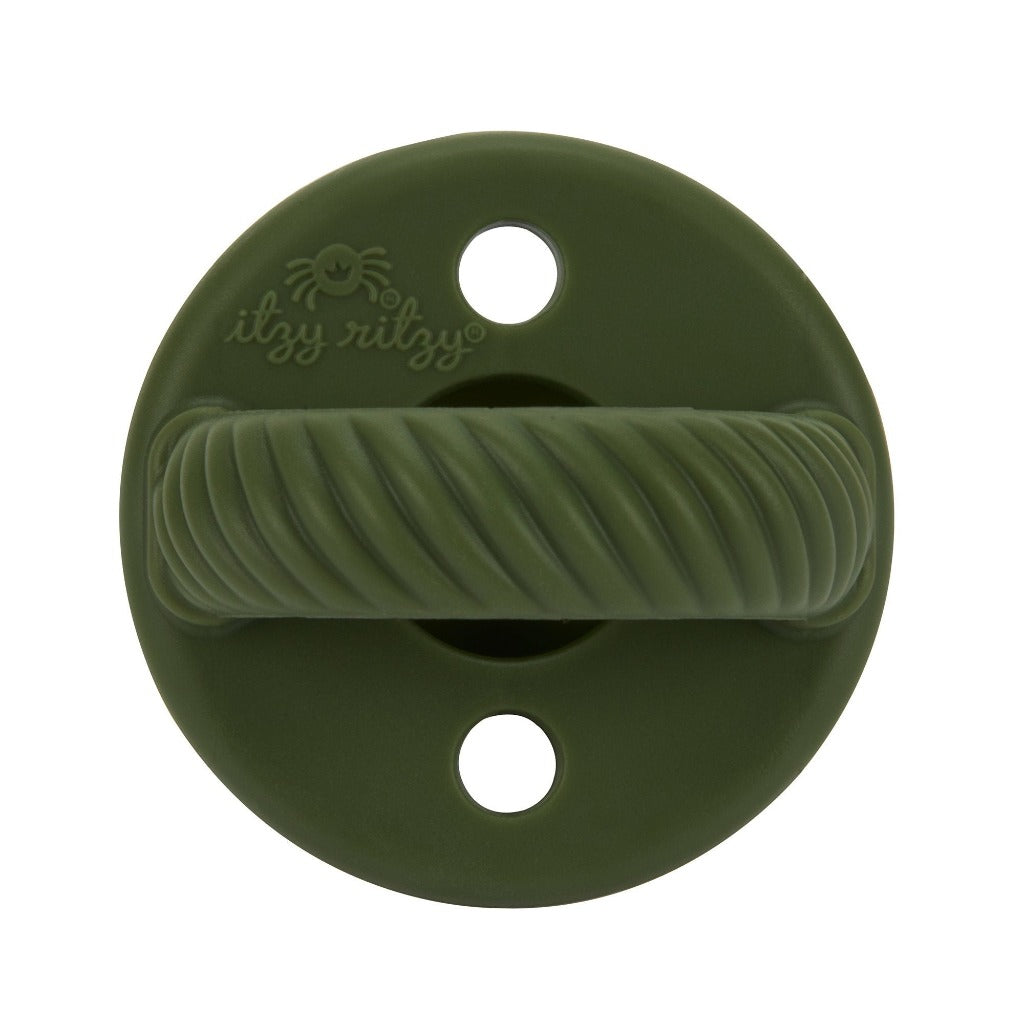
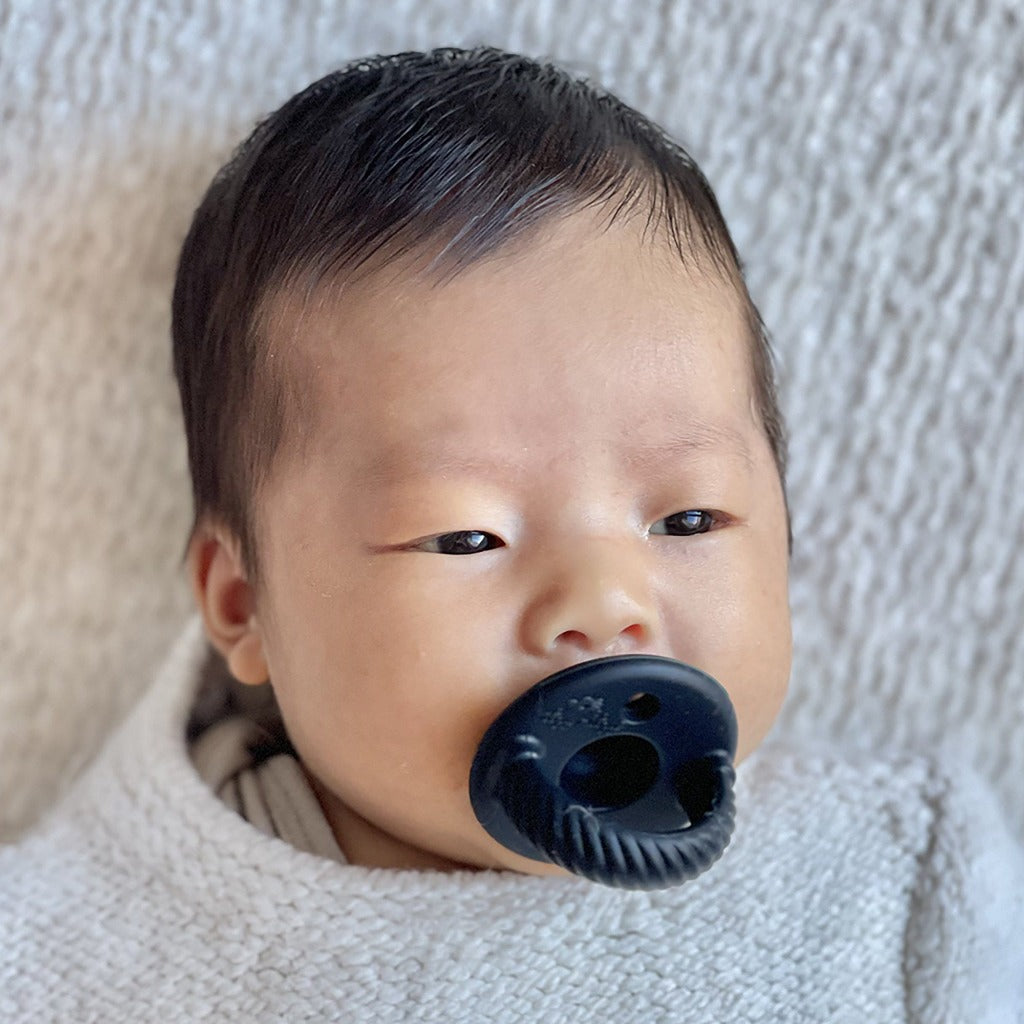
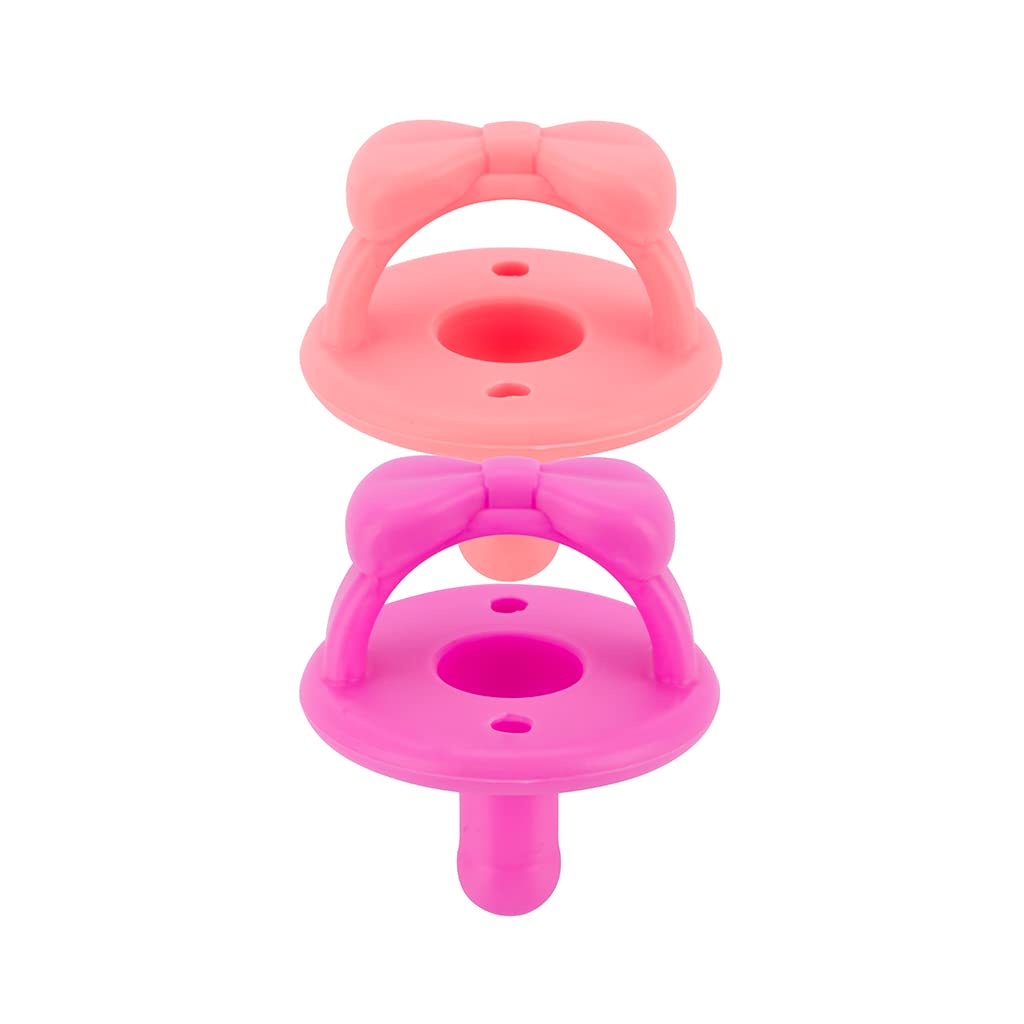
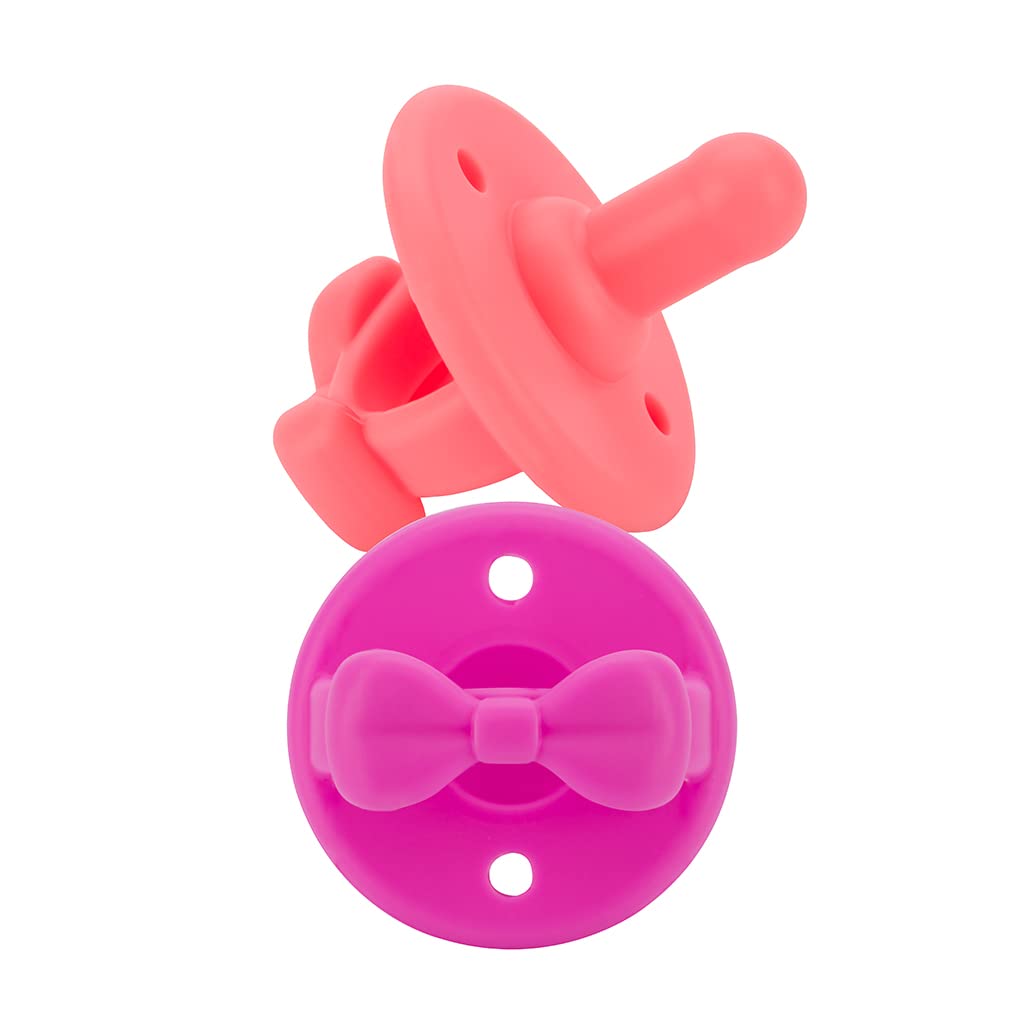
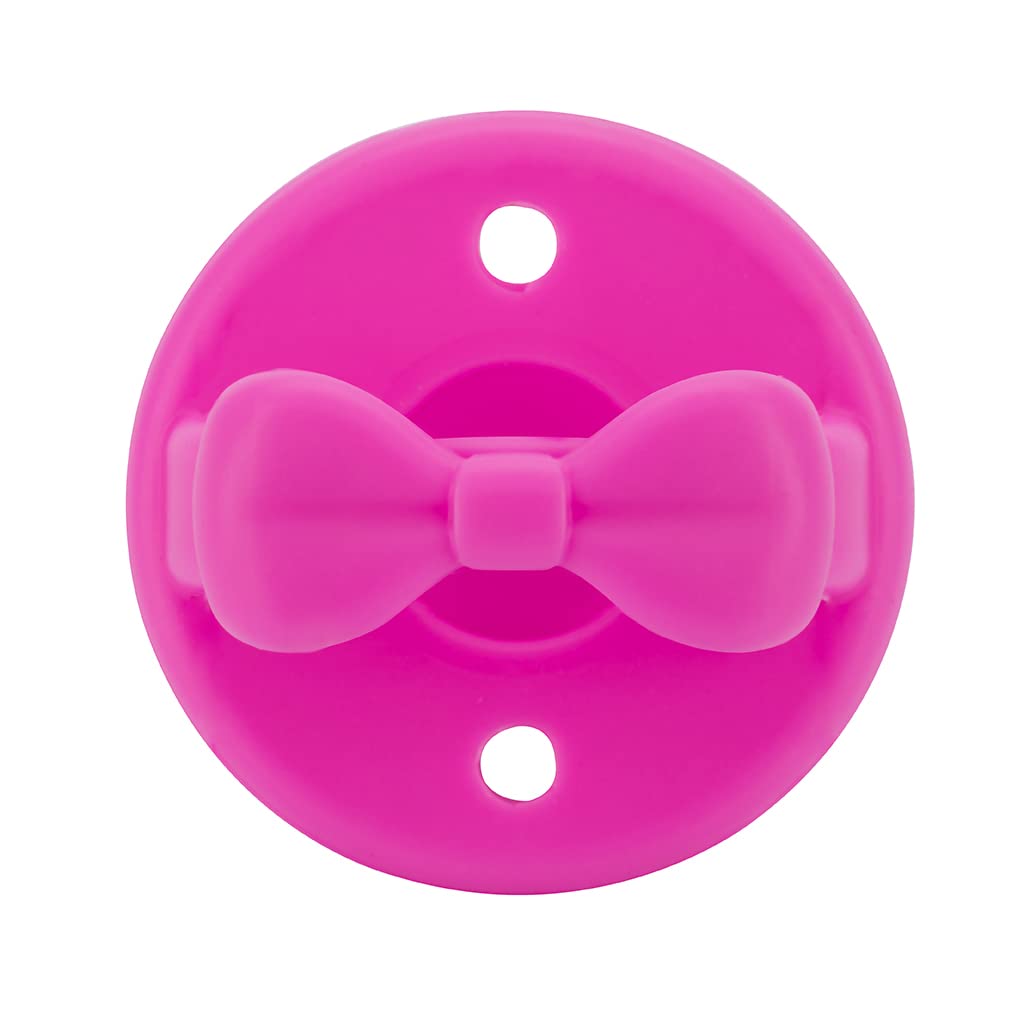
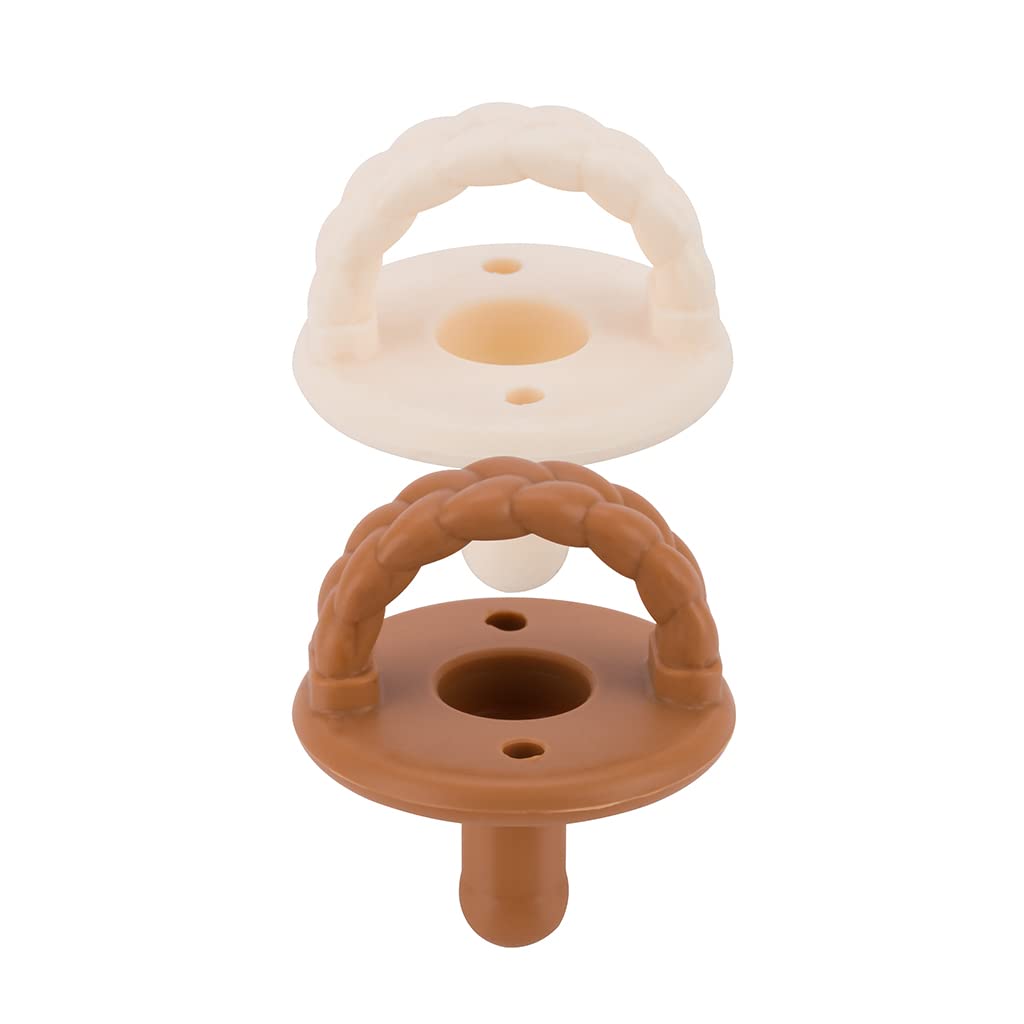
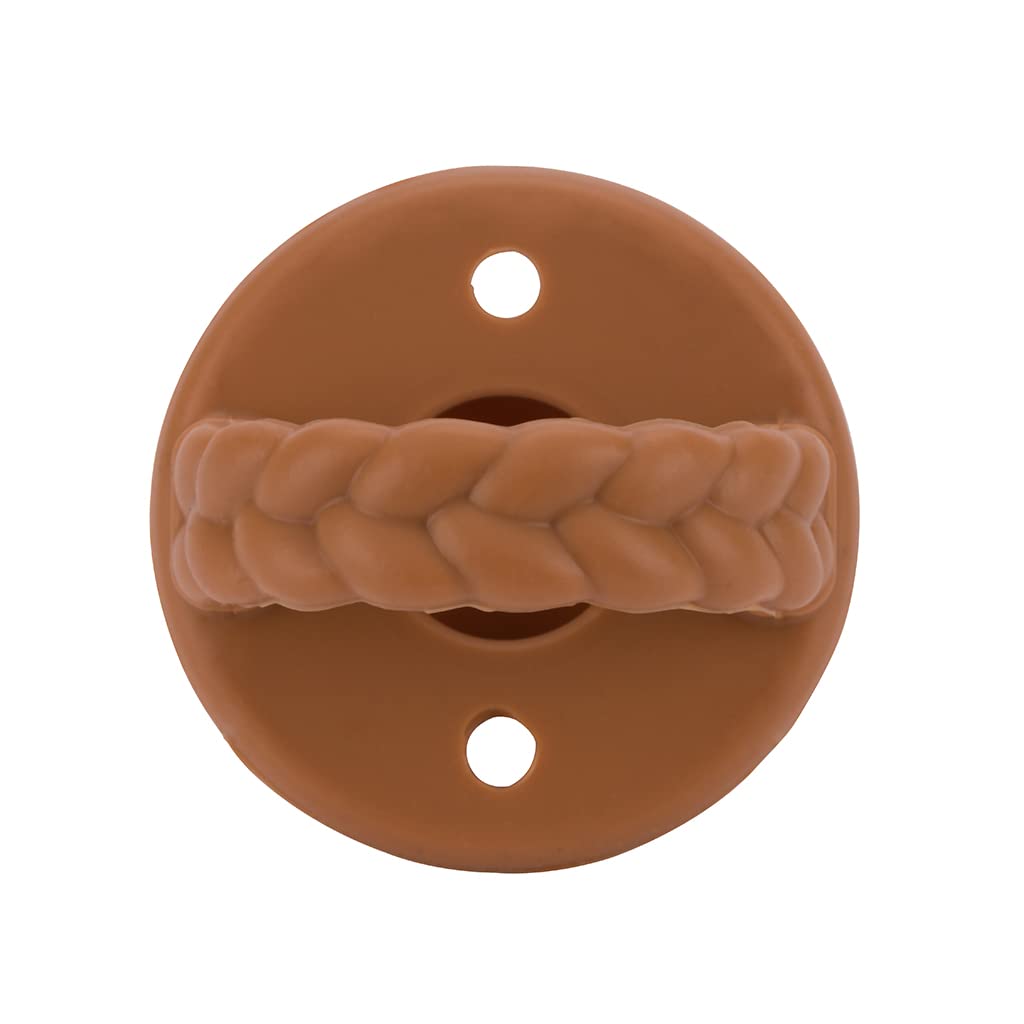
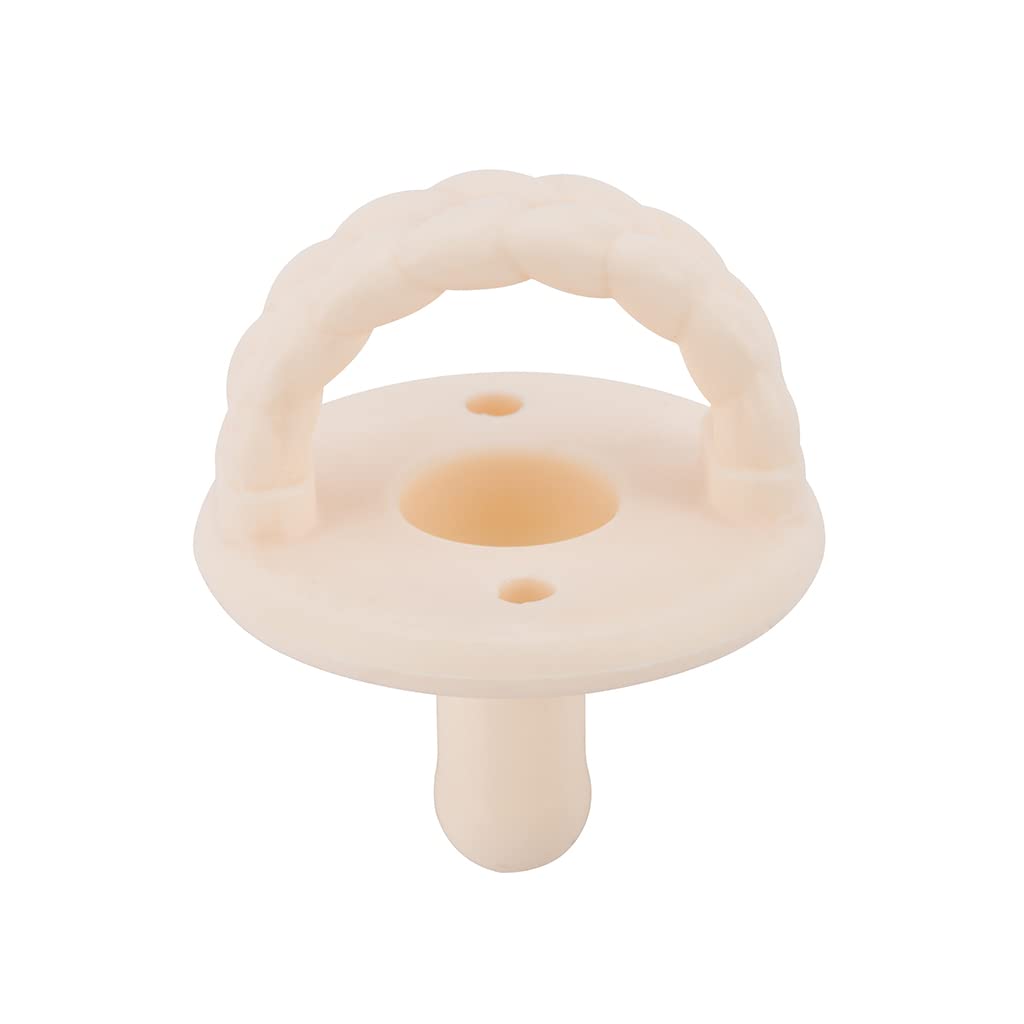
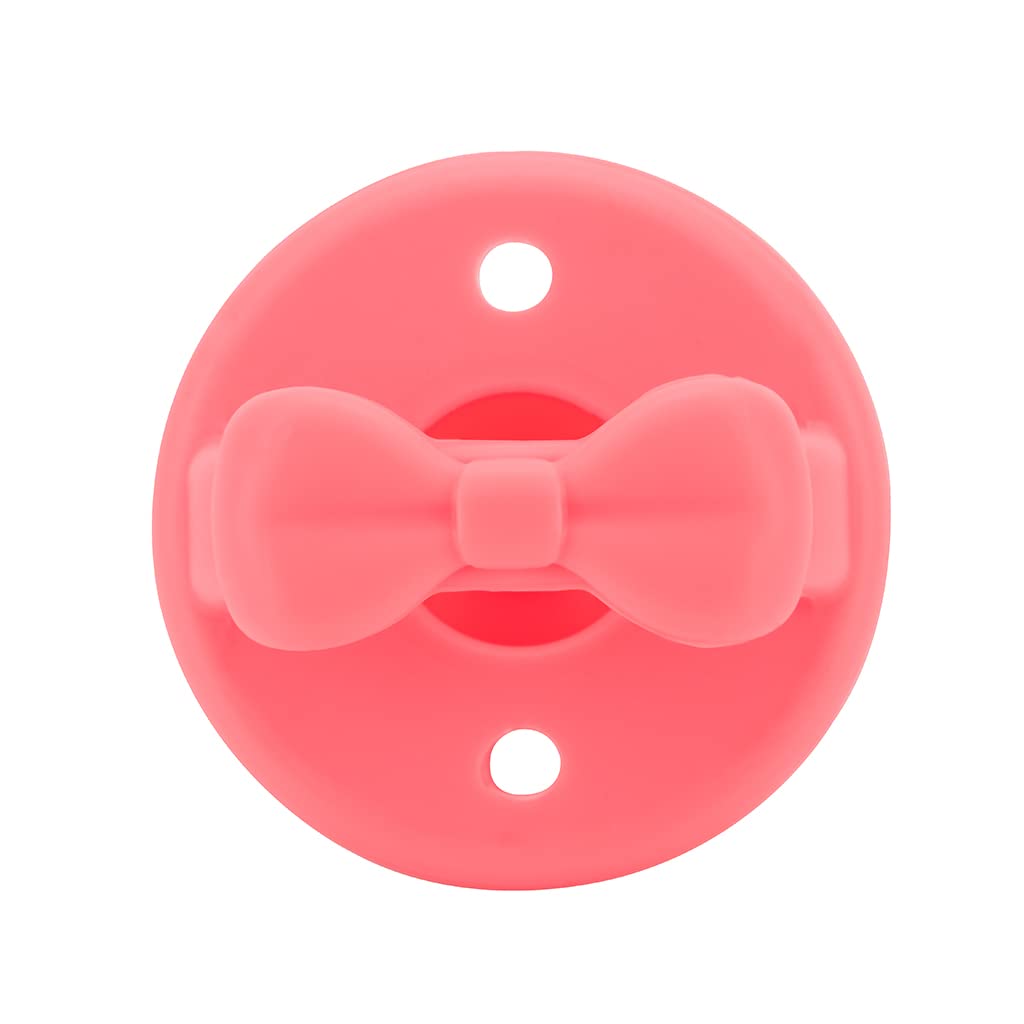
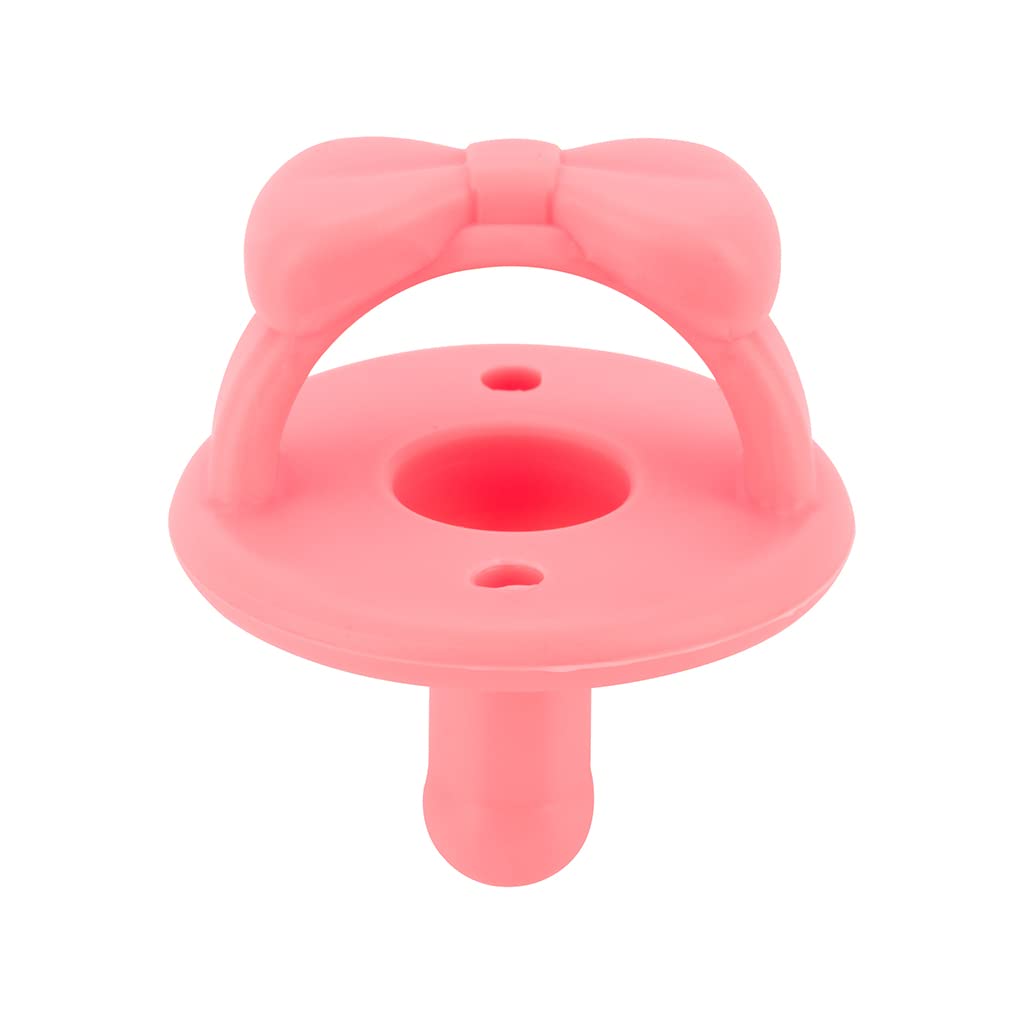
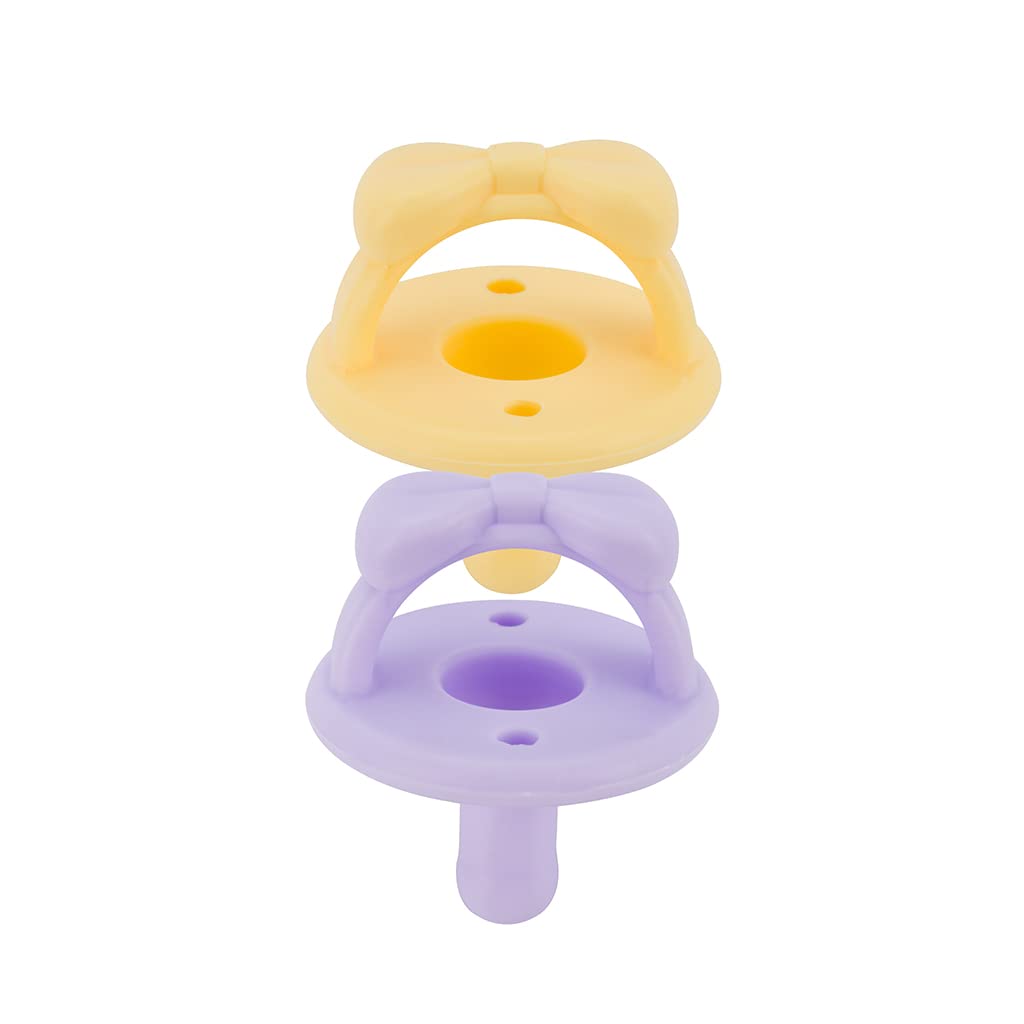
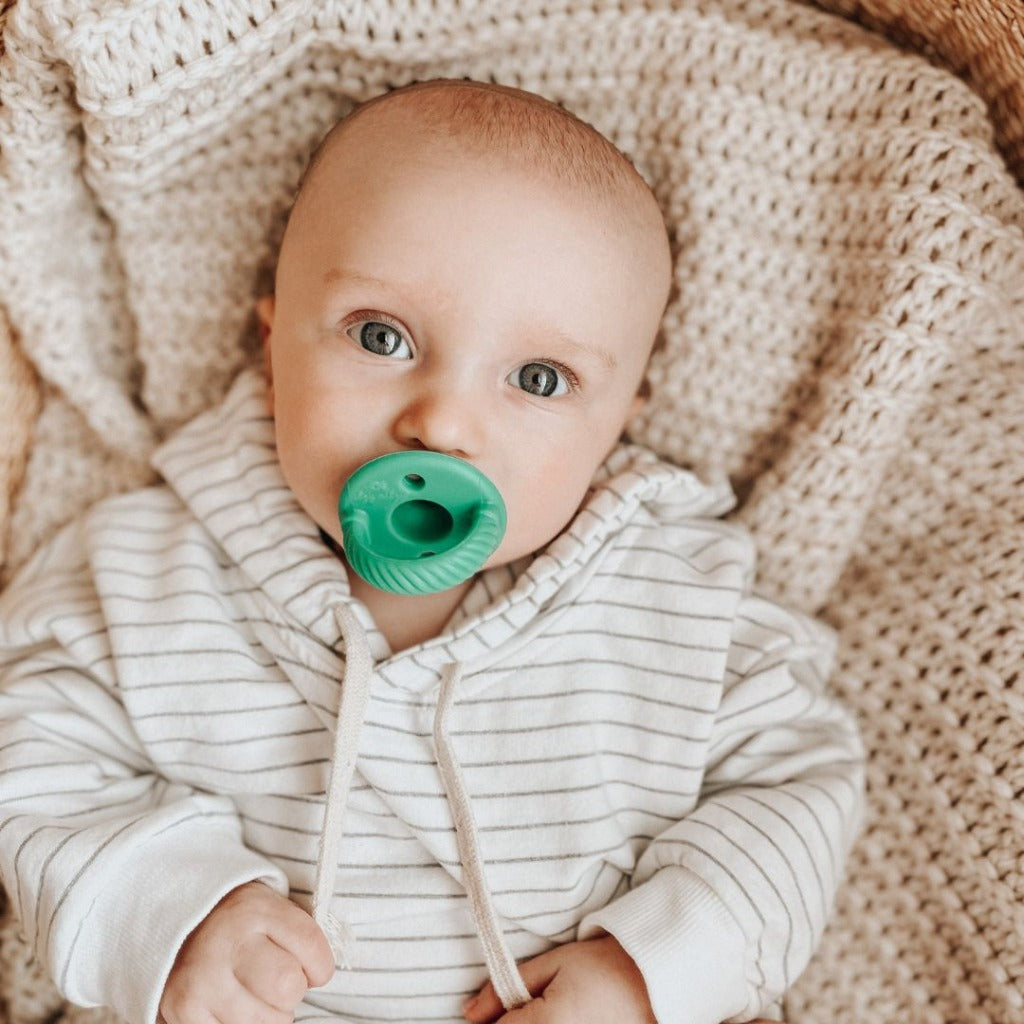
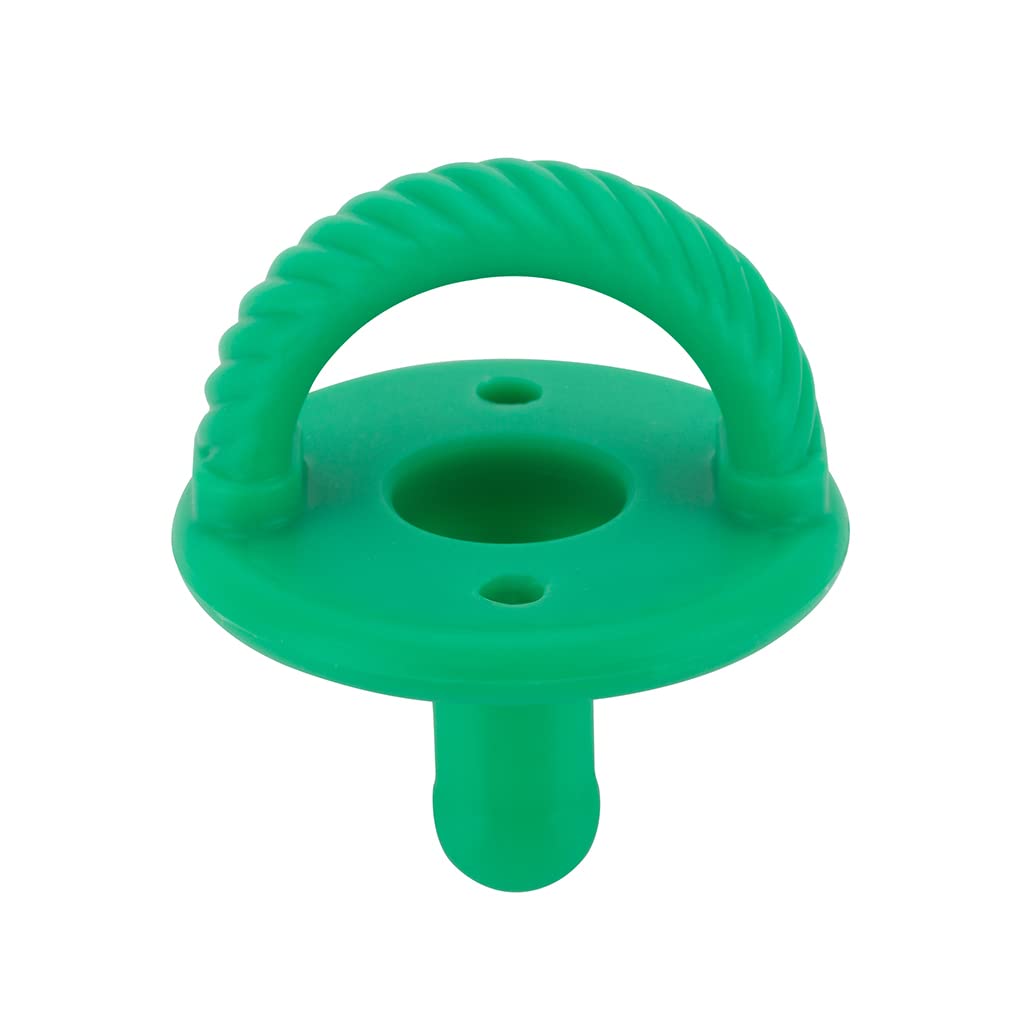
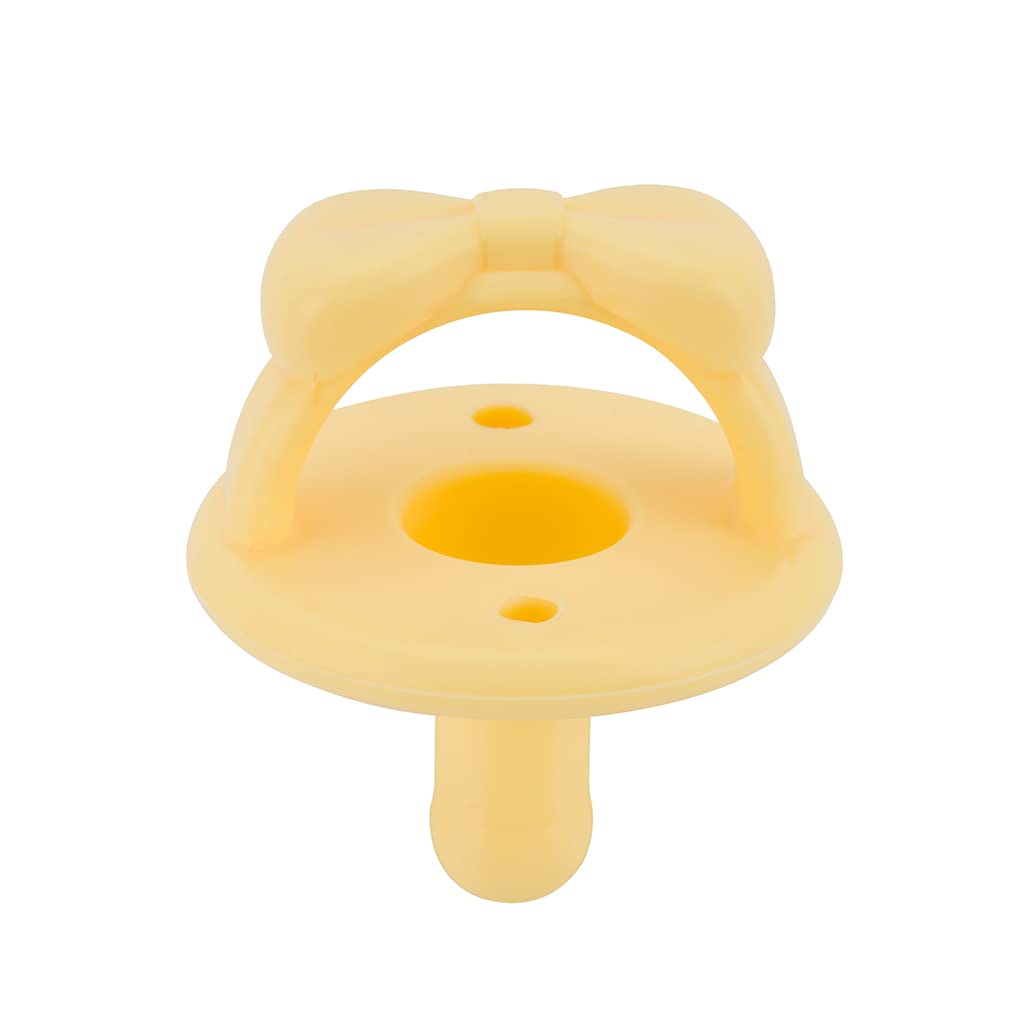
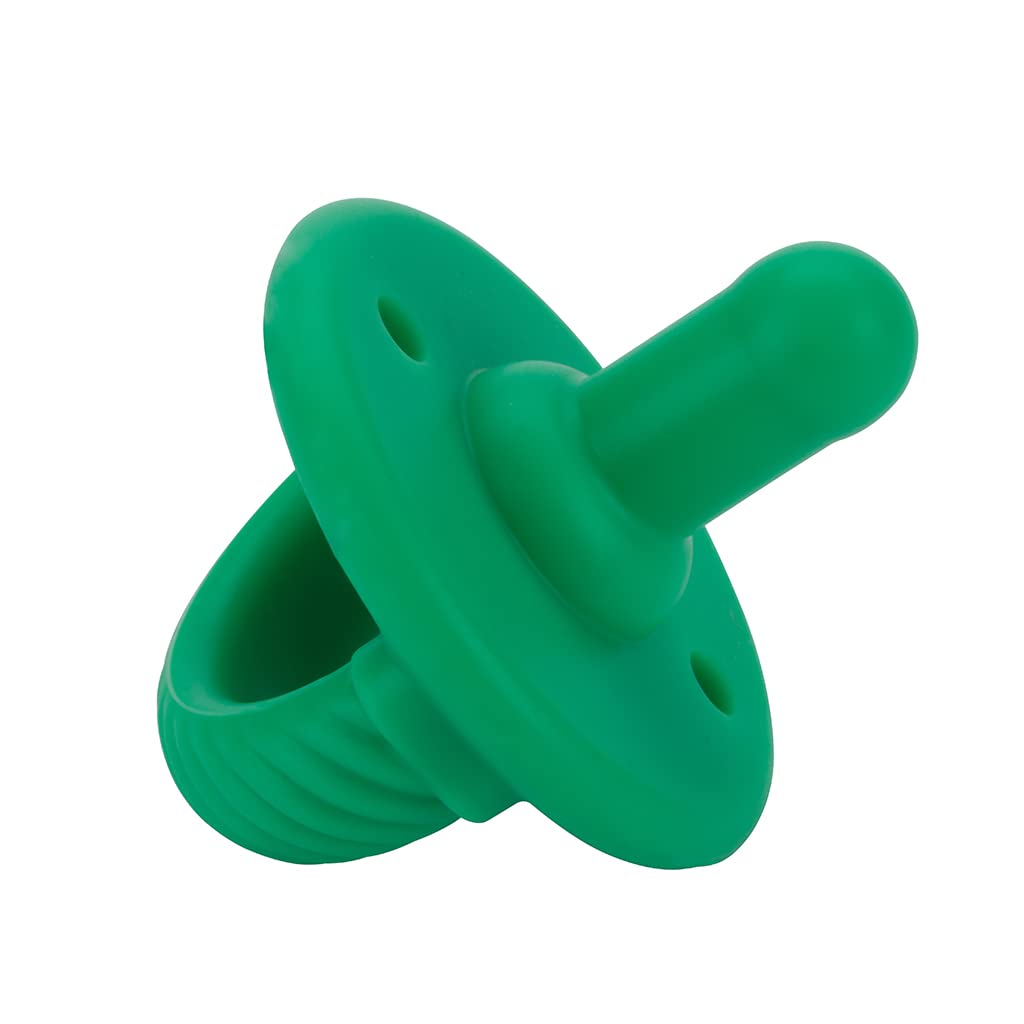
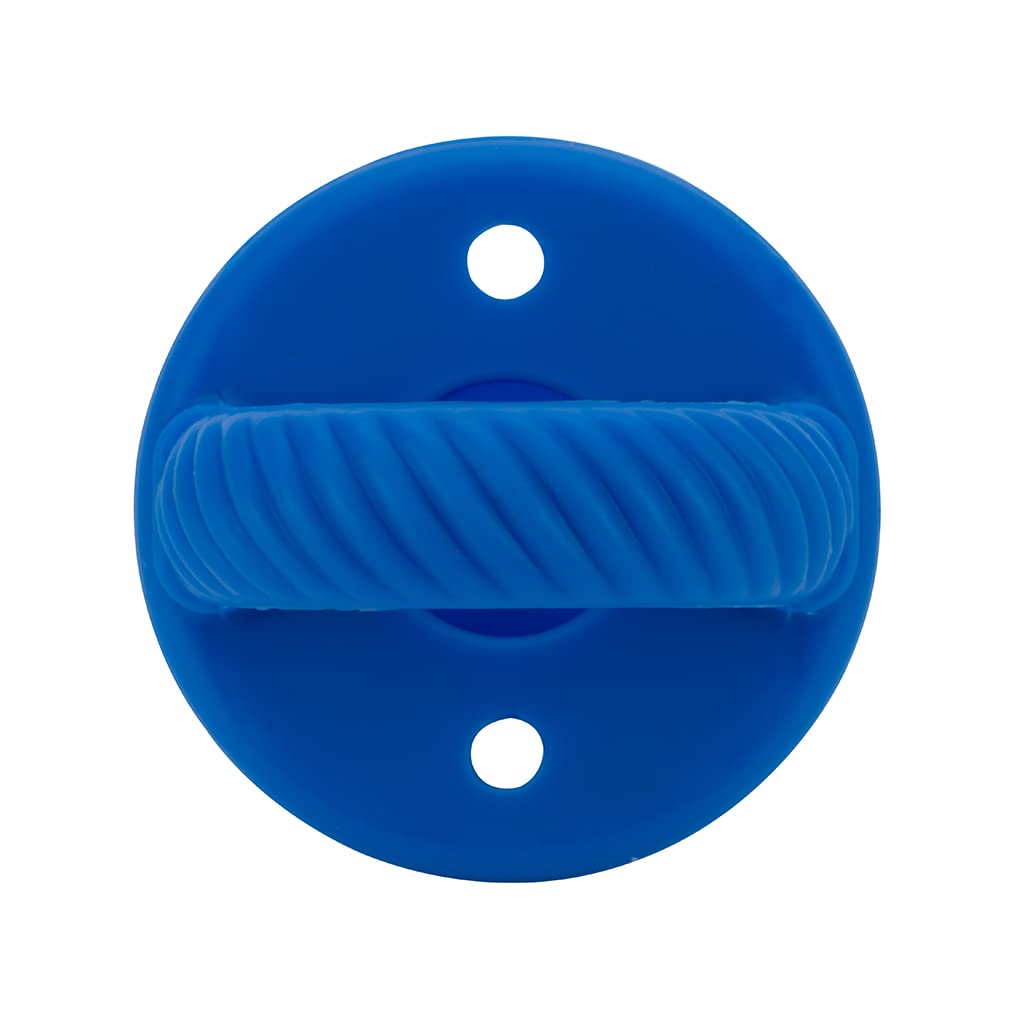
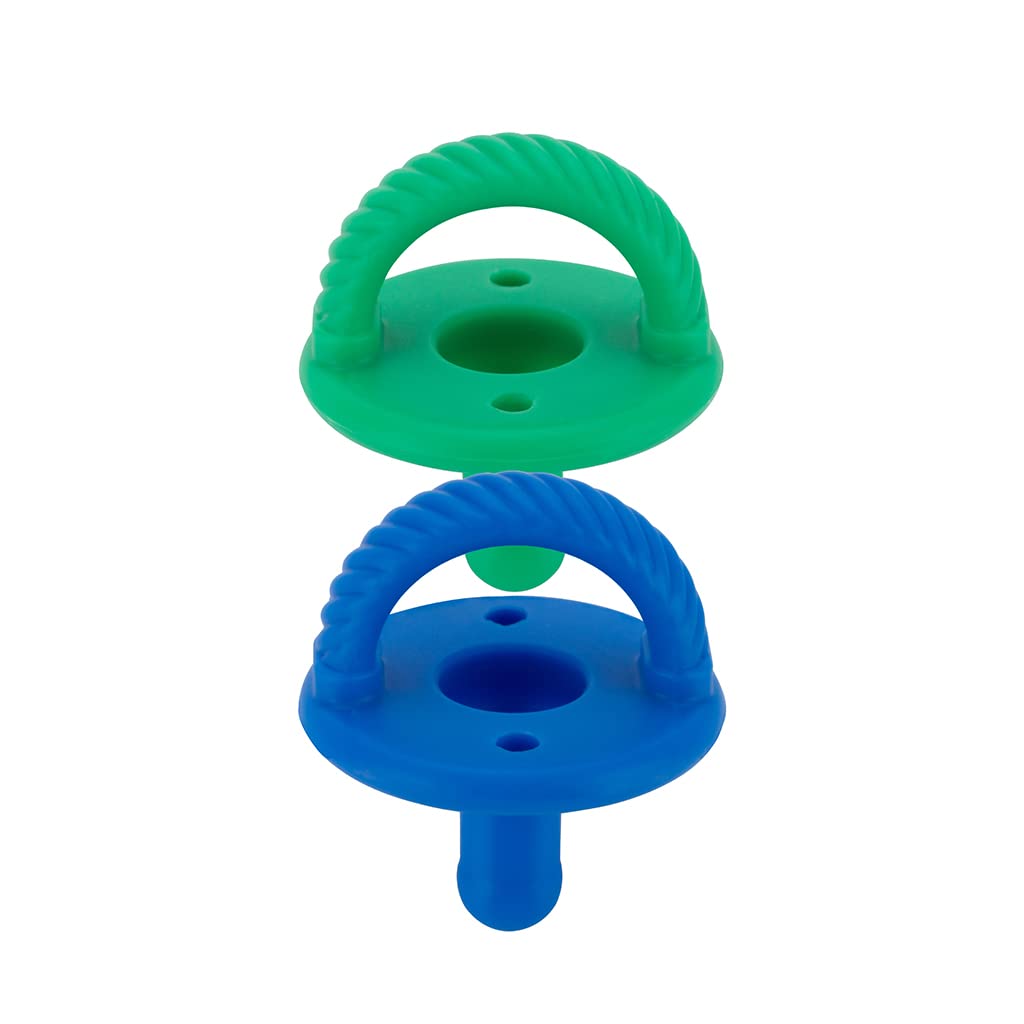
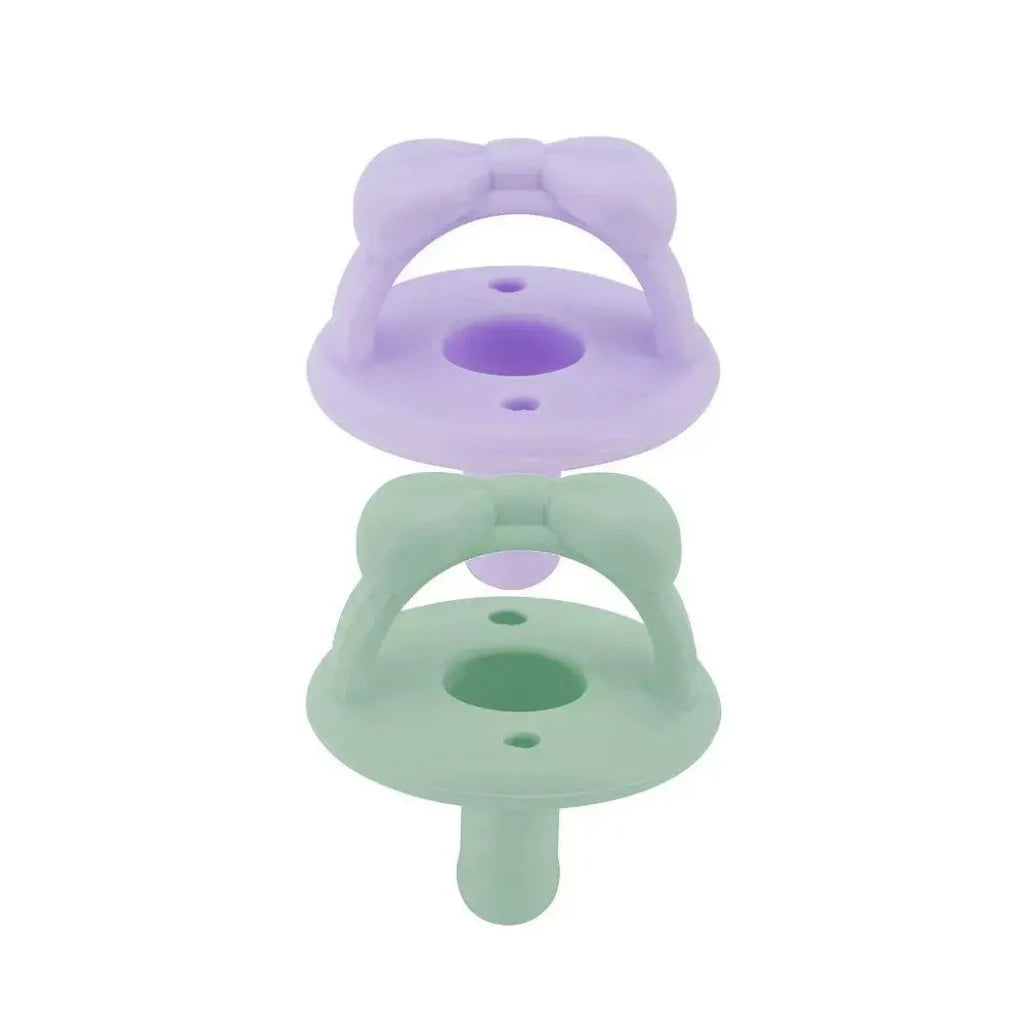
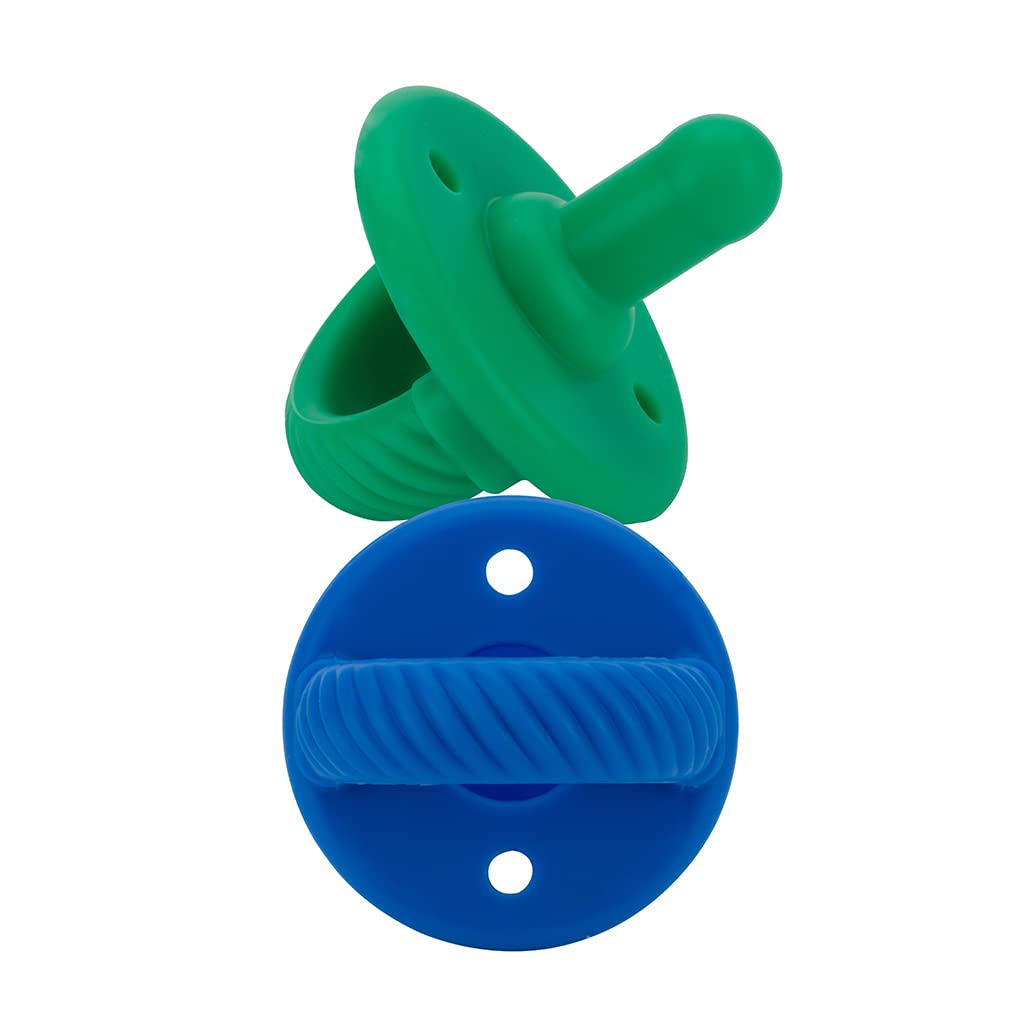
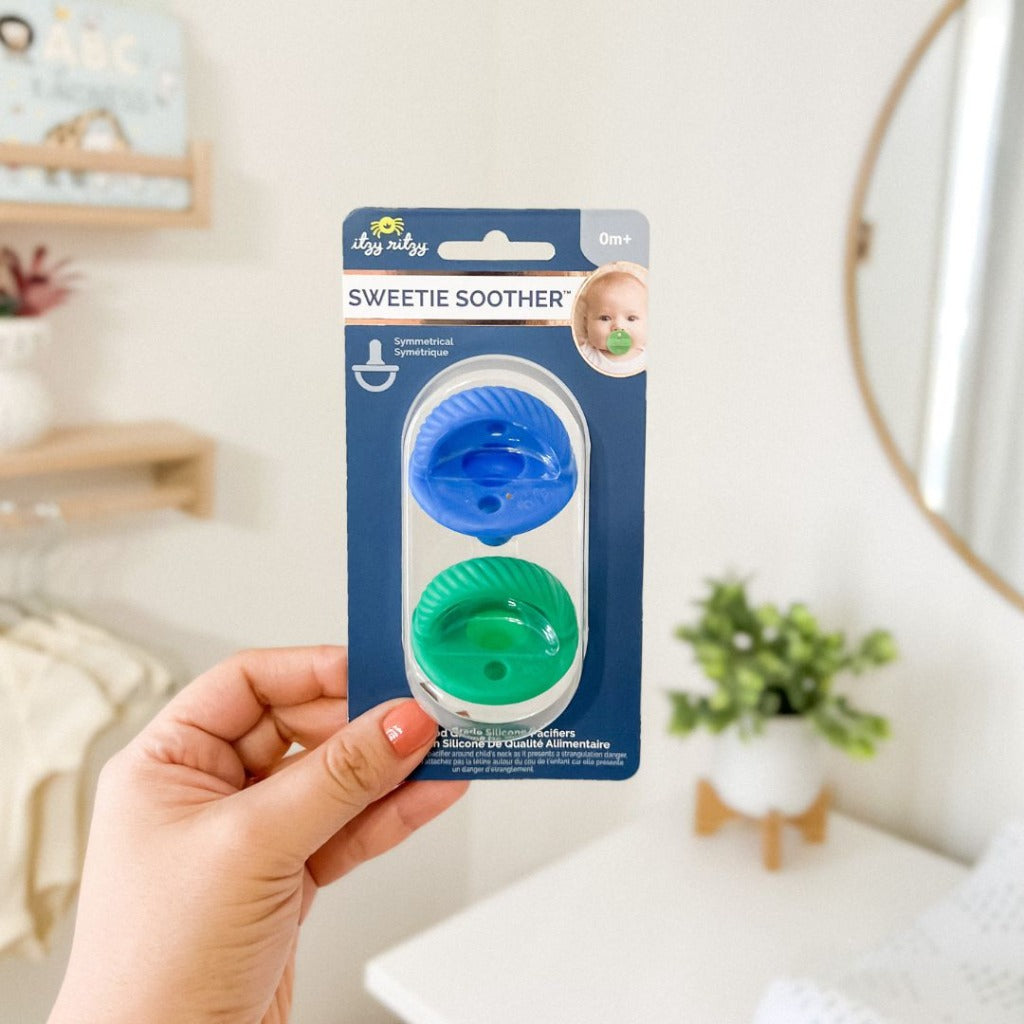
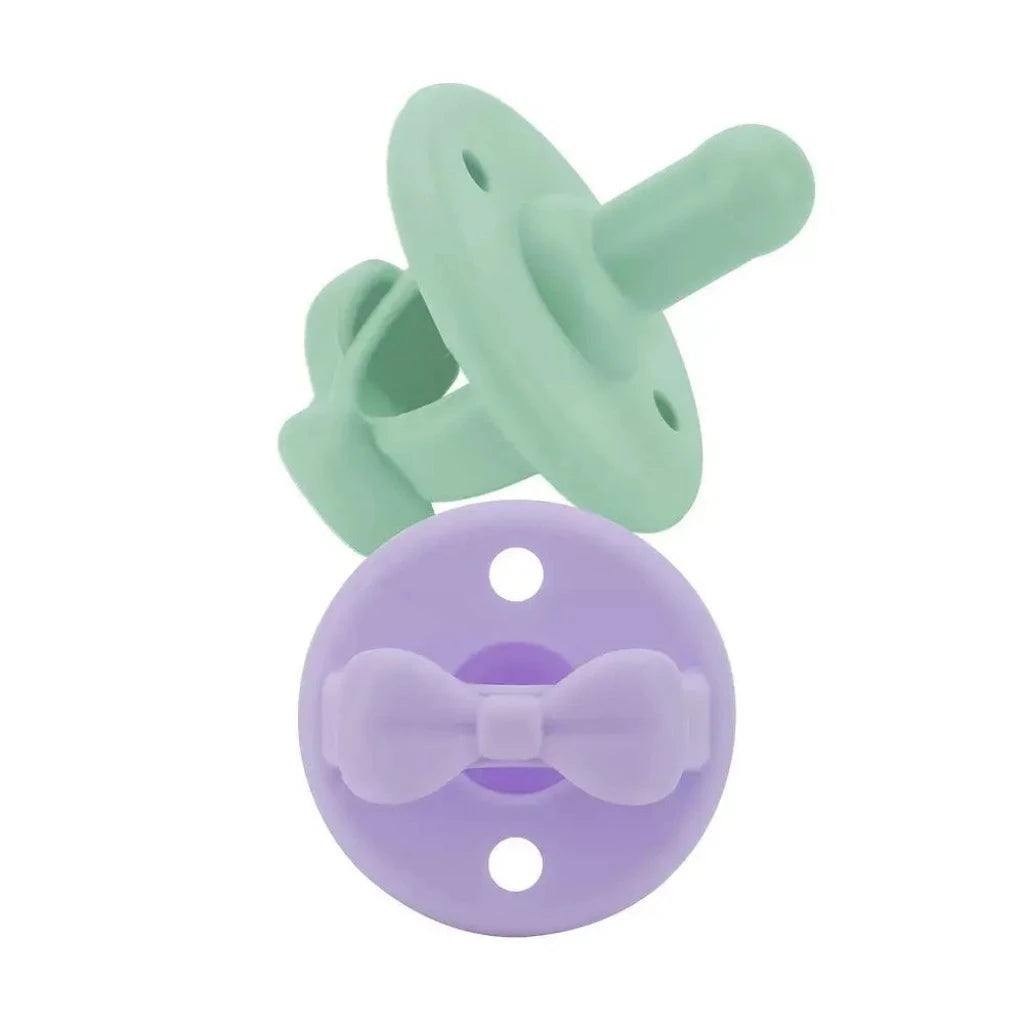
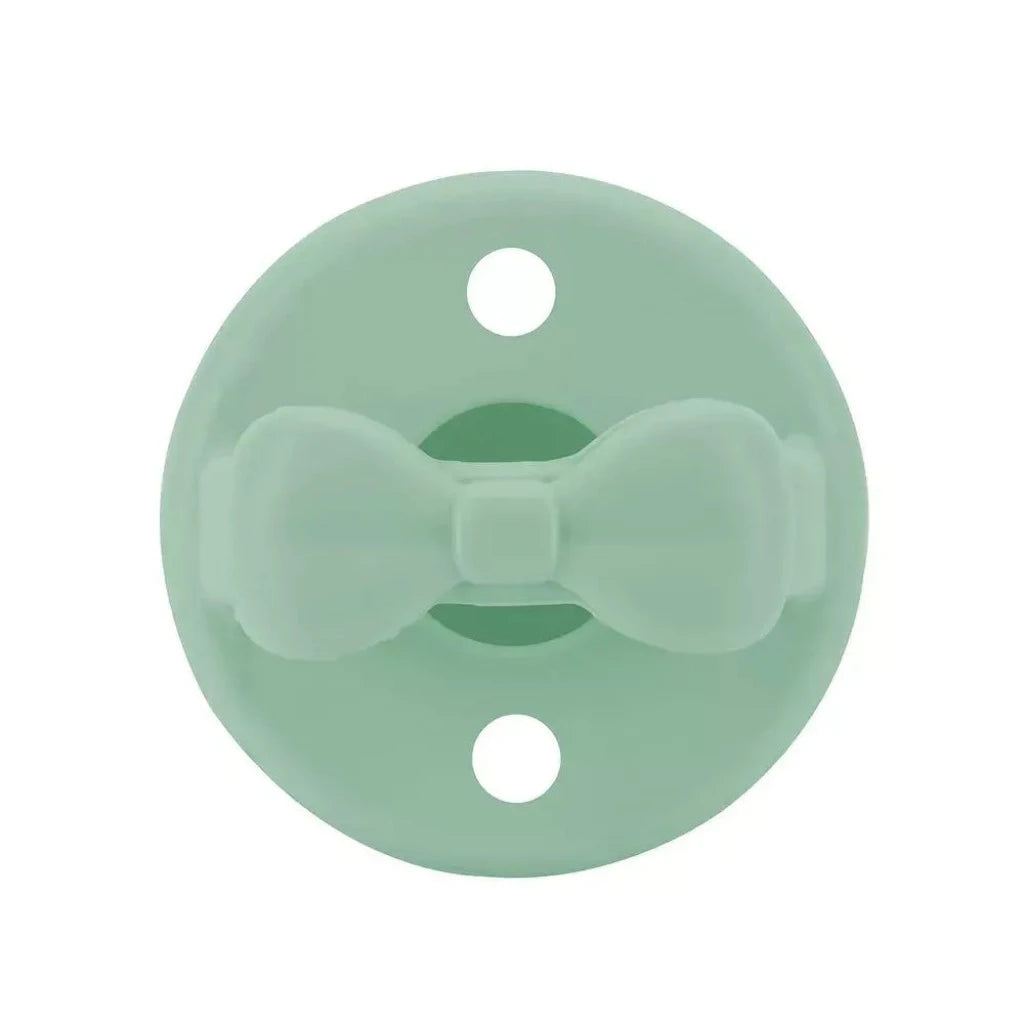
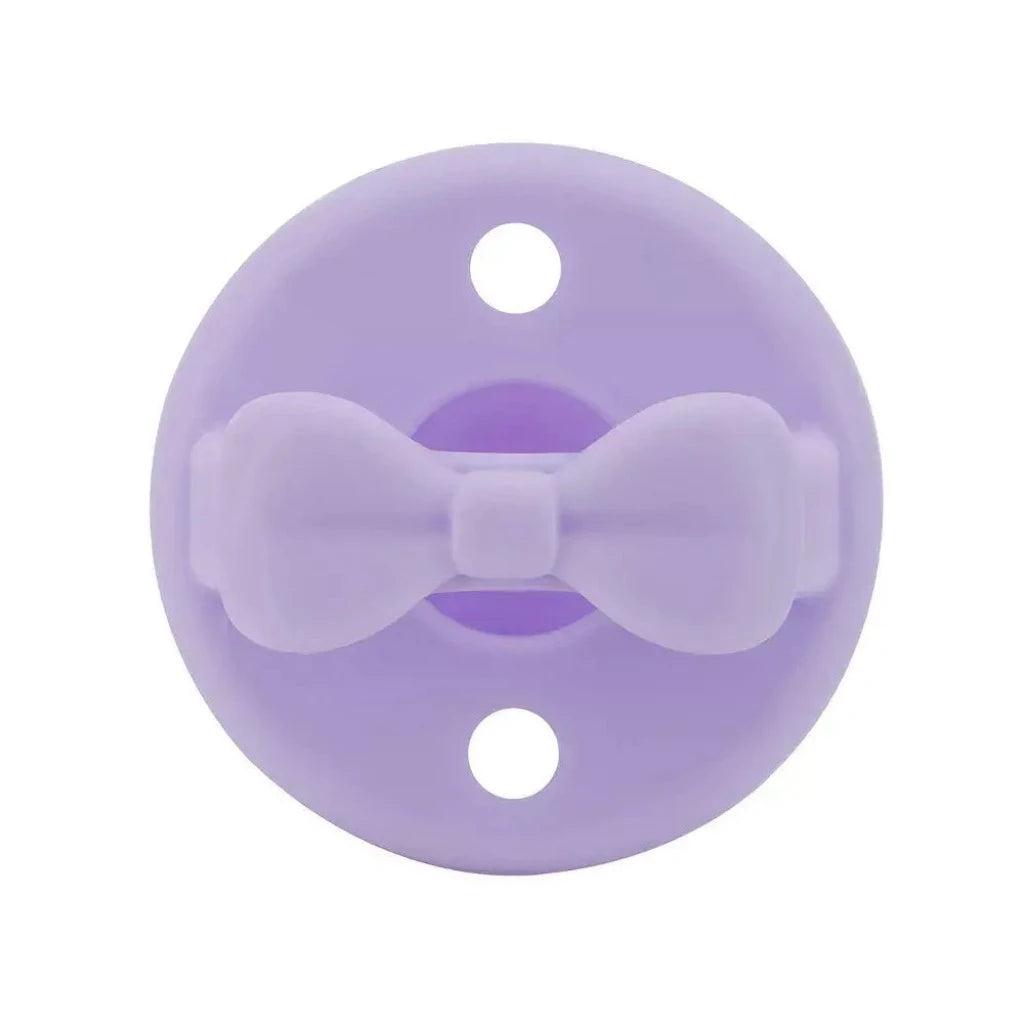
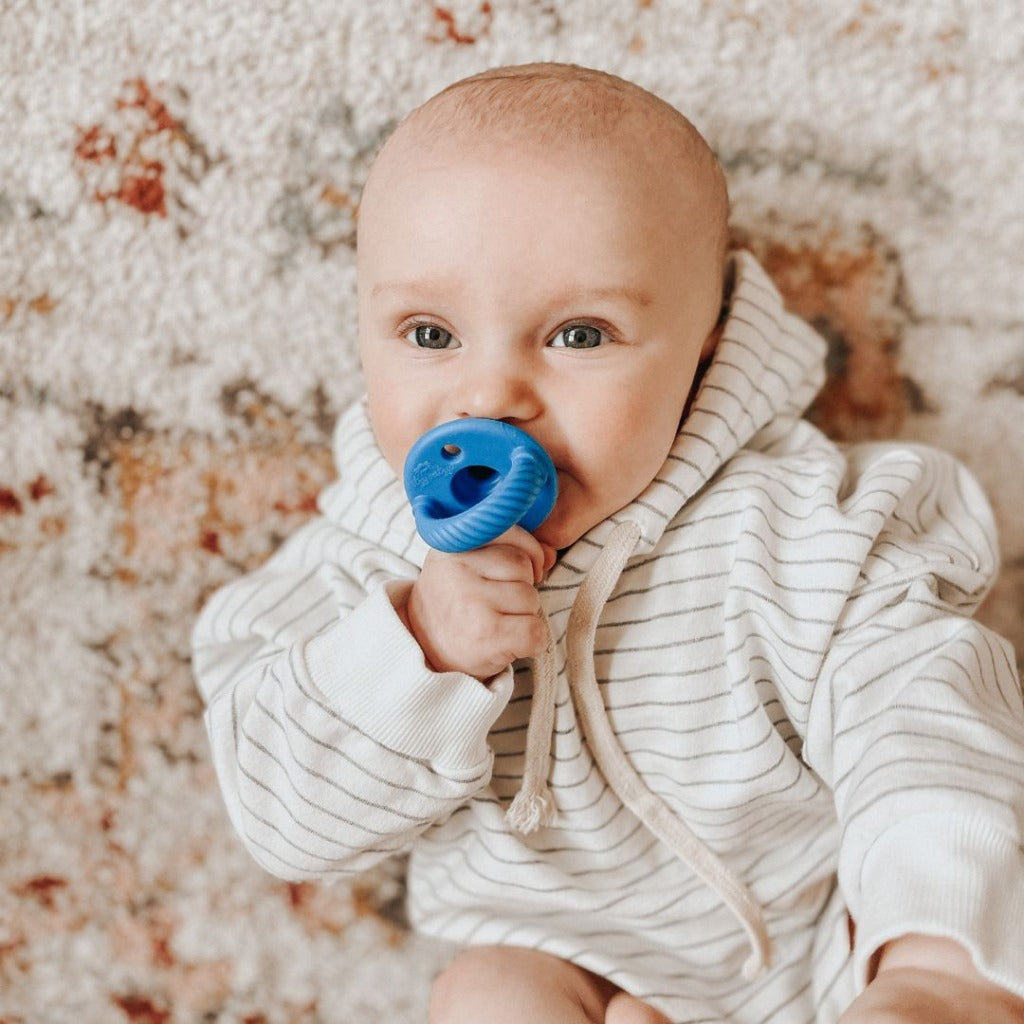
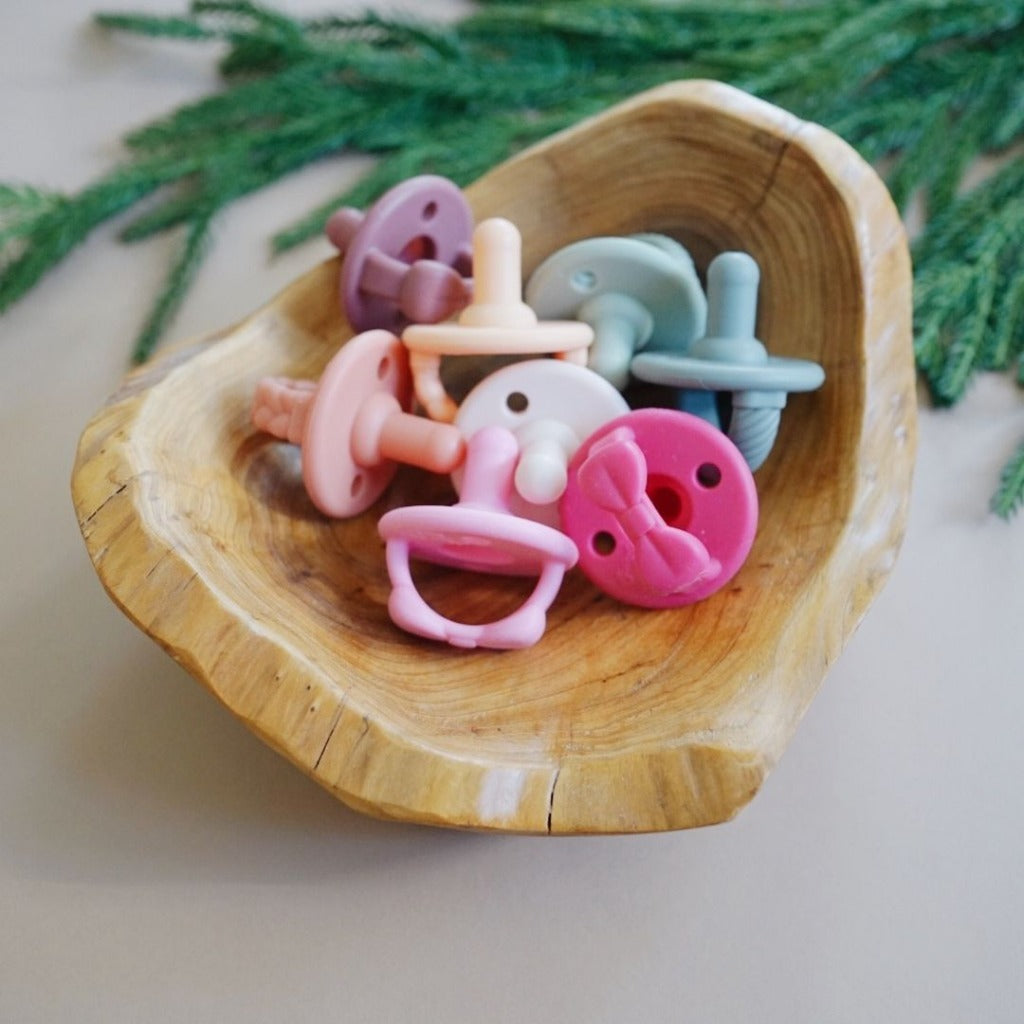
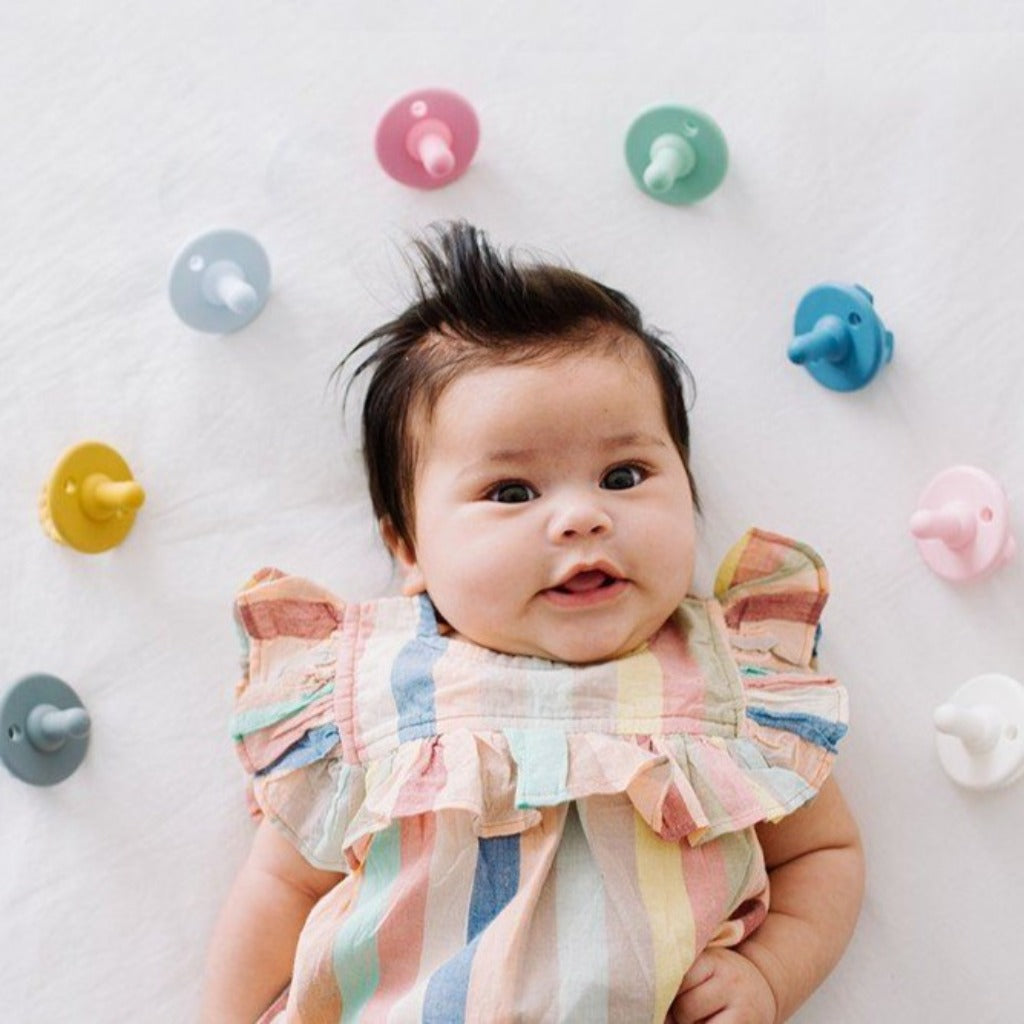
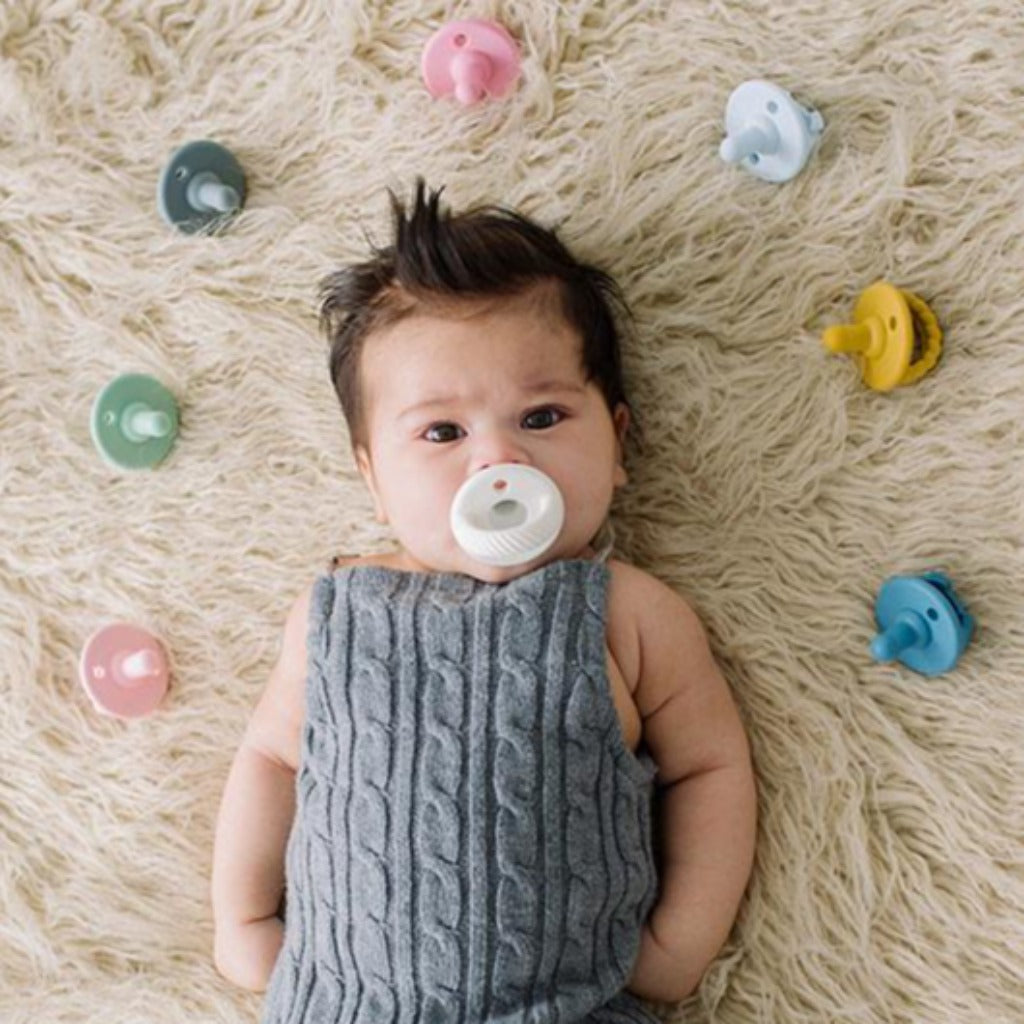
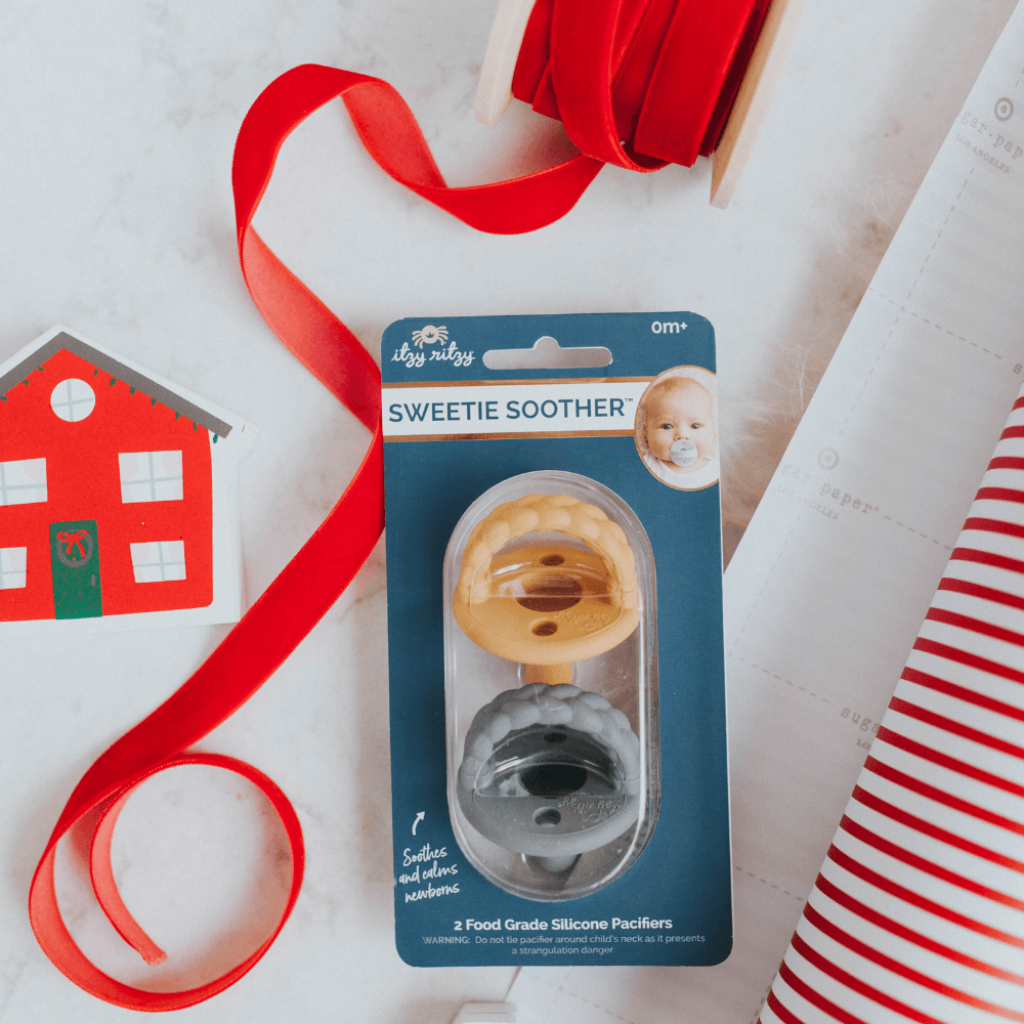

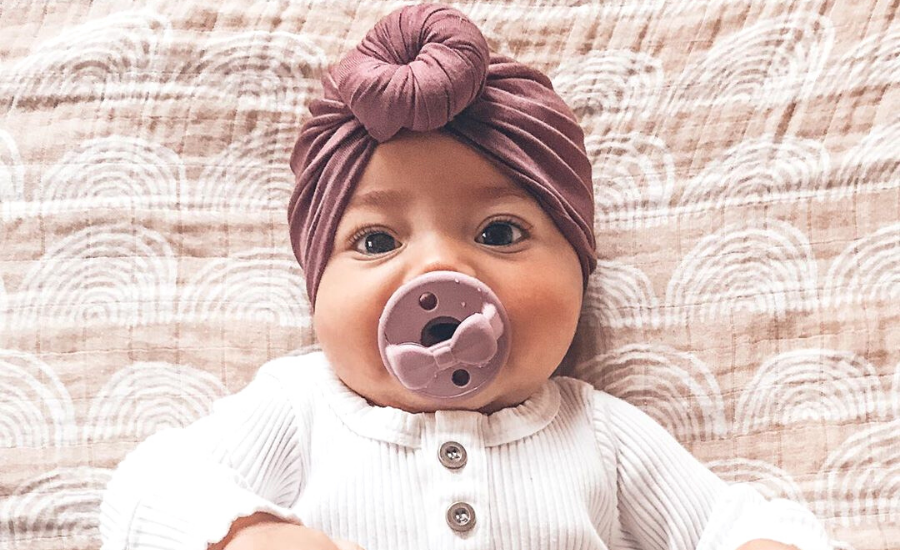
The Essential Pacifier to Soothe & Calm Your Sweetie
These 100% food grade silicone pacifiers come in multiple styles and in packages of two. Choose your favorite colors for your little cutie! PATENT PENDING
Faqs
What Are The Different Types Of Pacifiers?
Pacifiers come in a variety of shapes, sizes, and materials. The most common types are silicone, rubber, plastic, orthodontic, rounded, and one-piece.
Silicone
Silicone pacifiers are becoming increasingly popular among parents due to their many benefits.
This type is made from a soft, flexible material that is gentle on delicate baby skin. They are also:
- Easy to clean and can be sterilized in boiling water or a dishwasher.
- Free of BPA, PVC, and phthalates, making them a safer option for babies.
Rubber
Rubber pacifiers are made from natural rubber latex, a renewable resource.
However, rubber pacifiers can contain natural rubber latex, which can cause an allergic reaction in some babies. Therefore, it is important to check with your pediatrician before using a rubber pacifier.
When choosing, look for one that is BPA- and phthalate-free. This ensures your baby won't be exposed to harmful chemicals.
Plastic
Plastic pacifiers are popular among parents due to their affordability and durability.
They are usually made of polypropylene, a type of plastic that is non-toxic. Parents should look for one BPA-free.
Orthodontic
Orthodontic pacifiers are designed to help maintain the proper alignment of the baby’s teeth and jaw.
These pacifiers have a unique shape designed to fit into the baby’s mouth comfortably and naturally. The nipple of the pacifier is curved and slightly flattened to help the baby’s teeth and jaw properly align.
Orthodontic pacifiers are often made from silicone, rubber, or plastic and are available in various sizes and shapes. They are also available in one-piece and two-piece designs.
Rounded
Rounded pacifiers are designed to provide comfort and security for your baby.
They feature a nipple that is curved and round, allowing your little one to suck and latch on easily.
Additionally, the rounded shape of the nipple allows the baby's tongue to move freely, helping to avoid any potential jaw and teeth misalignment.
One-Piece
One-piece pacifiers are popular among parents as they are easy to clean.
They are made up of one single piece of material and are designed to fit comfortably in a baby's mouth.
What are the Advantages Of Using Pacifiers?
Pacifiers can be an incredibly useful tool for soothing and calming a baby, especially when feeling fussy. Not only can pacifiers provide comfort to babies, but they can also have many other advantages.
Sooth And Comfort Babies
Pacifiers can be a great way to soothe and comfort a baby. They can help reduce fussiness and provide a sense of security for babies.
- Pacifiers should be cleaned regularly and replaced regularly.
- It is important not to dip the pacifier in honey, sugar, or other sweeteners, as this can lead to tooth decay.
- It is also important to ensure the pacifier is clean before giving it to the baby. Pacifiers should be washed with warm, soapy water before and after each use. If the pacifier is dropped on the floor, it should be washed again before giving it back to the baby.
- If your baby is agitated or upset, it may be best to wait until they are calm before introducing the pacifier. It is also important to make sure your baby is not over-tired or hungry when introducing the pacifier.
- Pacifiers should not be used to replace meals or snacks or used to quiet when crying.
How To Choose The Right Pacifier For Your Baby?
Choosing the right pacifier for your baby can be a daunting task. With so many different types of pacifiers on the market, it can be difficult to decide which one is best for your little one. To help you make the right decision, here are some tips and guidelines to consider when selecting a pacifier.
Size
Pacifiers and soothers come in different sizes, ranging from 0-6 months to 6+ months. The size of should correspond to the size of your baby’s mouth.
You can also measure the inner diameter of the nipple to make sure it is the right size for your baby.
Shape
Rounded pacifiers are the most common shape and are designed to fit comfortably in your baby's mouth. When choosing the right shape for your baby, consider their age, size, and preference.
Material
Silicone is the most common material used for pacifiers and is a great choice for babies, as it is soft, durable, and easy to clean. It also does not contain any harmful chemicals.
Nipple Type
Nipple types come in a variety of shapes and sizes: orthodontic, symmetrical and cherry-shaped. Orthodontic nipples are shaped like a flattened dome, while rounded nipples are more traditional, with a round shape. Both nipples are designed to fit comfortably in your baby's mouth.
Orthodontic nipples are designed to help promote proper oral development and jaw alignment, while rounded nipples are designed to be more comfortable and natural-feeling for your baby.
If you're unsure which nipple type is right for your baby, consult your pediatrician or a lactation consultant for advice.
Why do babies need pacifiers?
Babies need pacifiers for a variety of reasons. Pacifiers can provide comfort by helping them to self-soothe and feel secure.
Do dentists recommend pacifiers?
Dentists recommend that pacifiers be used for no more than 4-6 months or until the child is 12-18 months old. Pacifiers should be used in moderation and discussed with your child’s dentist as they grow.
Is a pacifier good or bad for babies?
Pacifiers can benefit babies as they provide comfort. However, pacifiers should be used in moderation and not used as a substitute for other forms of comfort.
Is it okay to give a pacifier after feeding?
This largely depends on your personal preference. Some prefer to give a pacifier after feeding to provide comfort if fussy. However, again, this depends on your baby and overall preference.
How long should a baby use a pacifier?
It is generally recommended that pacifiers are used for no more than 4-6 months or until the child is 12-18 months old. You can also discuss pacifier use with your baby’s pediatrician.
Are a pacifier and a soother the same?
Yes, a pacifier and a soother are the same. The difference in name comes down to region and preference.
Is a soother safe for newborns?
Yes, soothers are generally safe for newborns. However, it is best to consult with your pediatrician first to discuss best practices for your baby.
How long can a baby use a pacifier in a day?
It is generally recommended that pacifiers be used for no more than 4-6 hours daily. This is recommended to allow your baby’s mouth and teeth time to develop as they grow.


